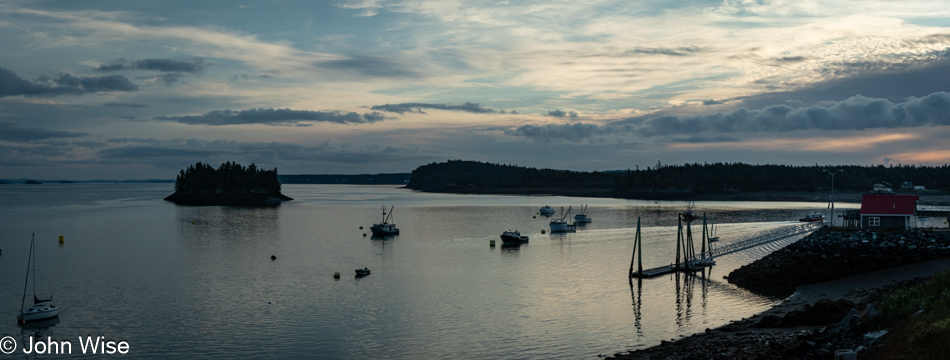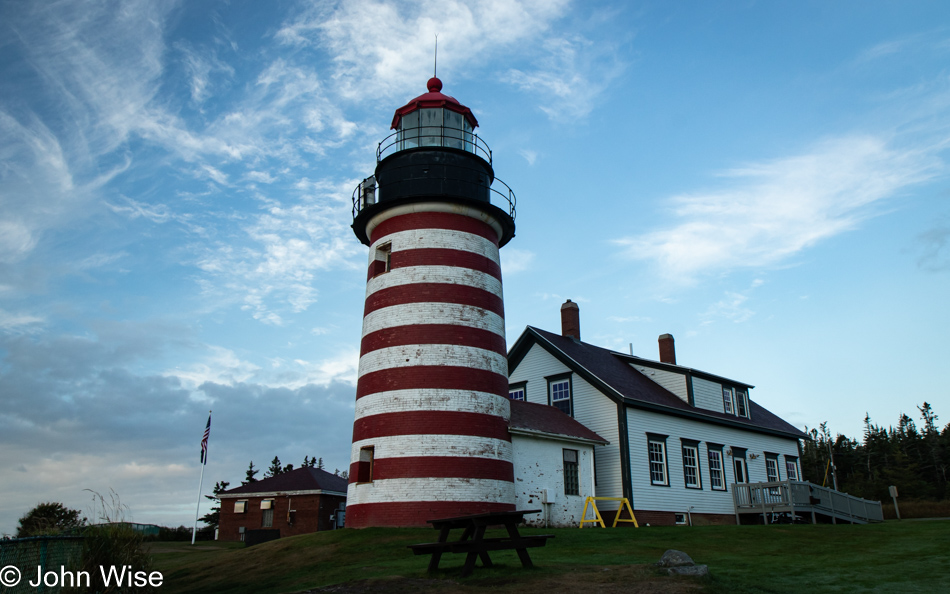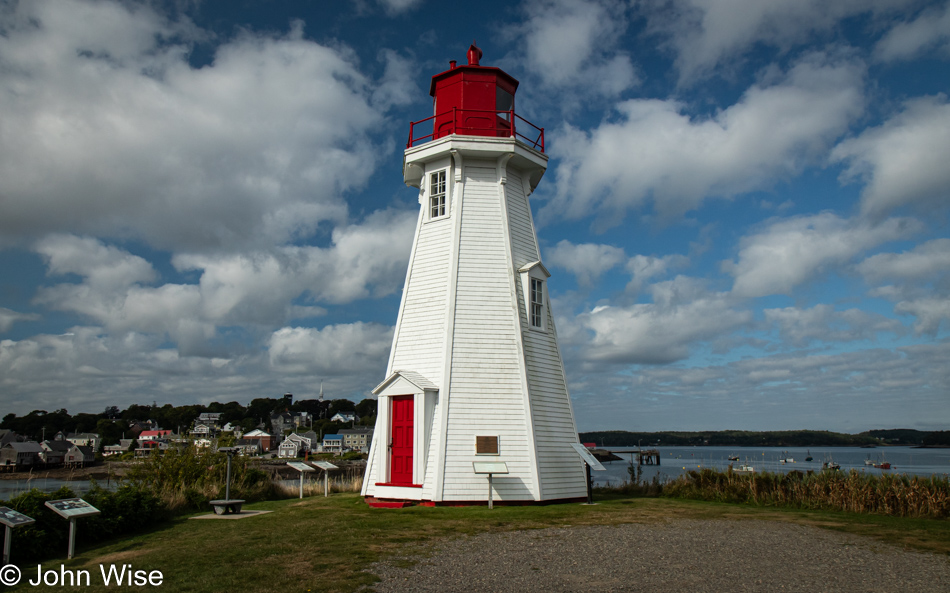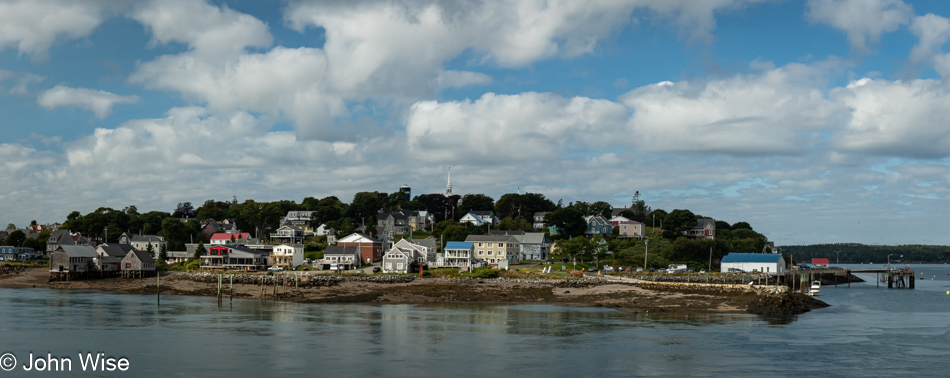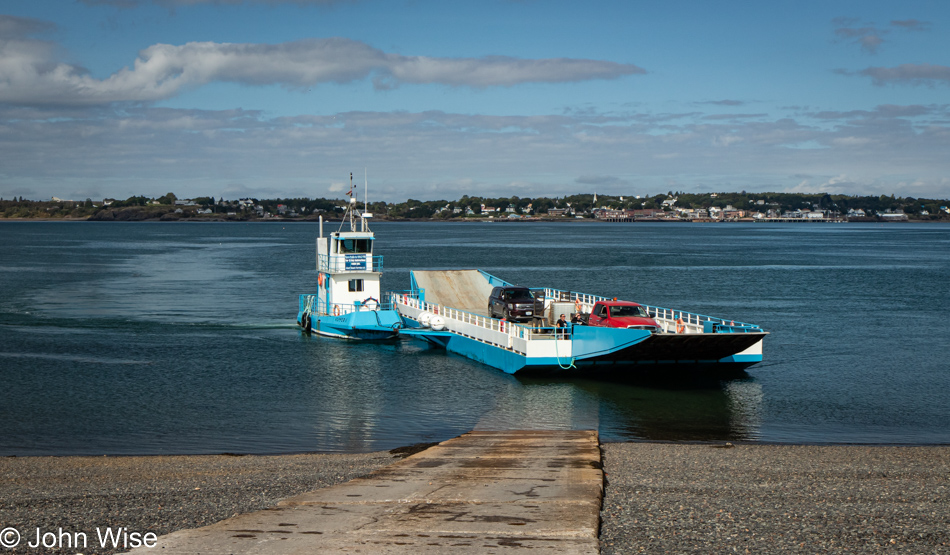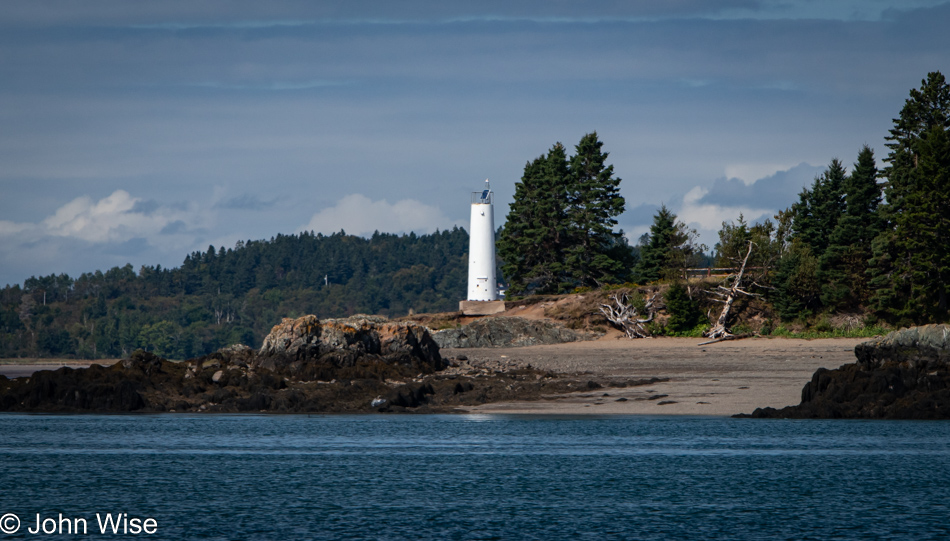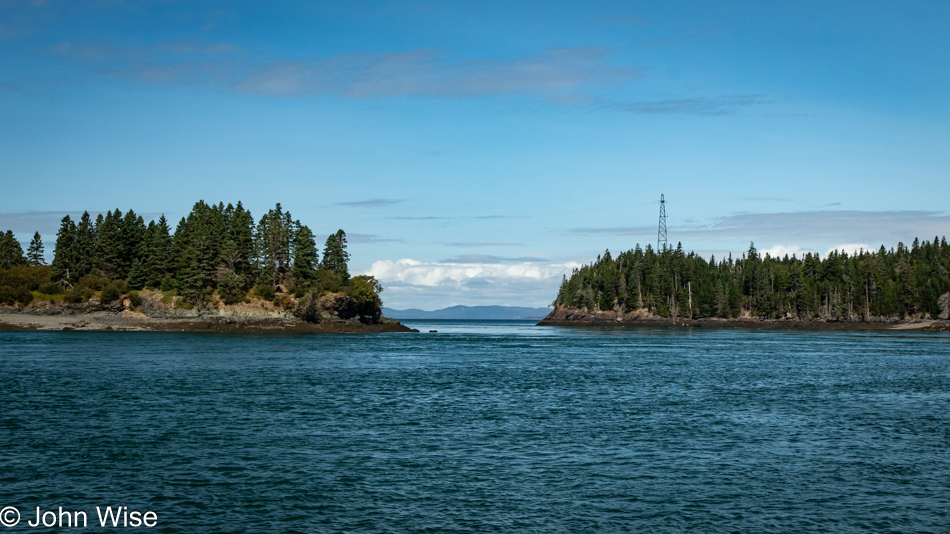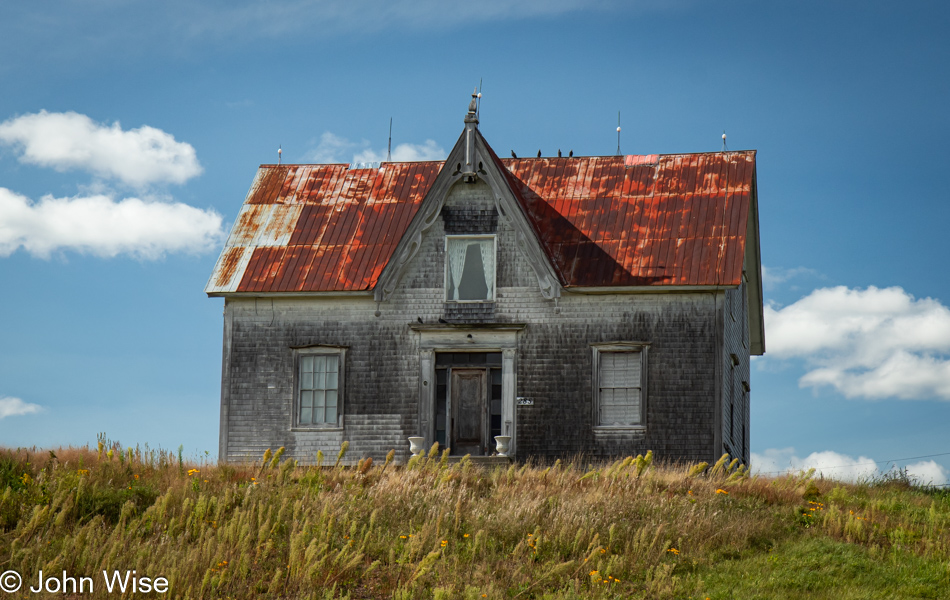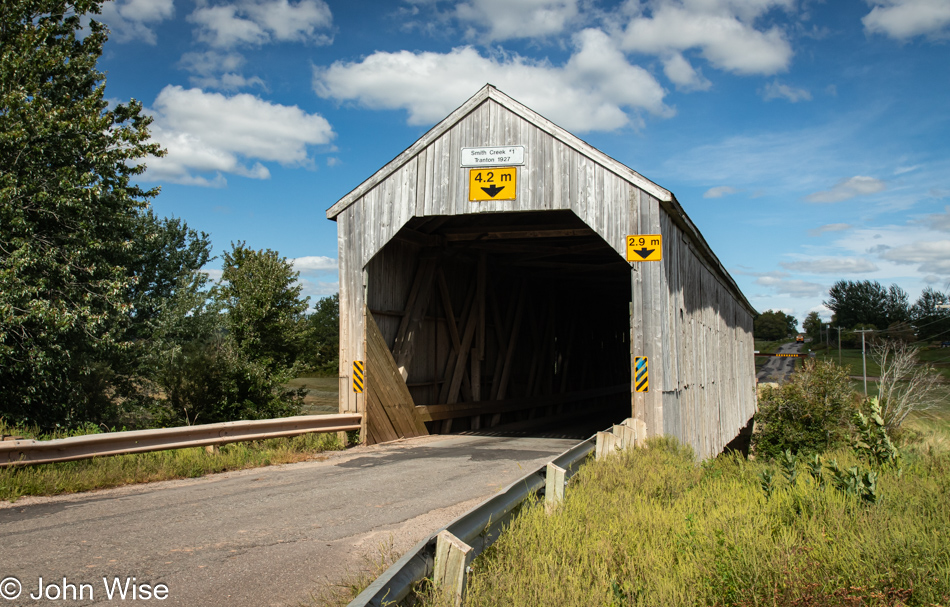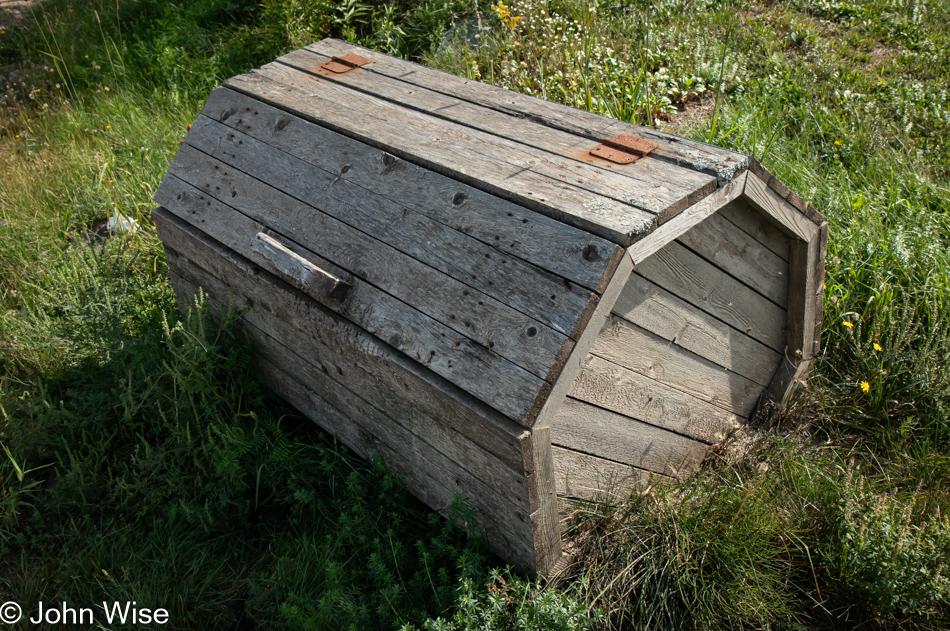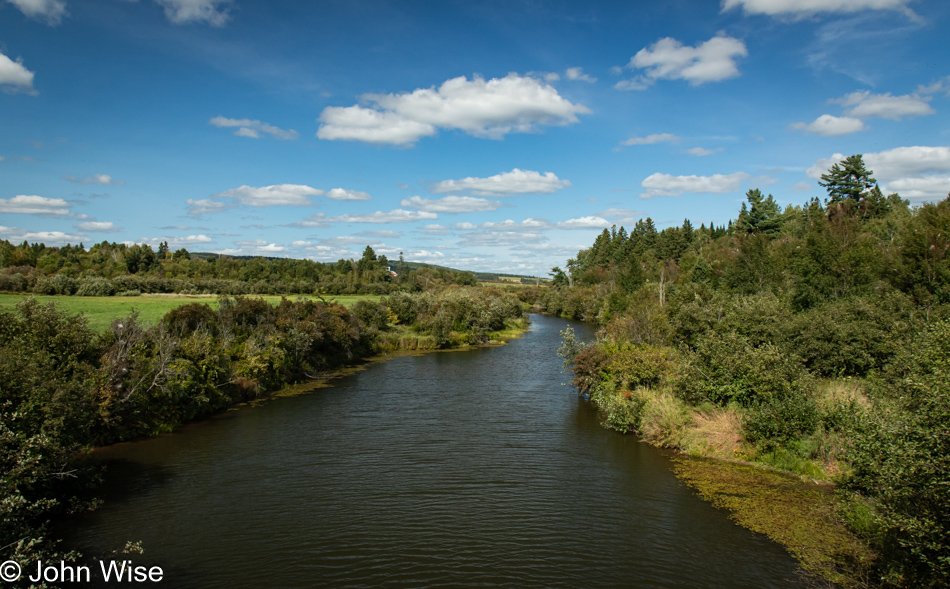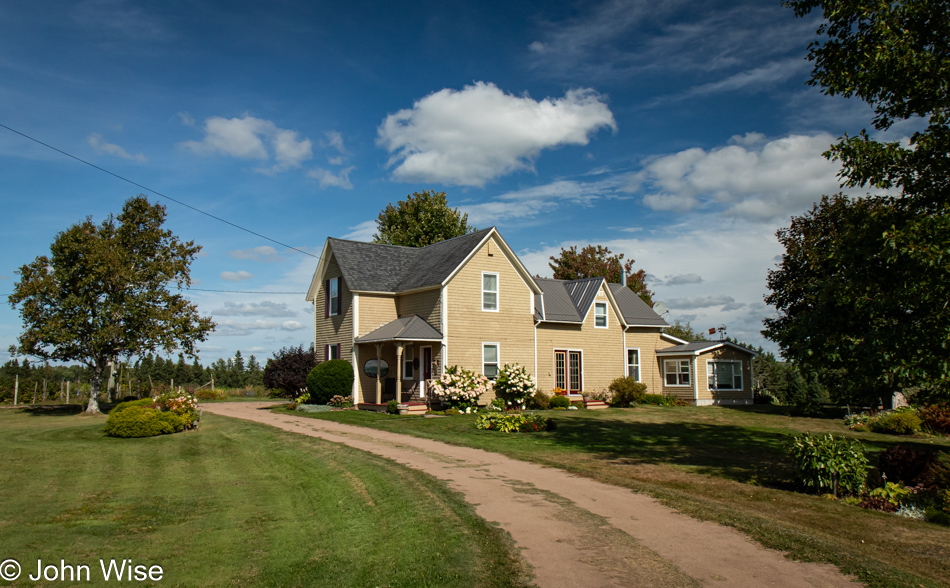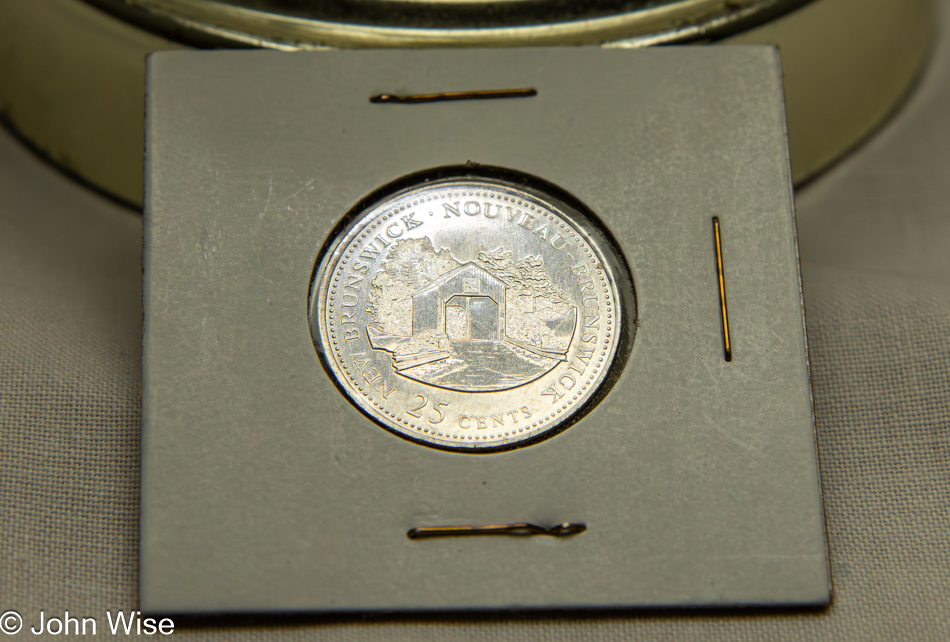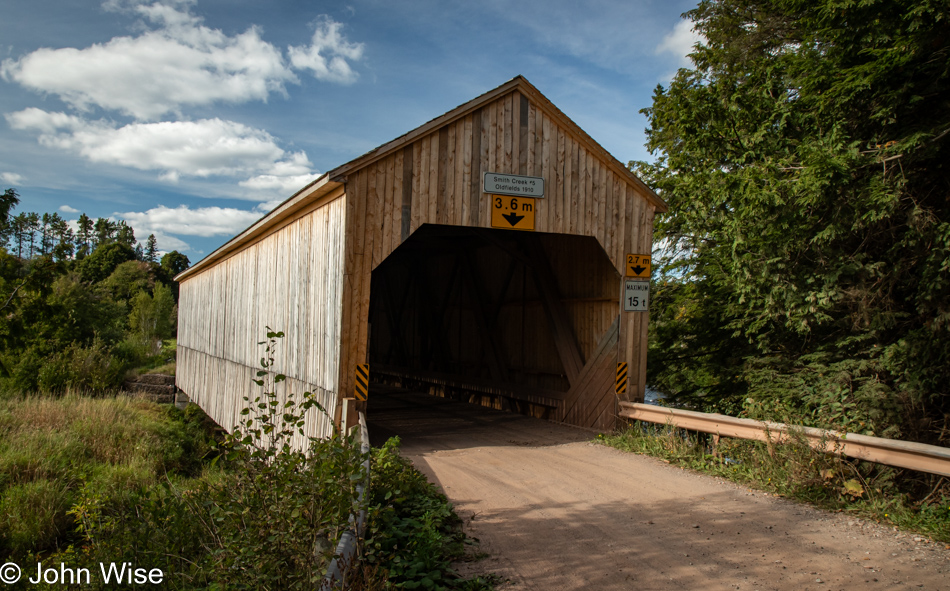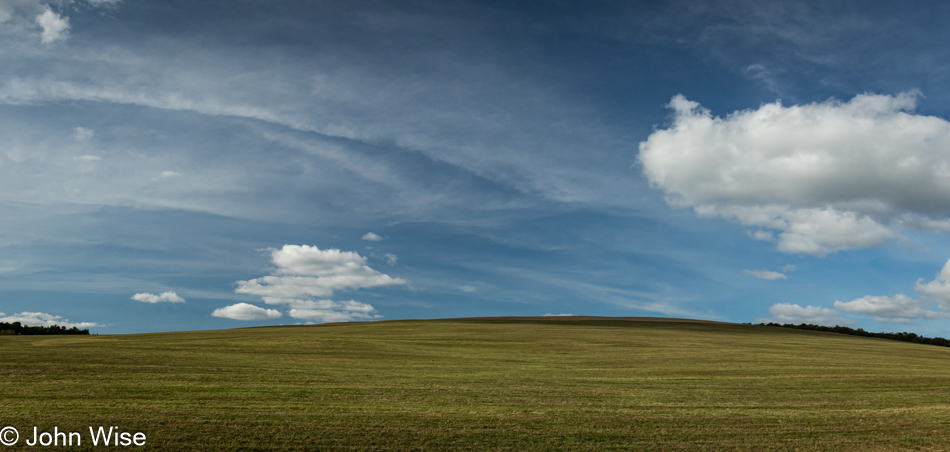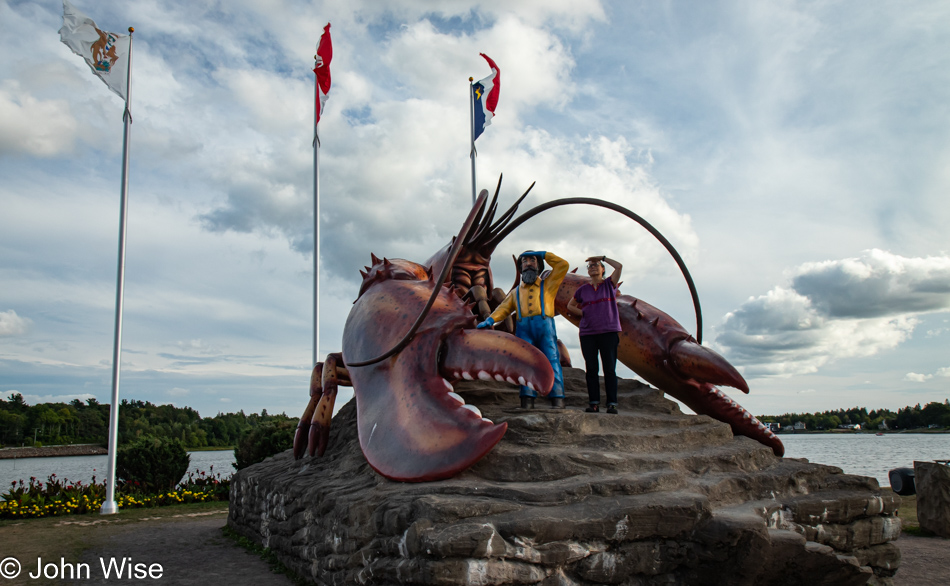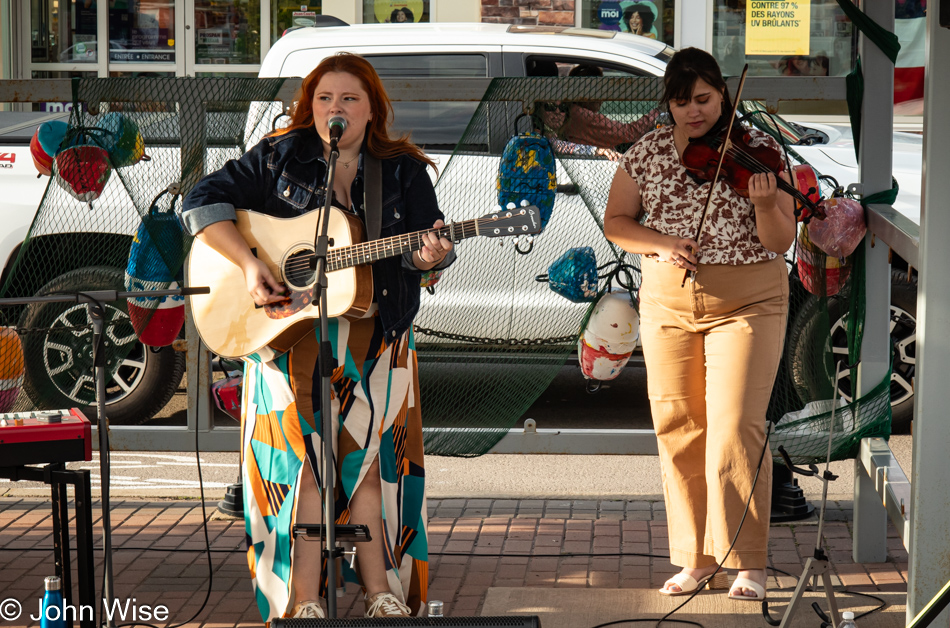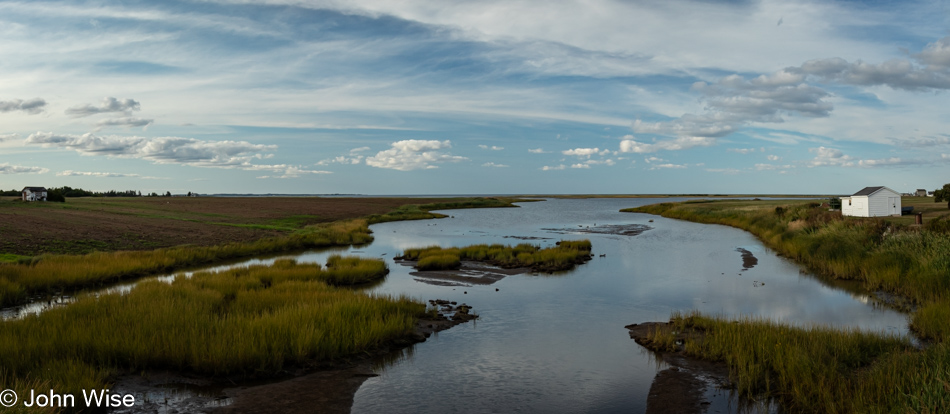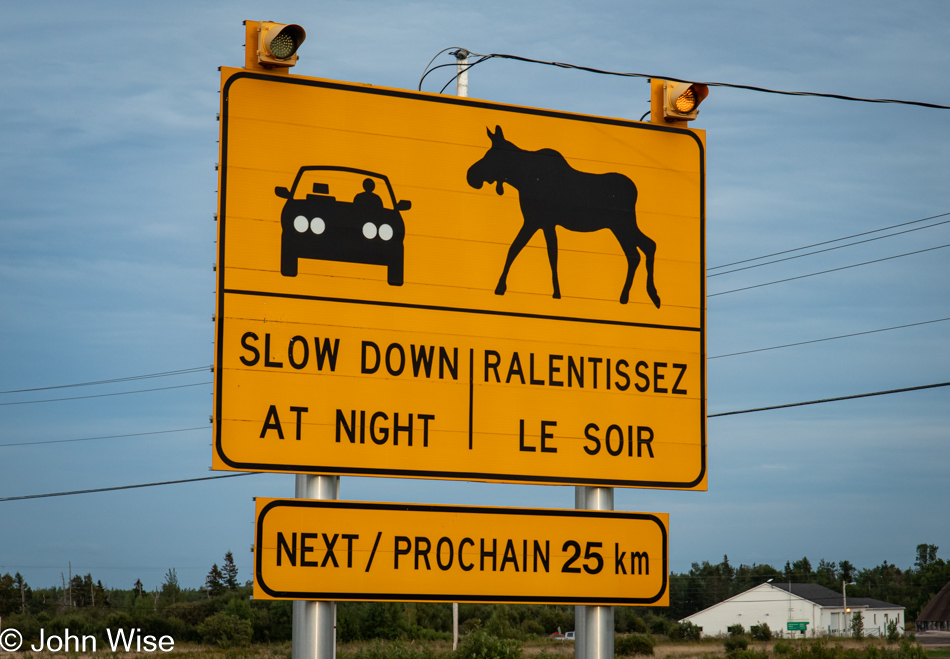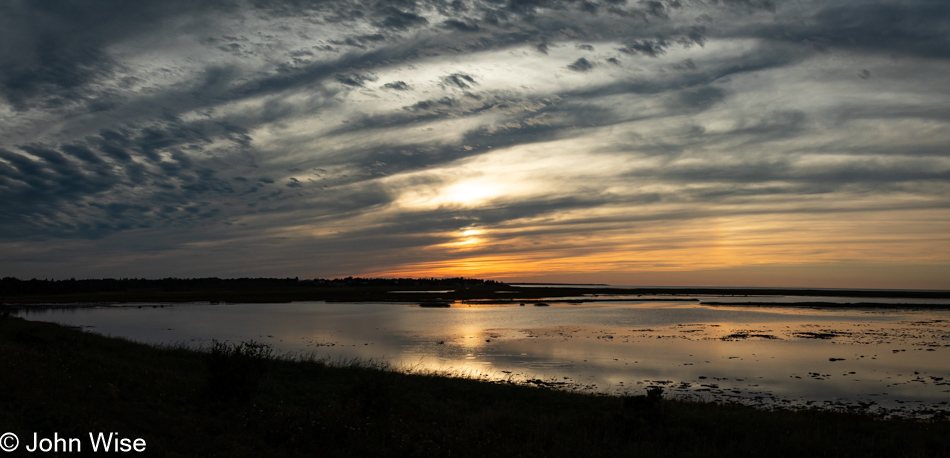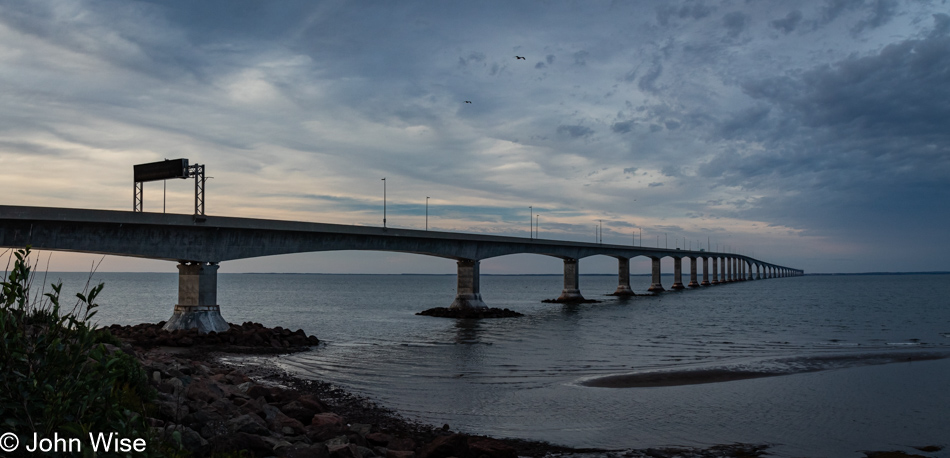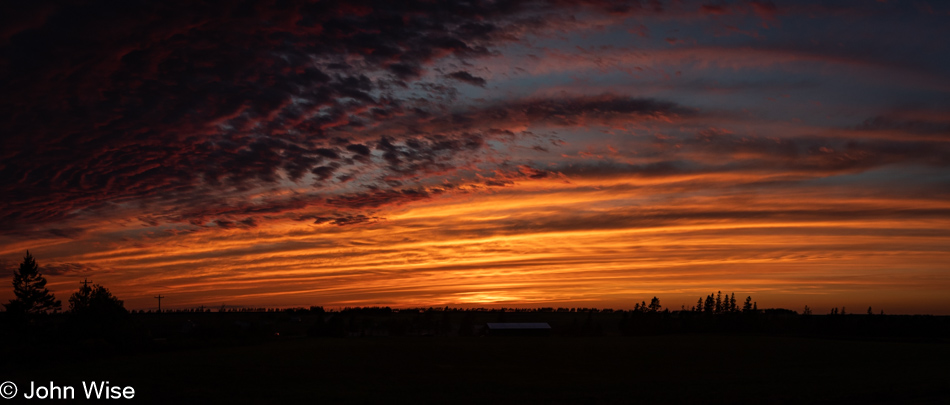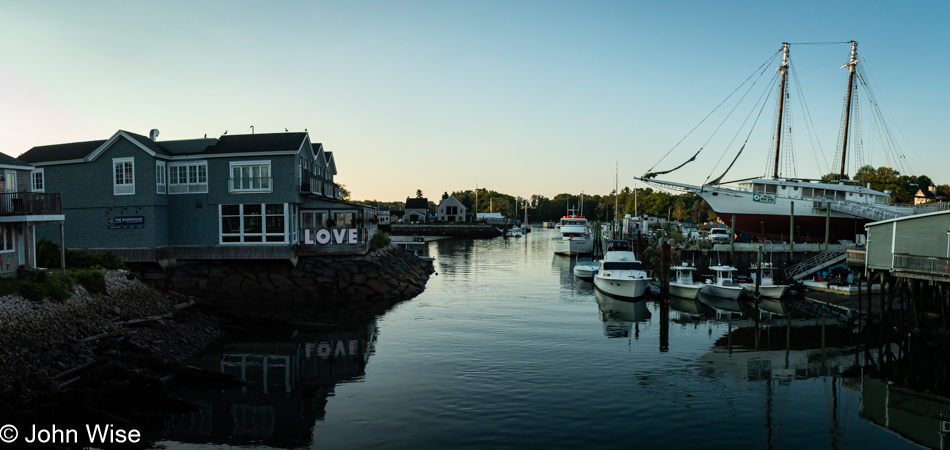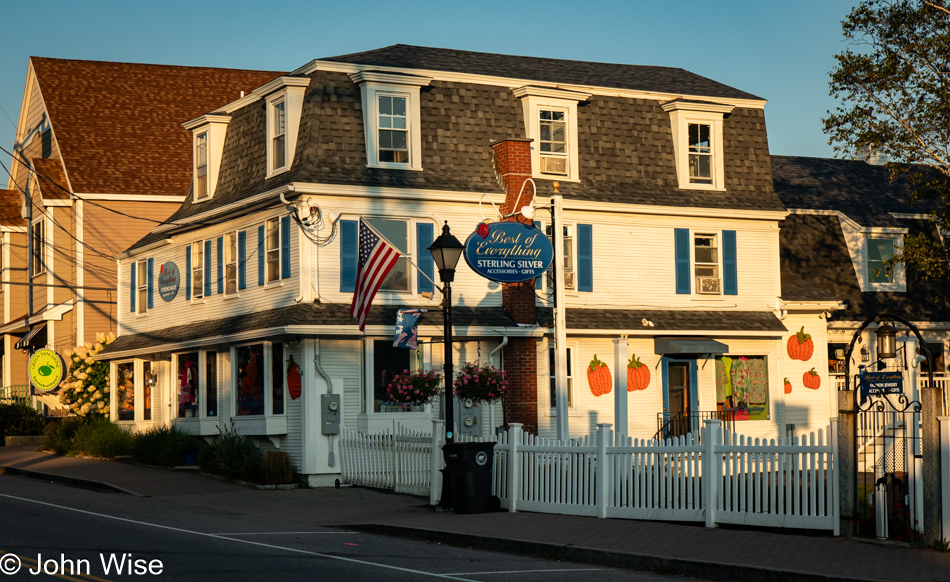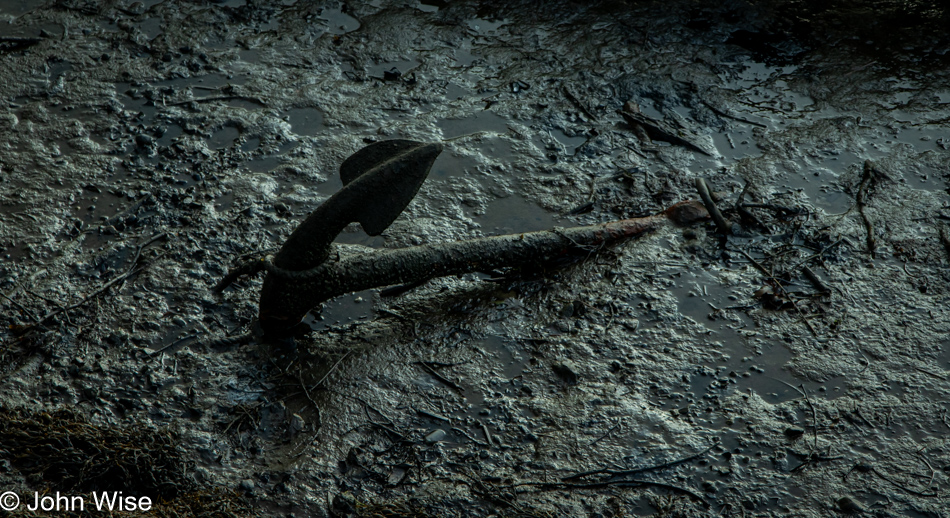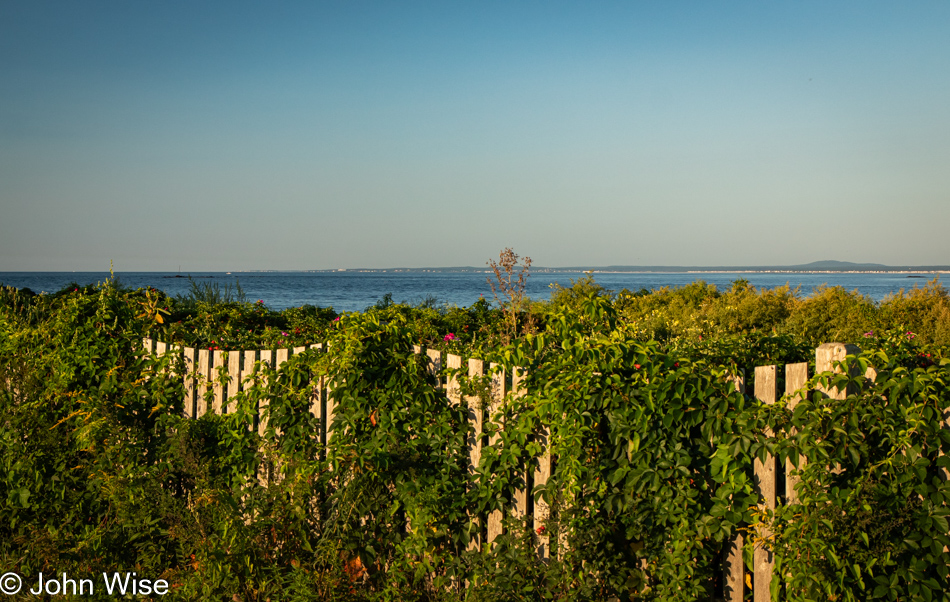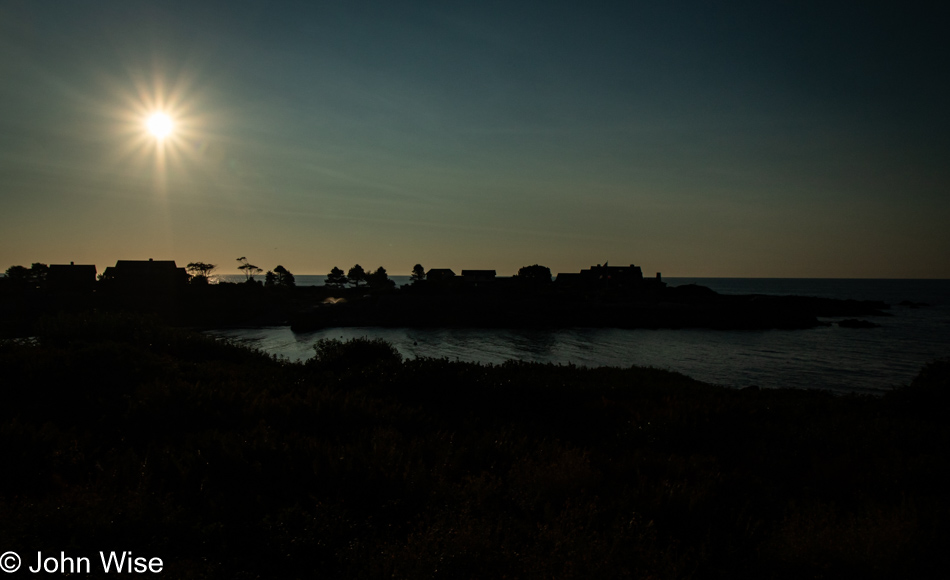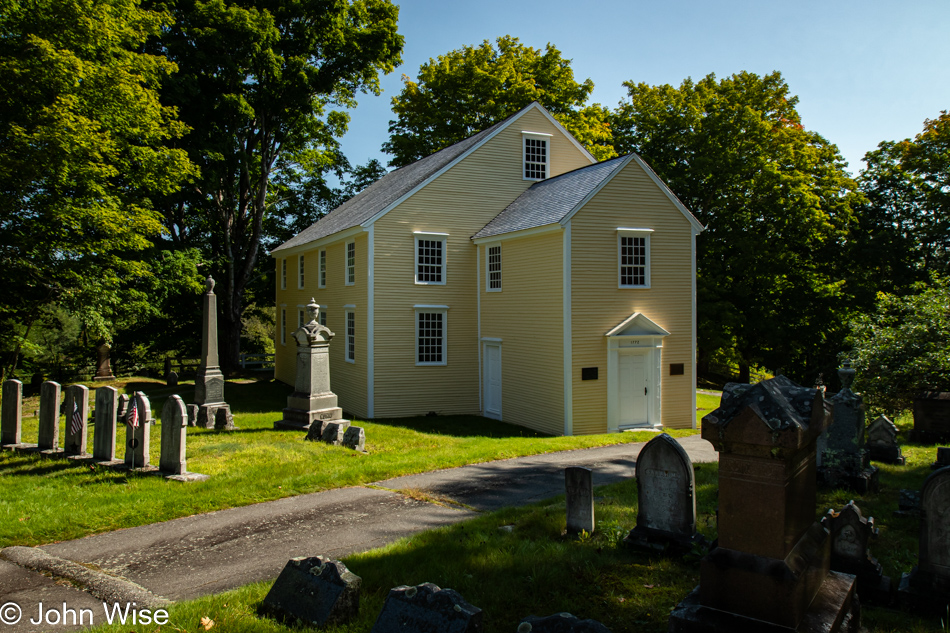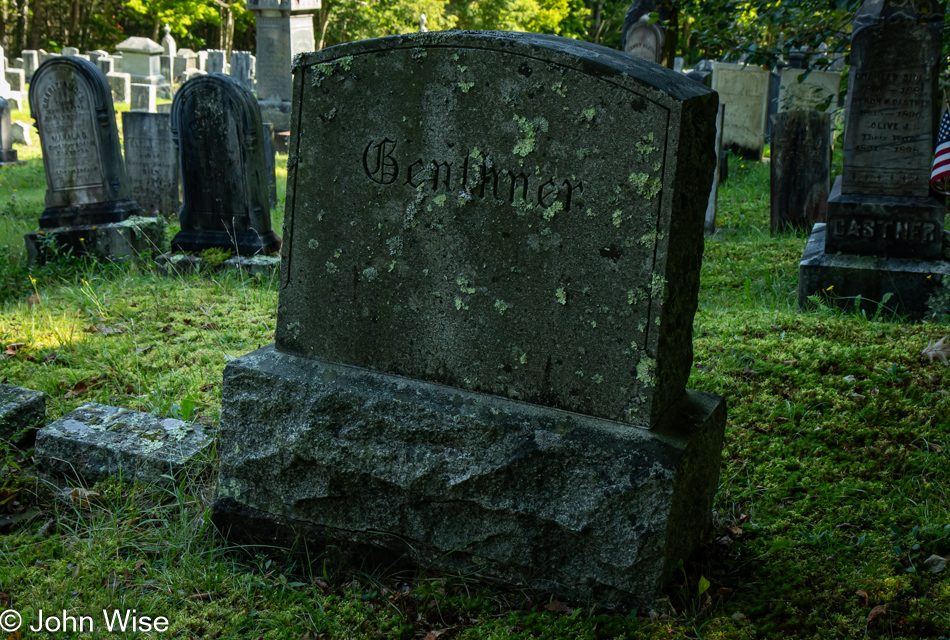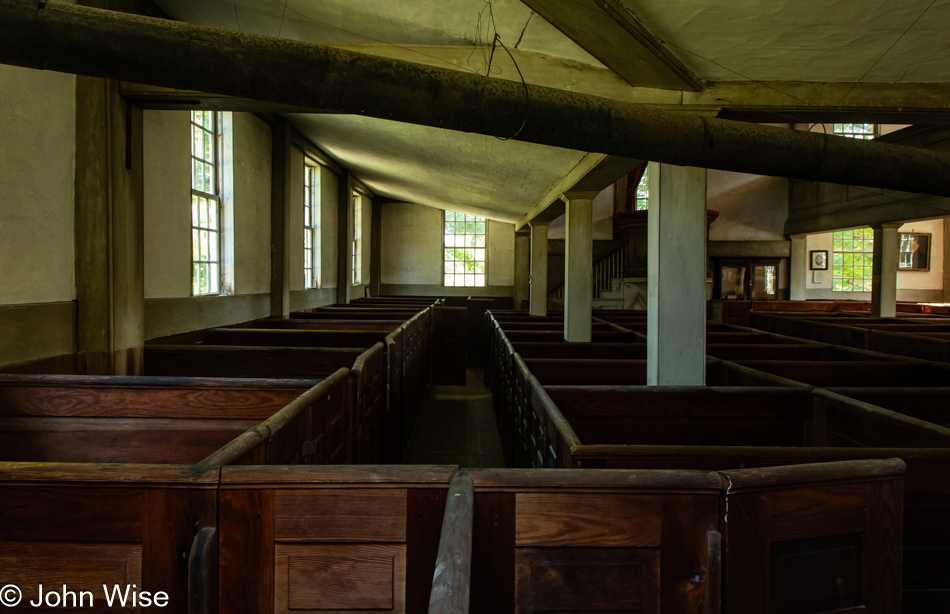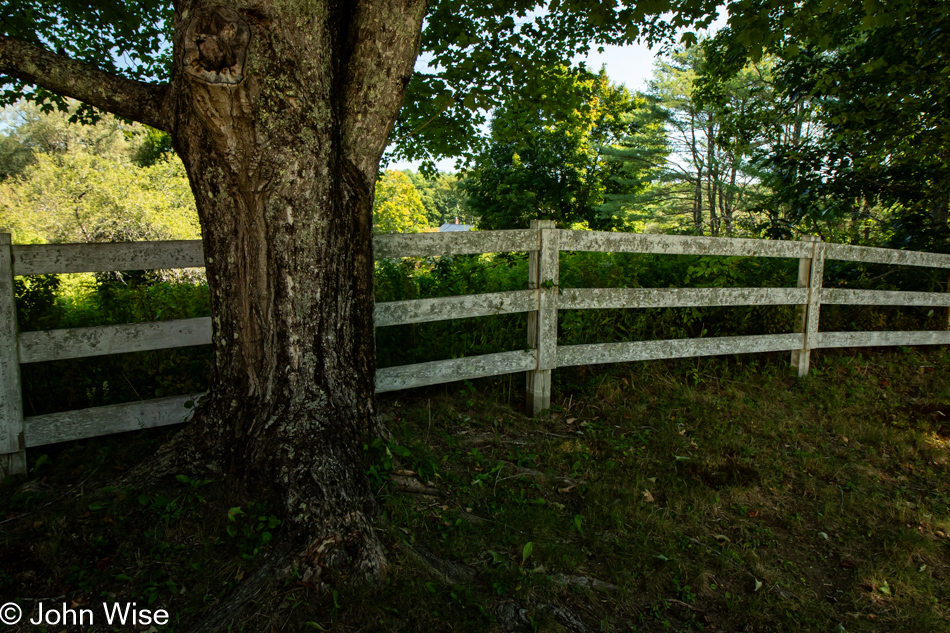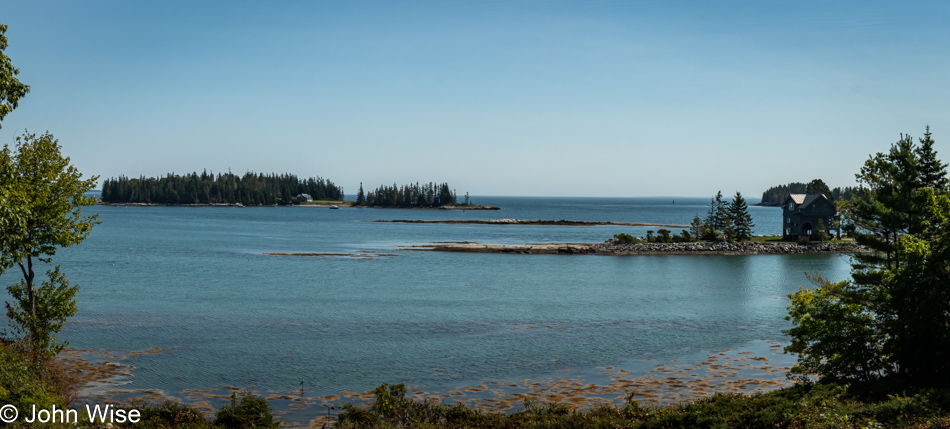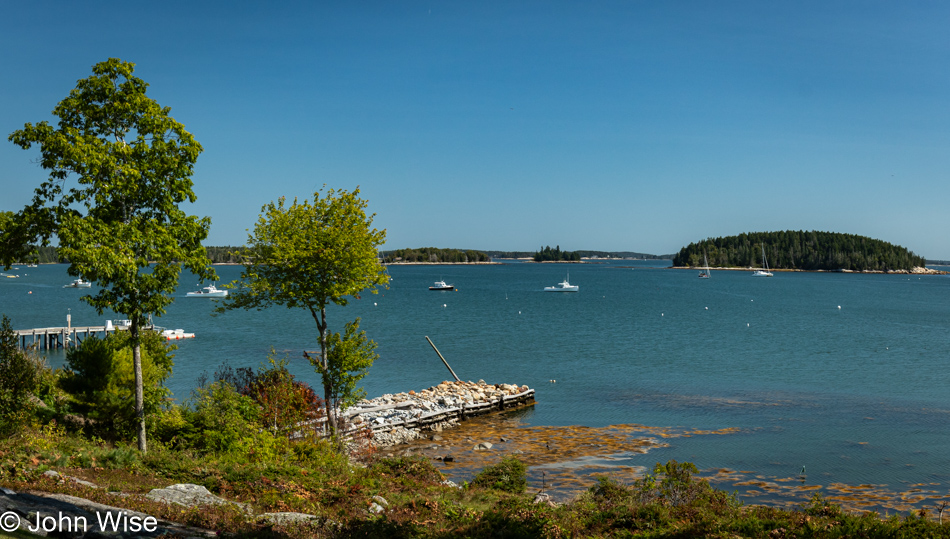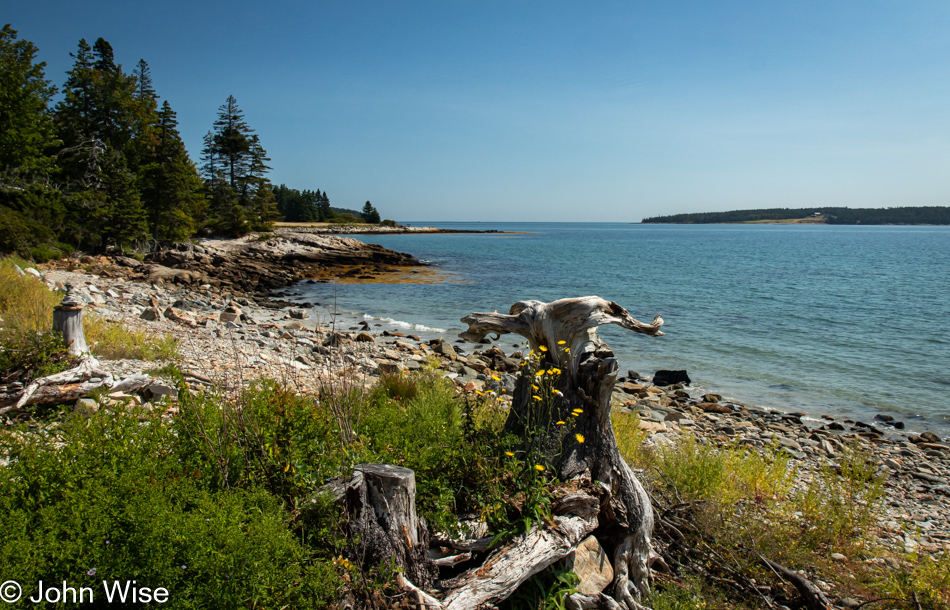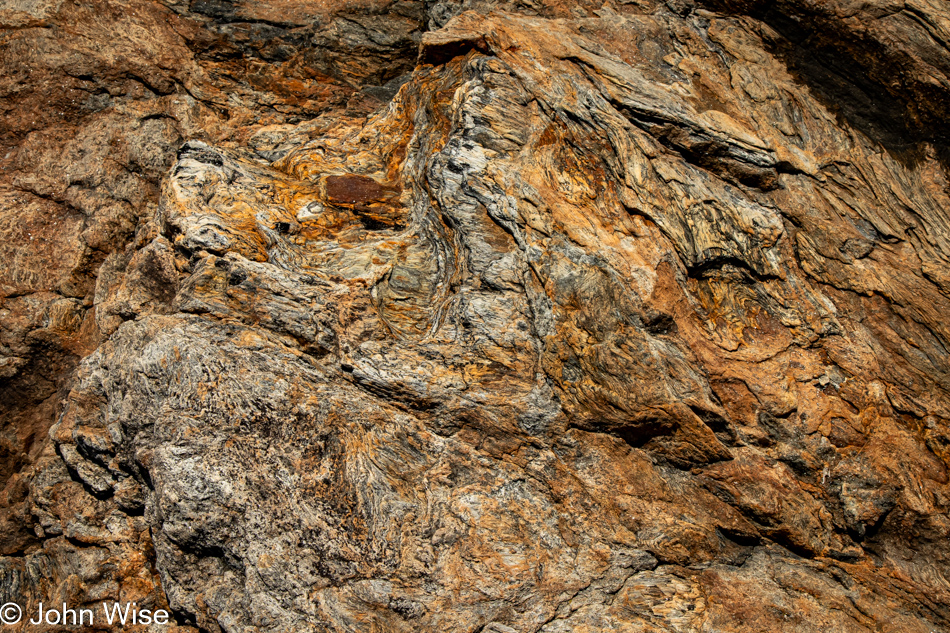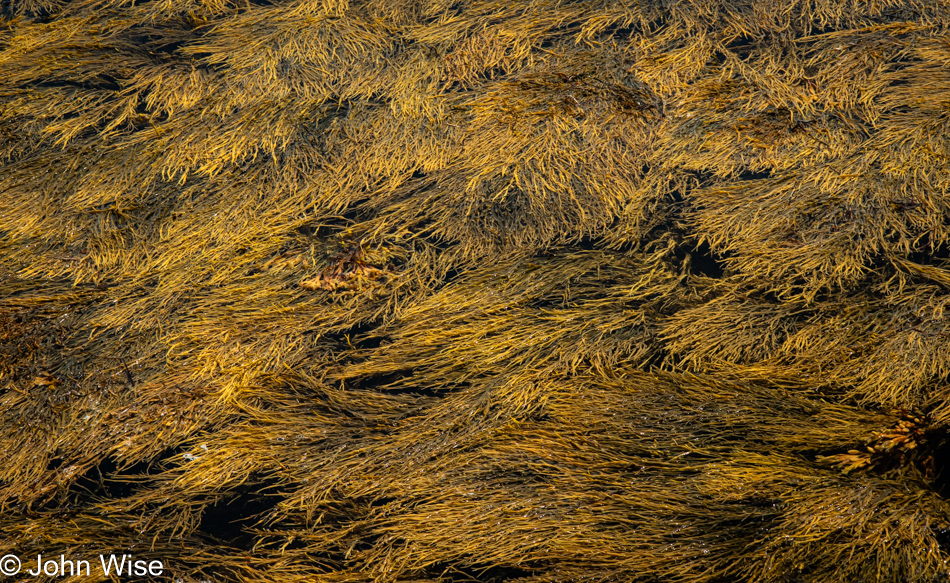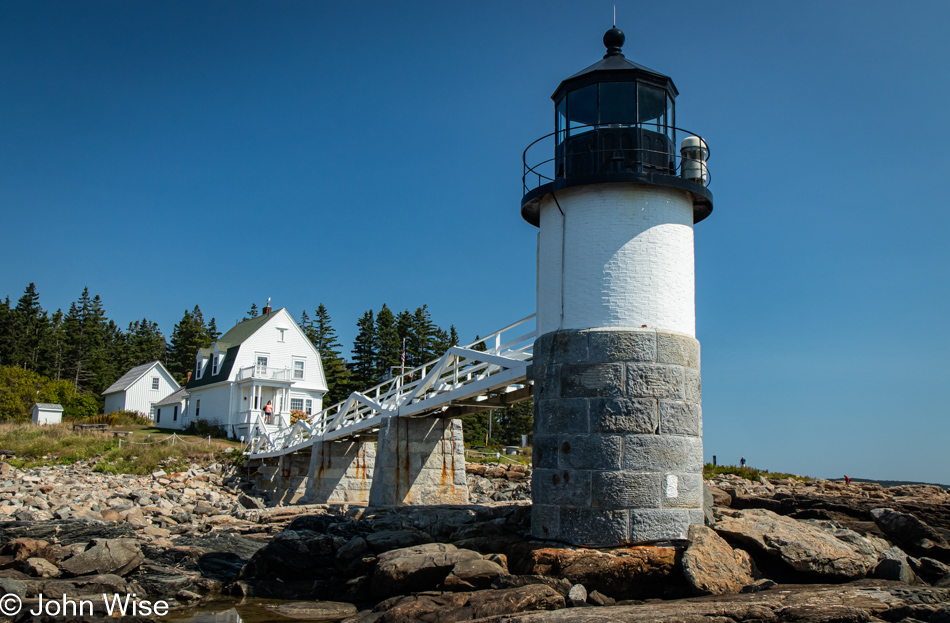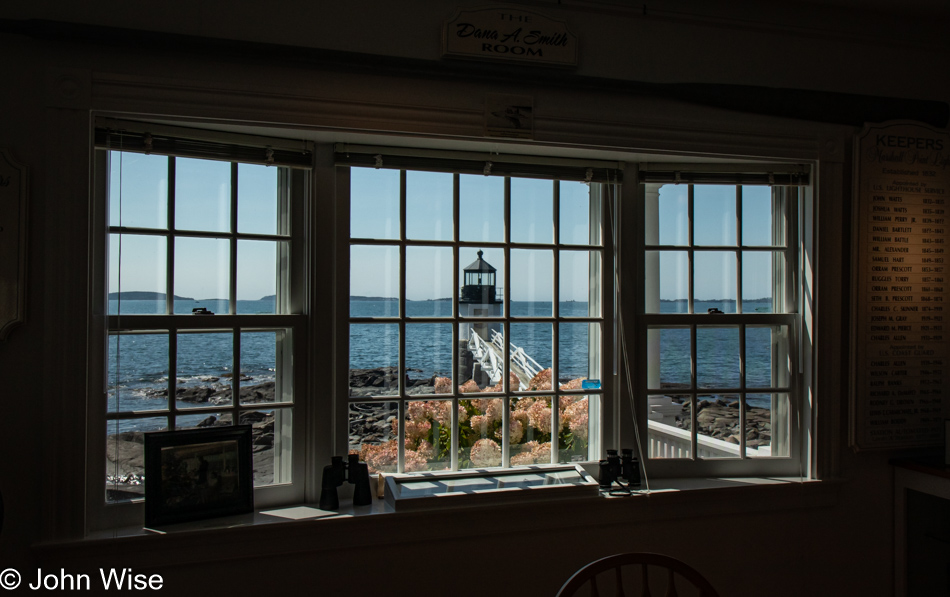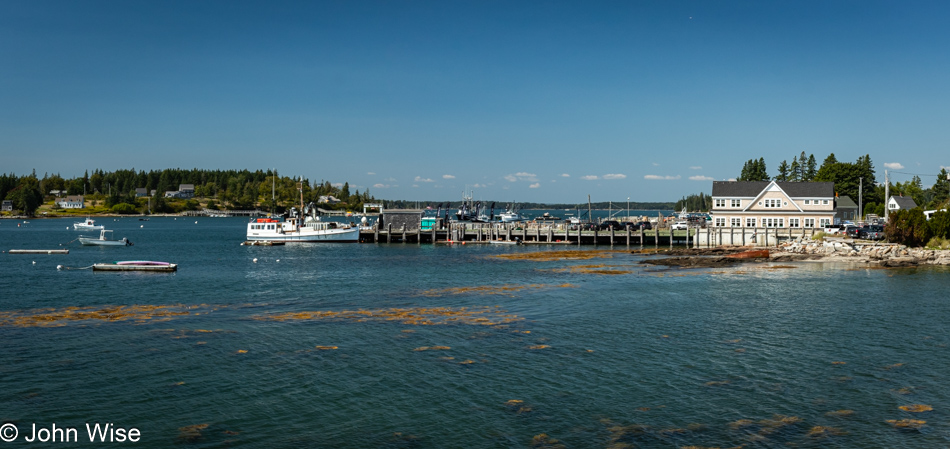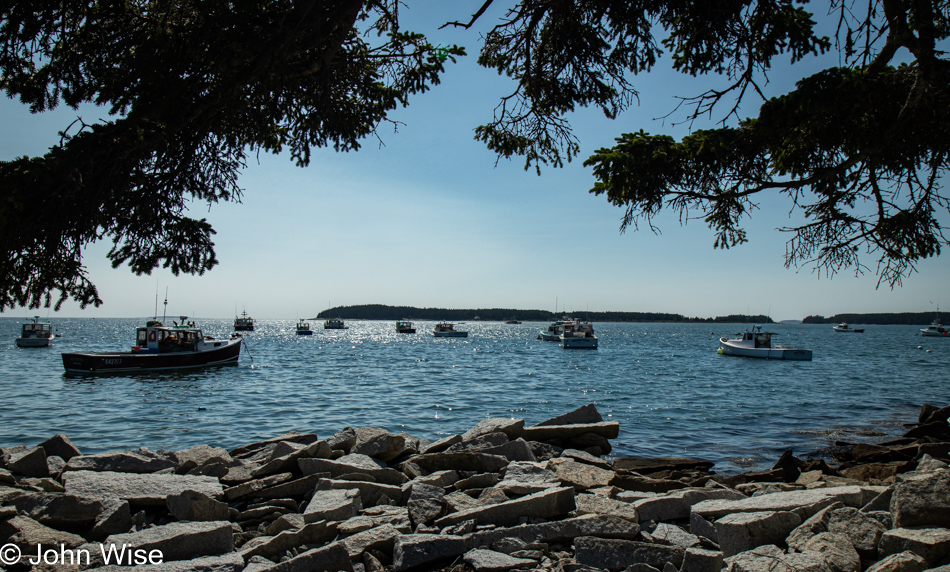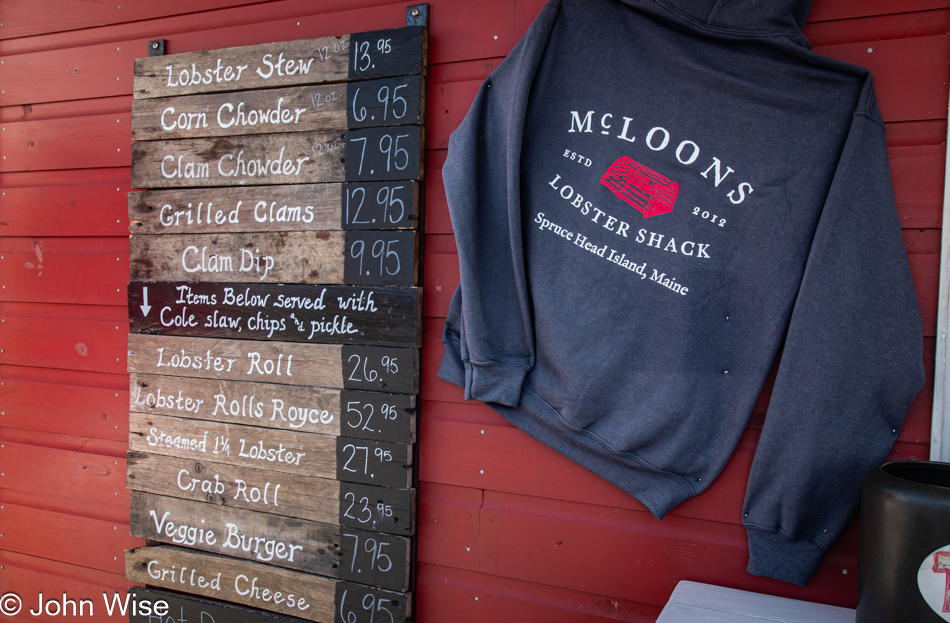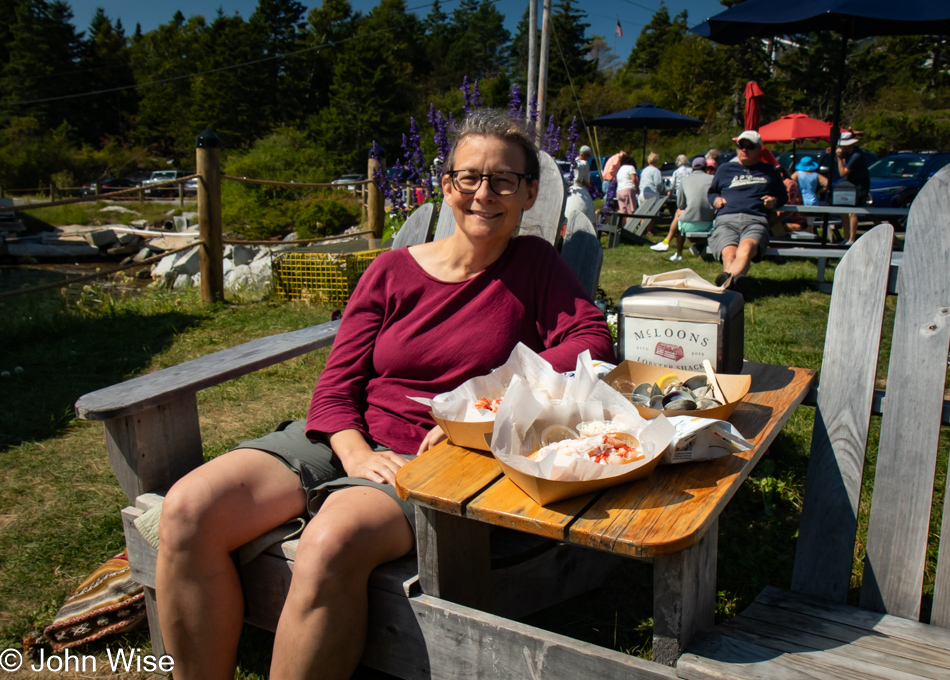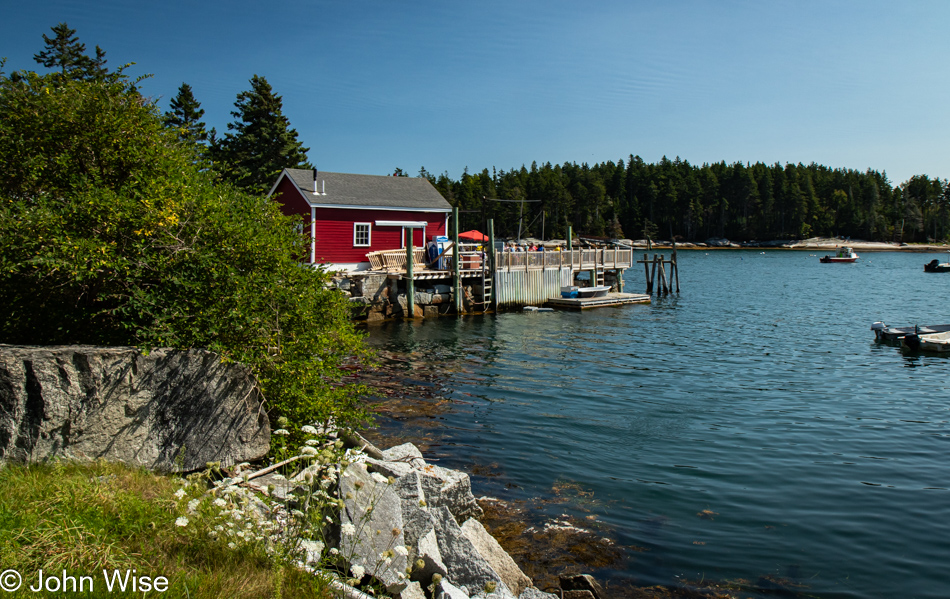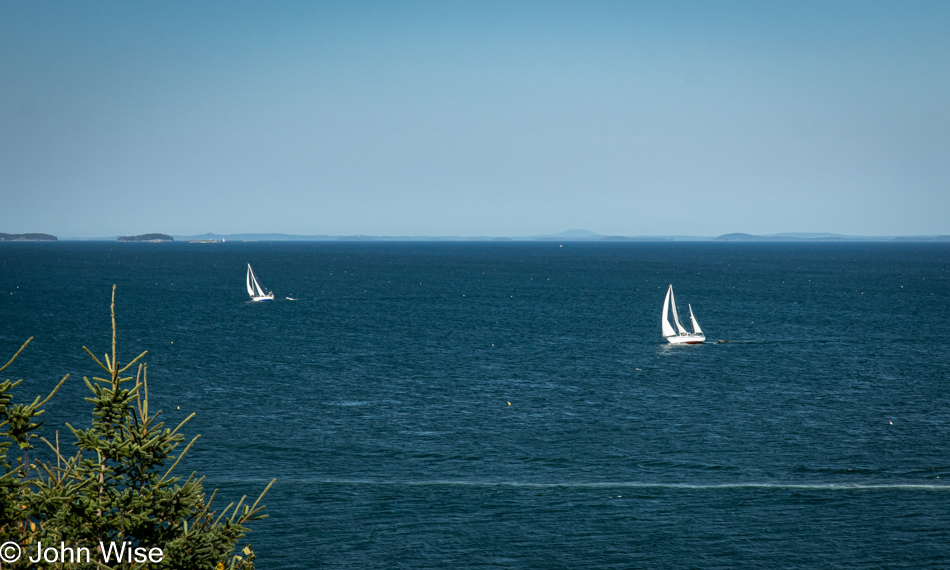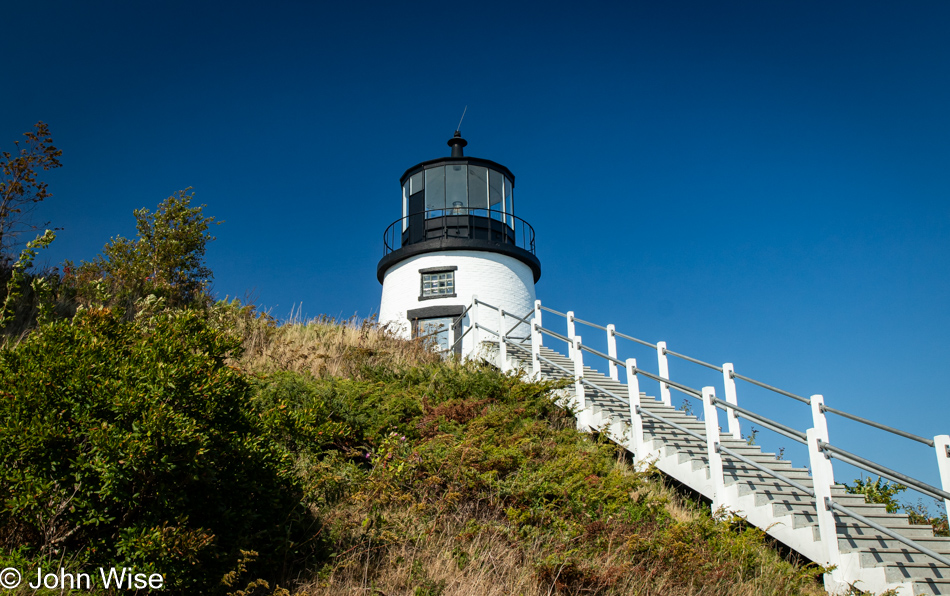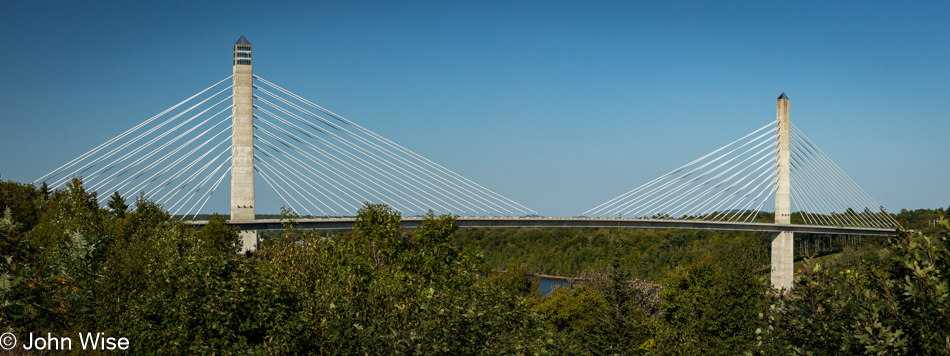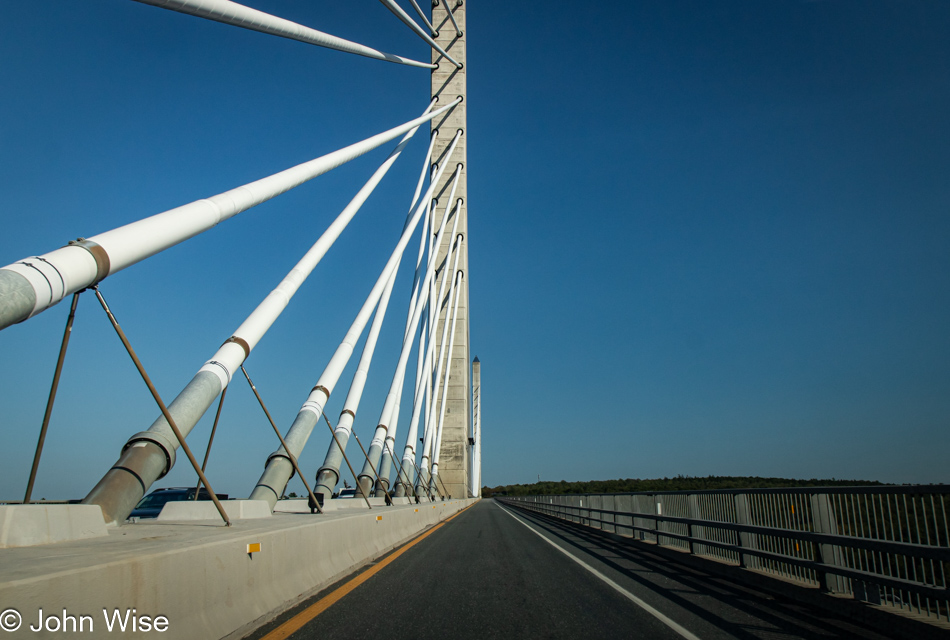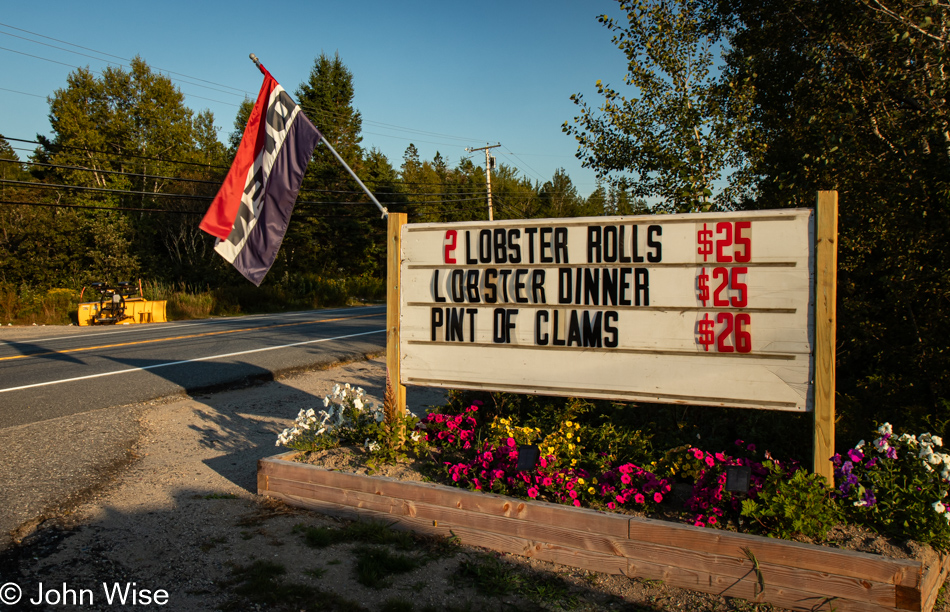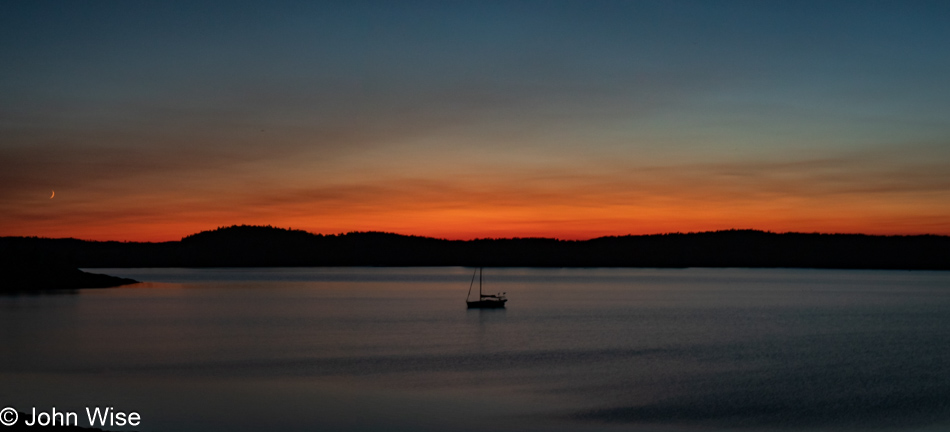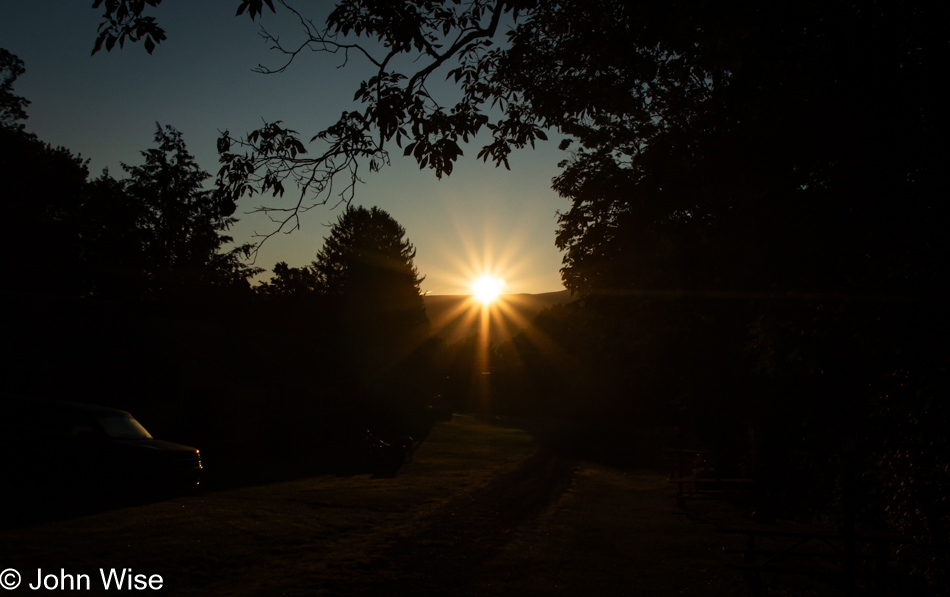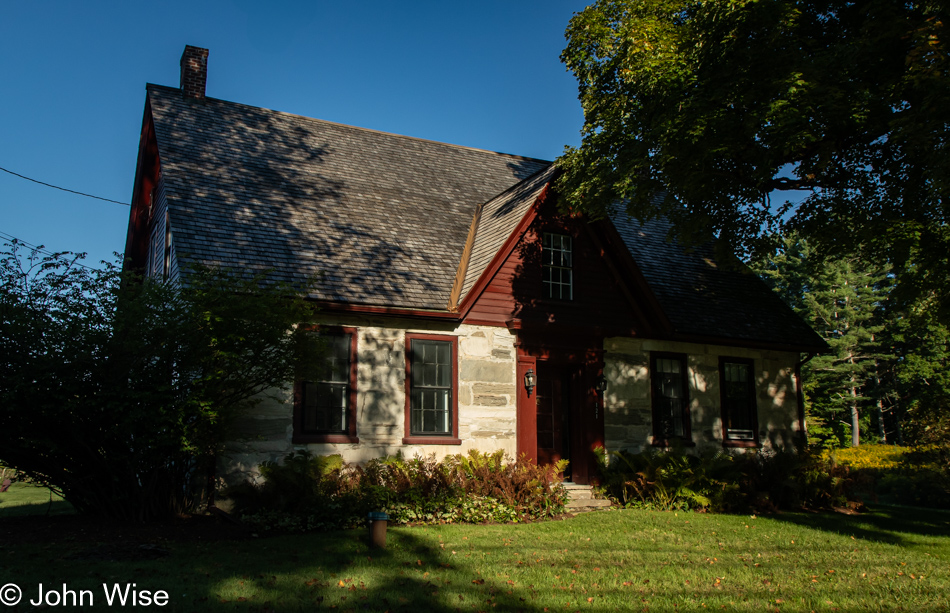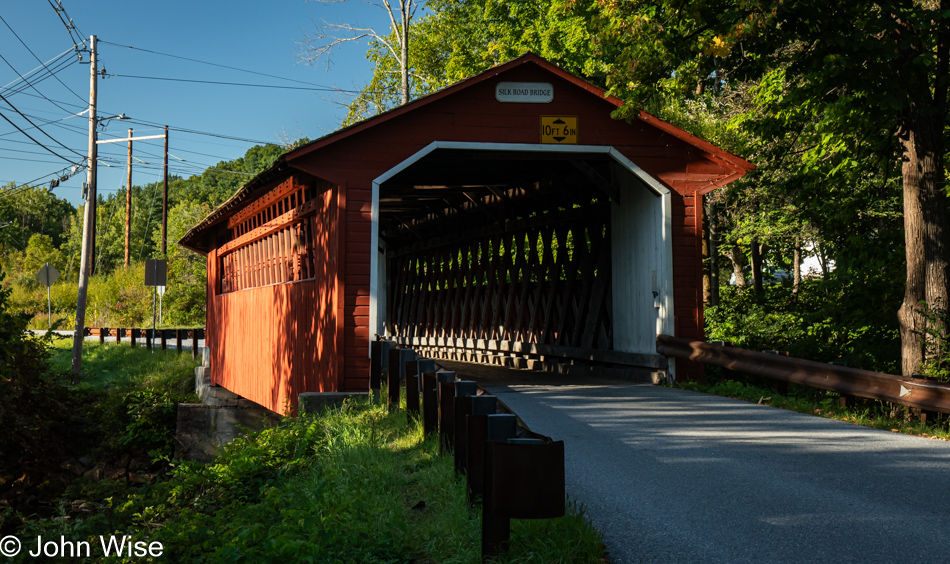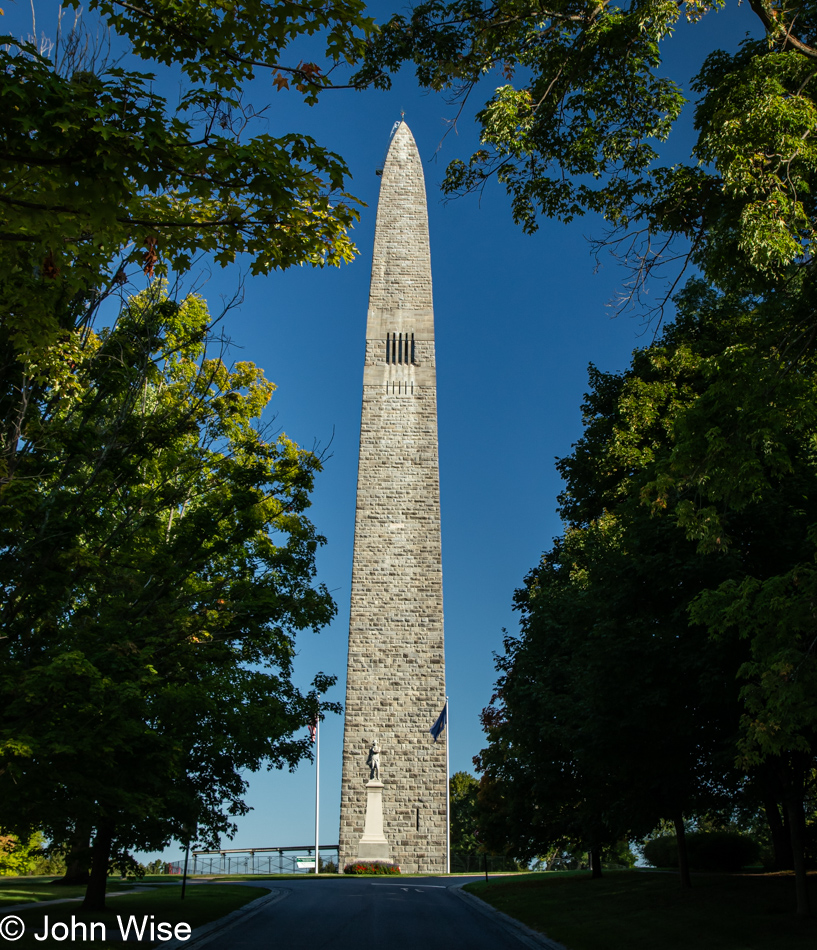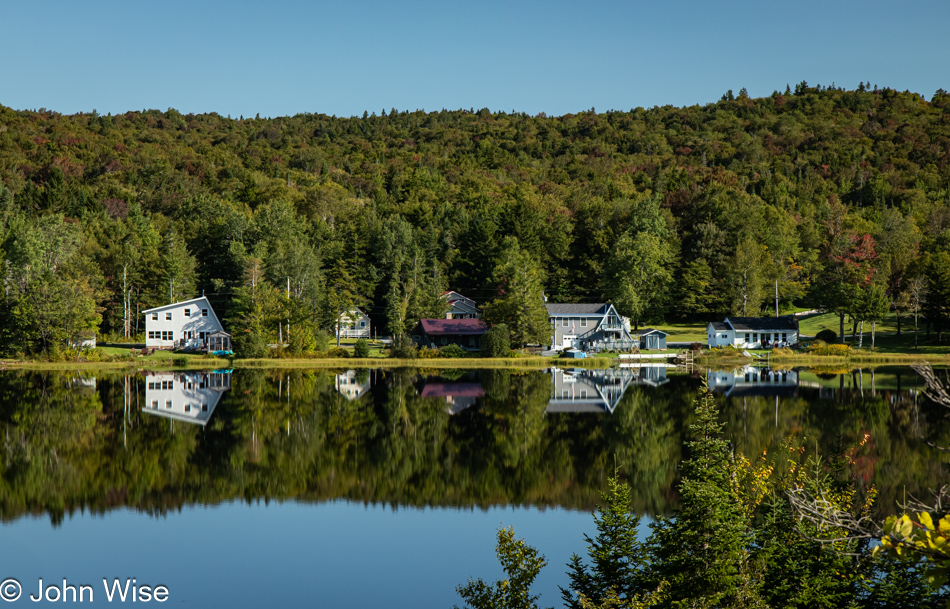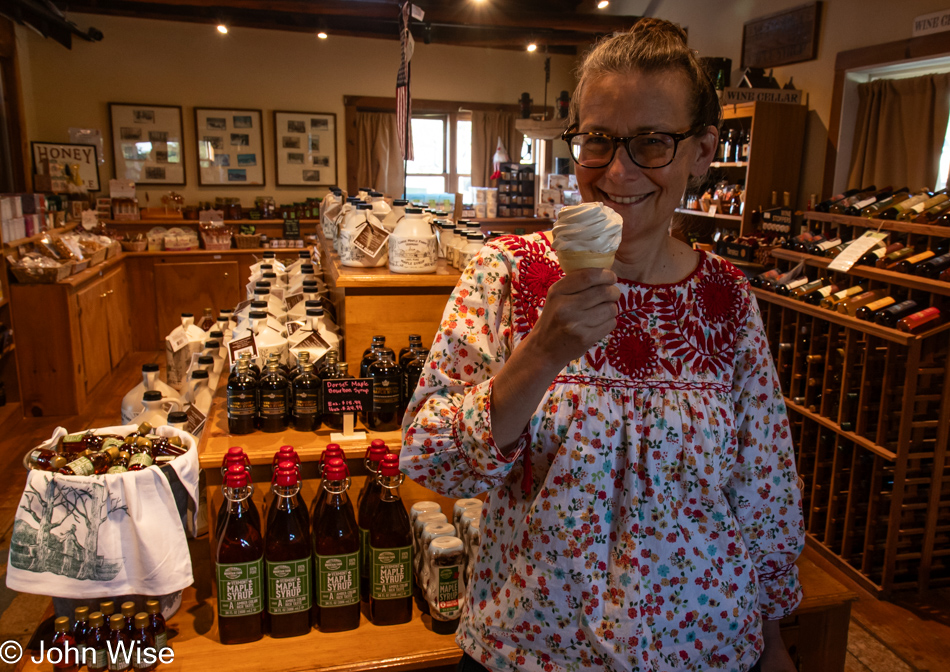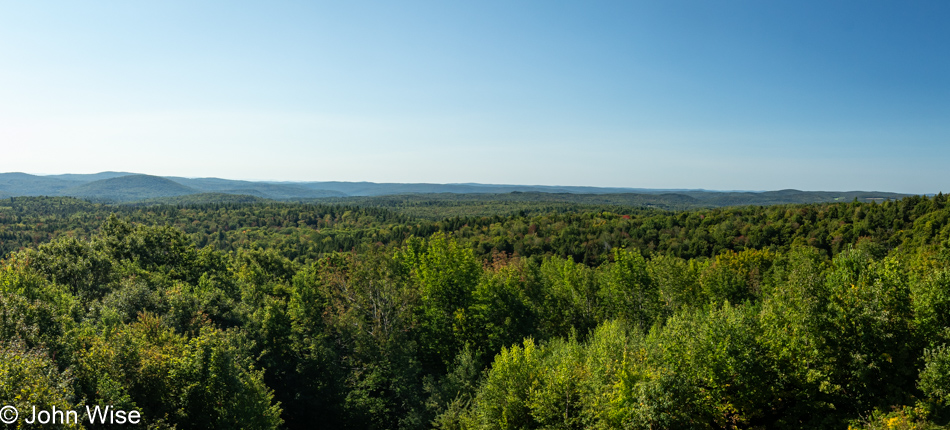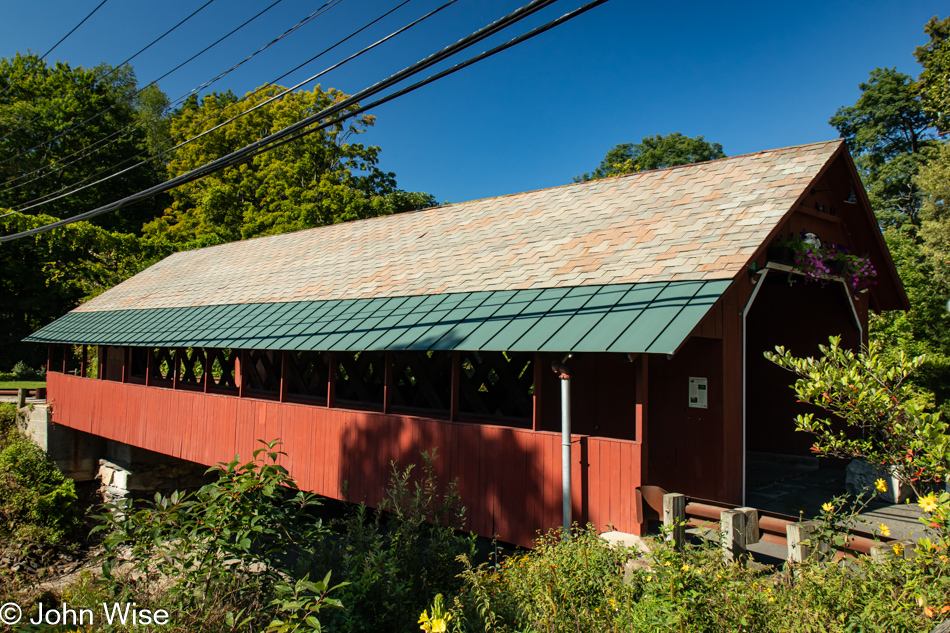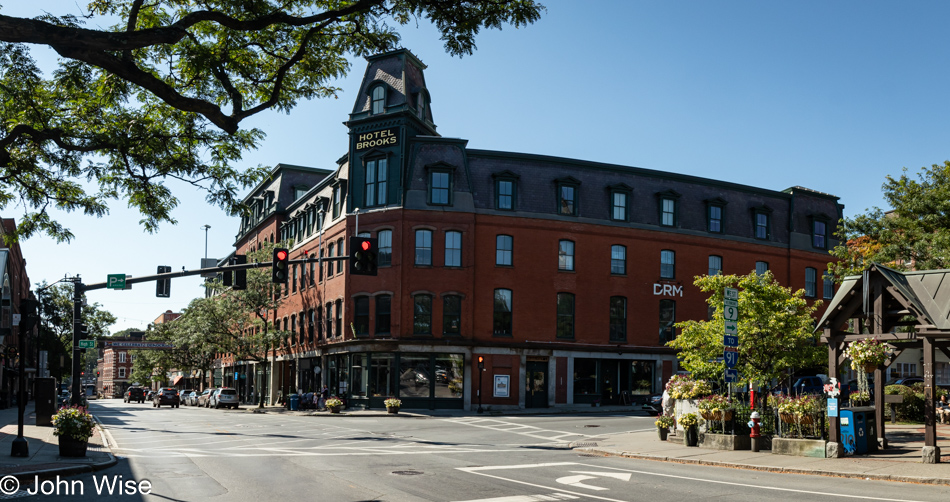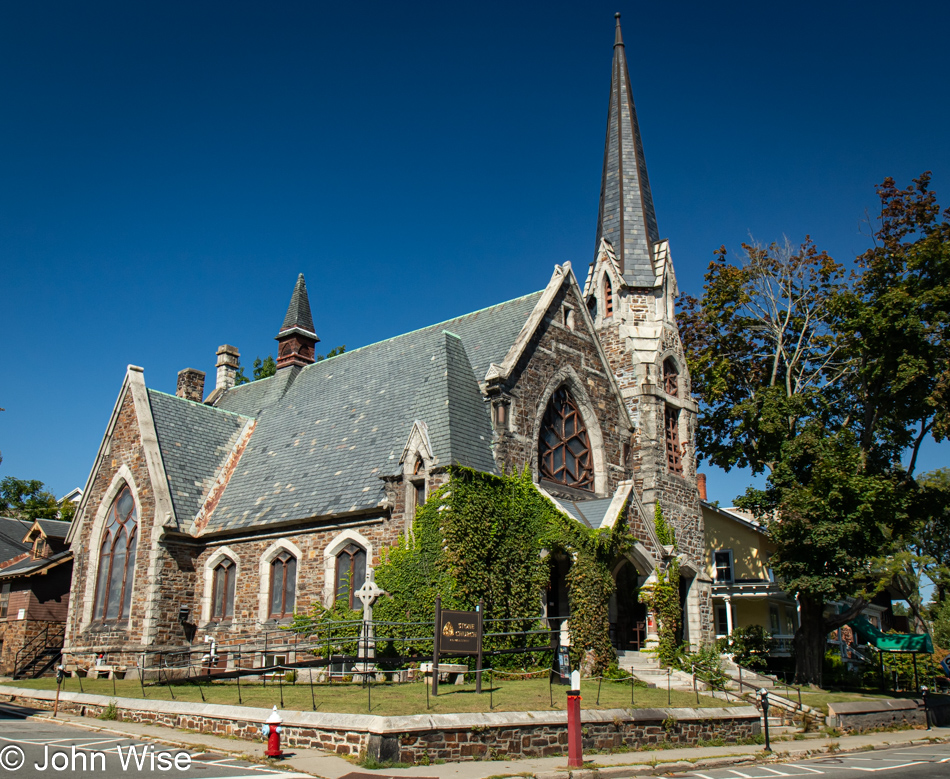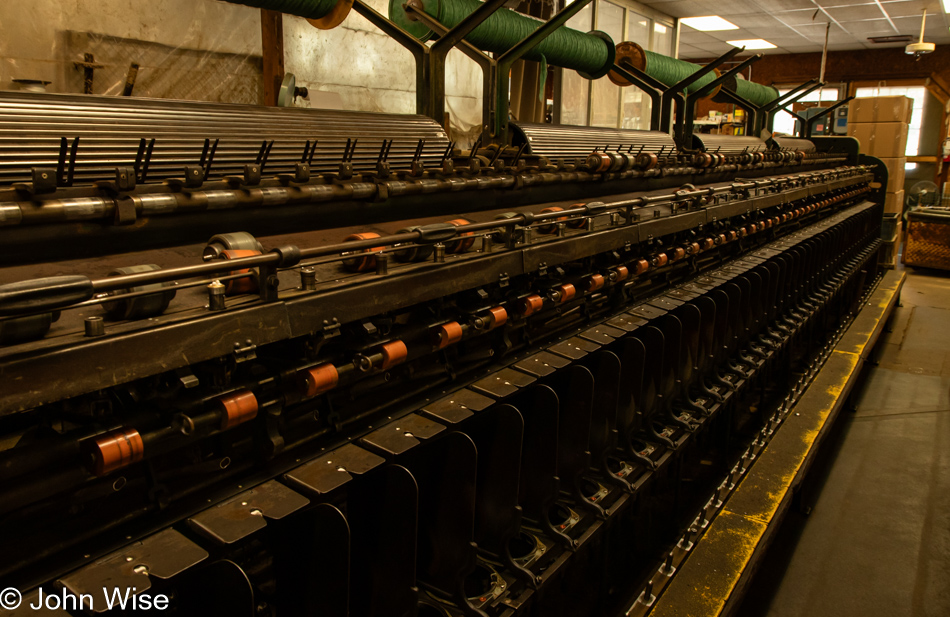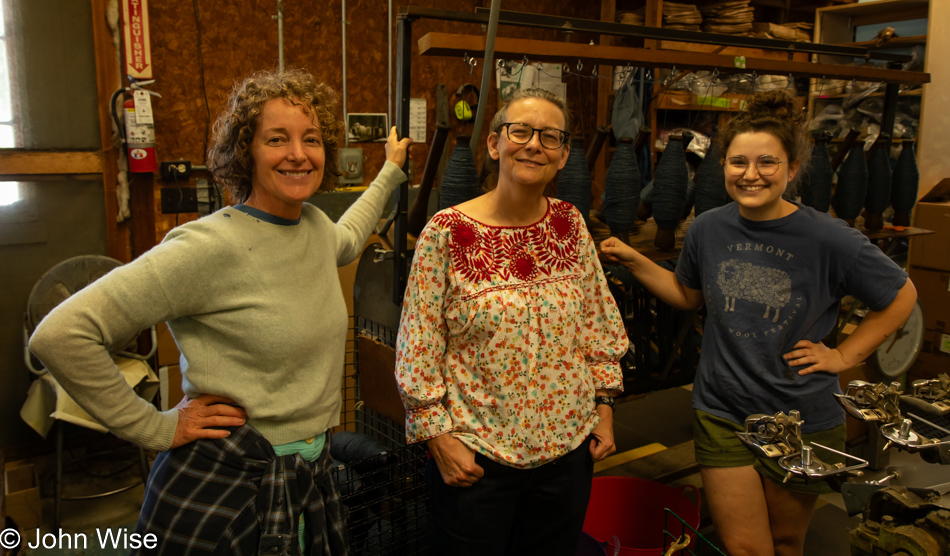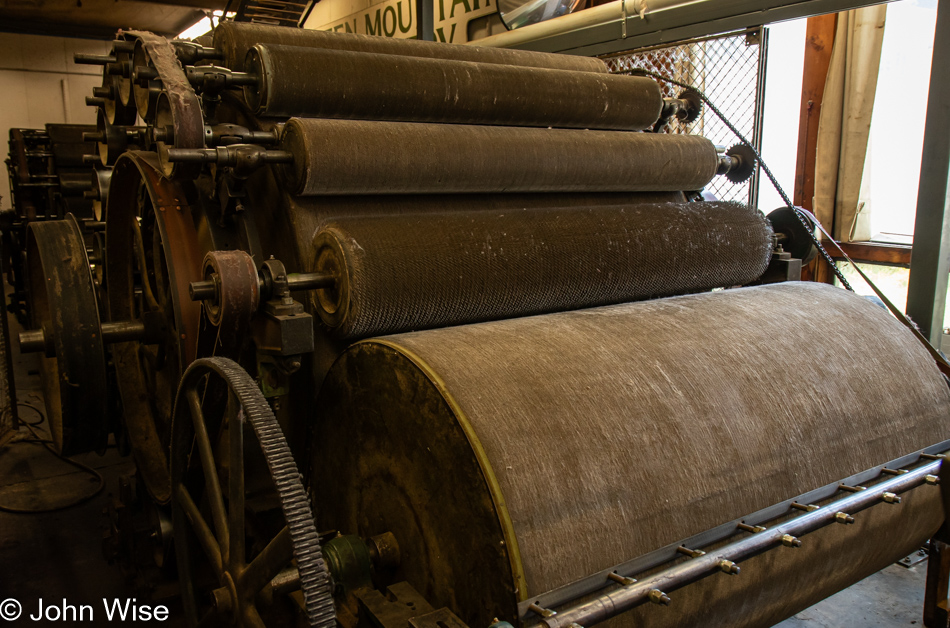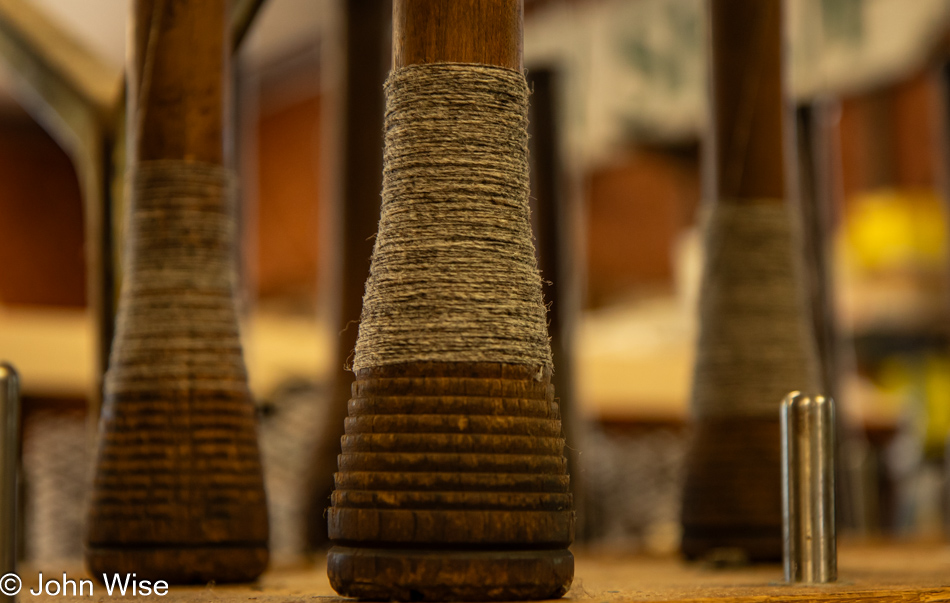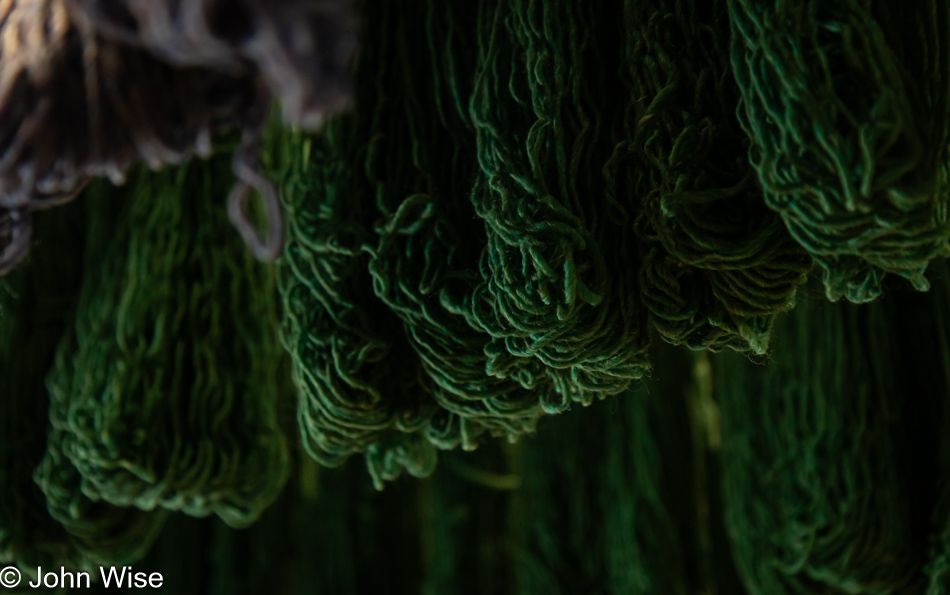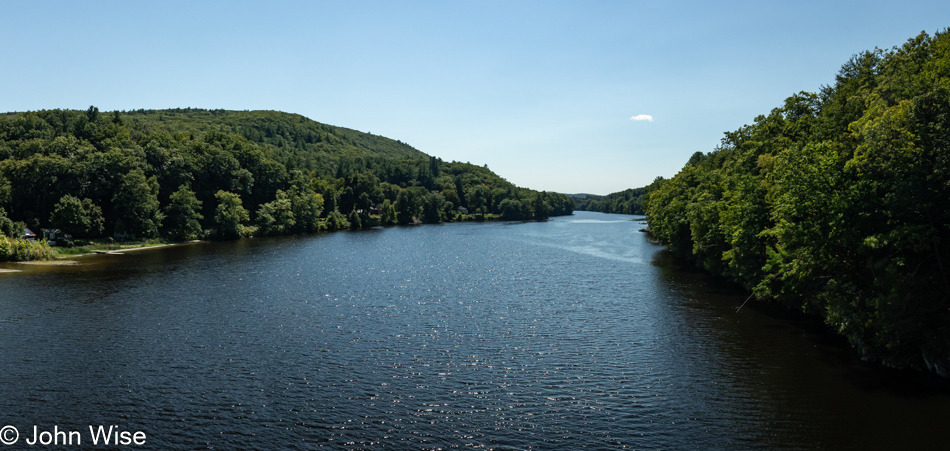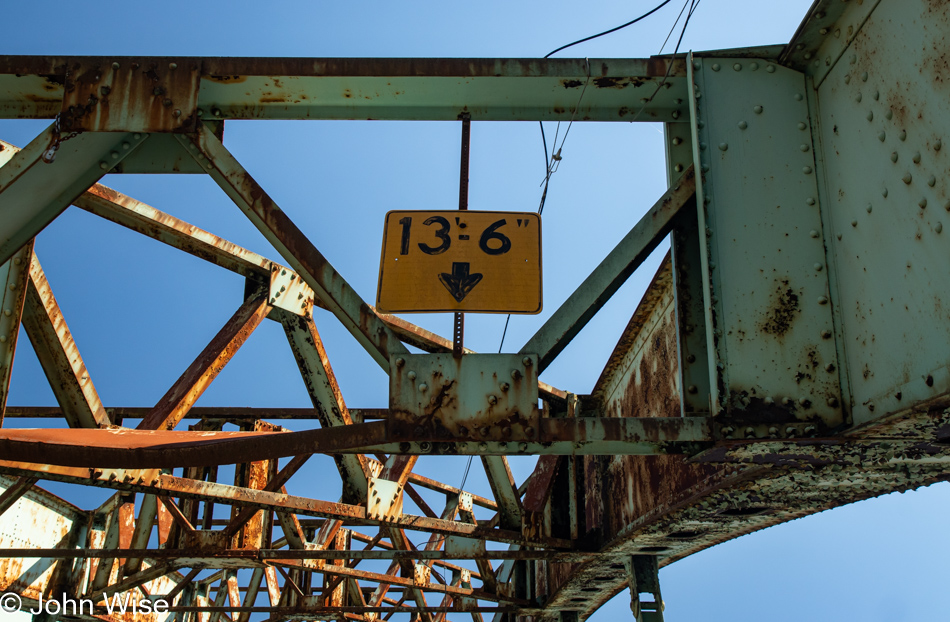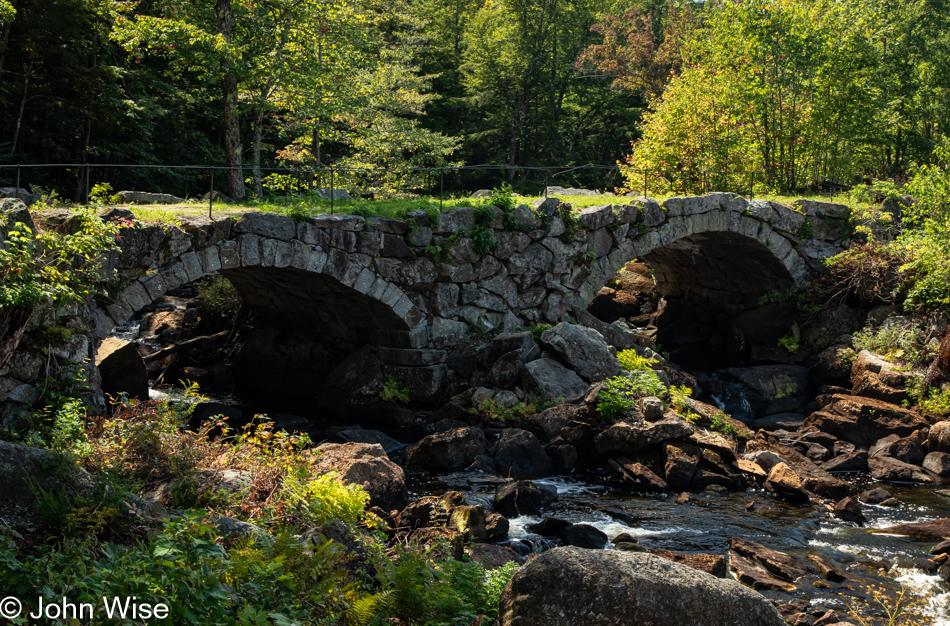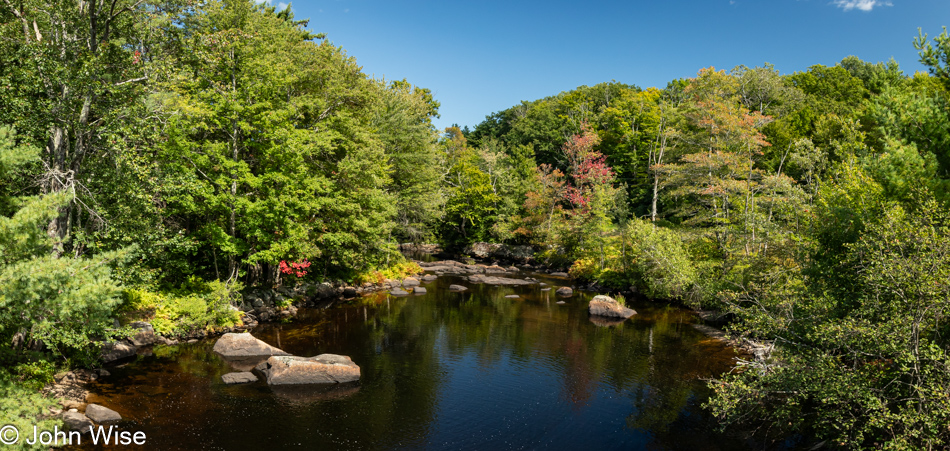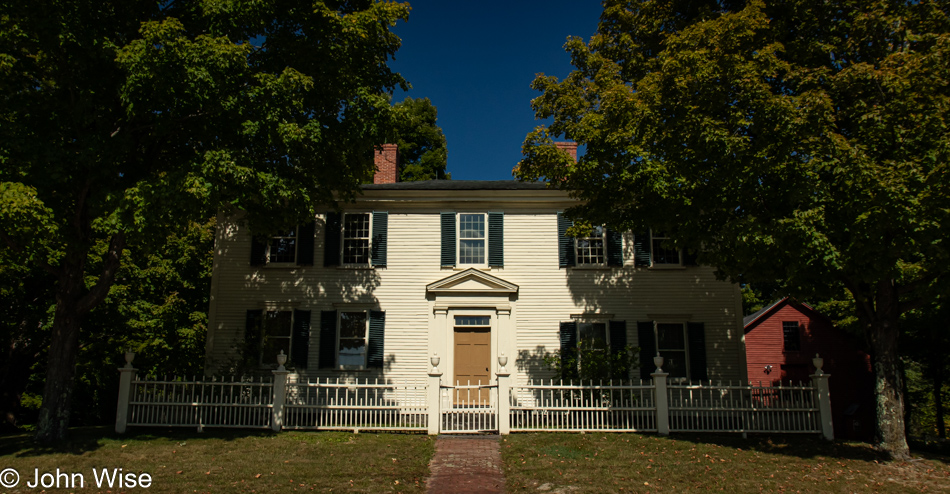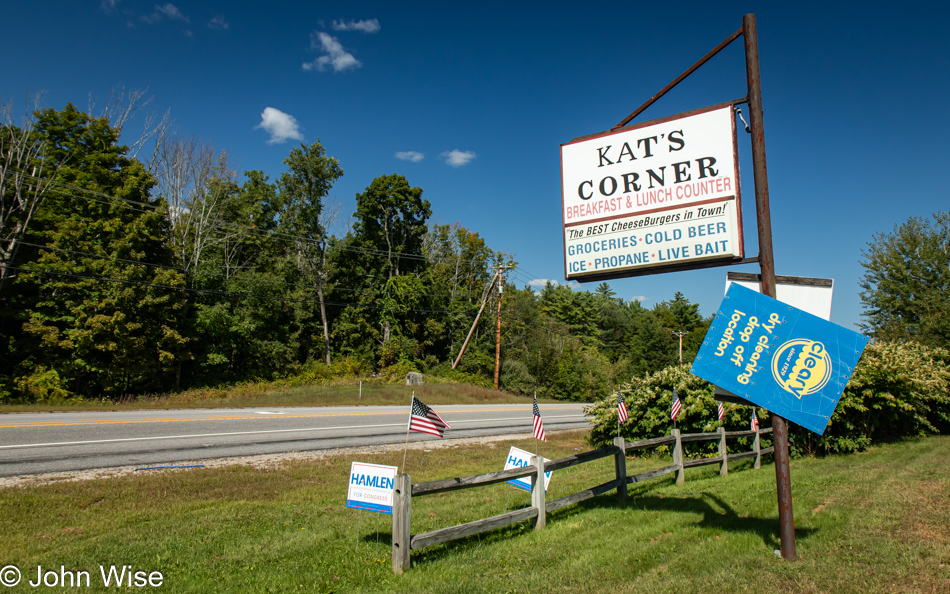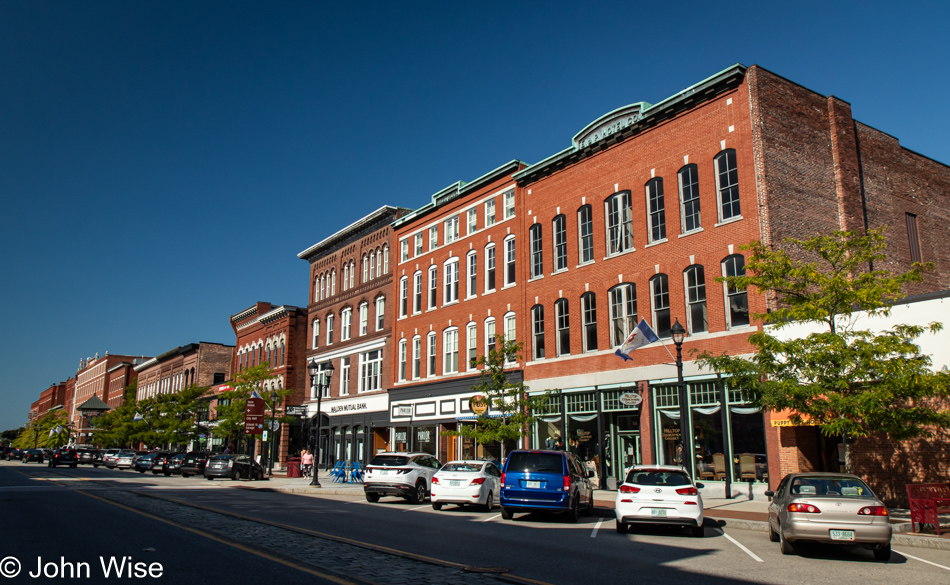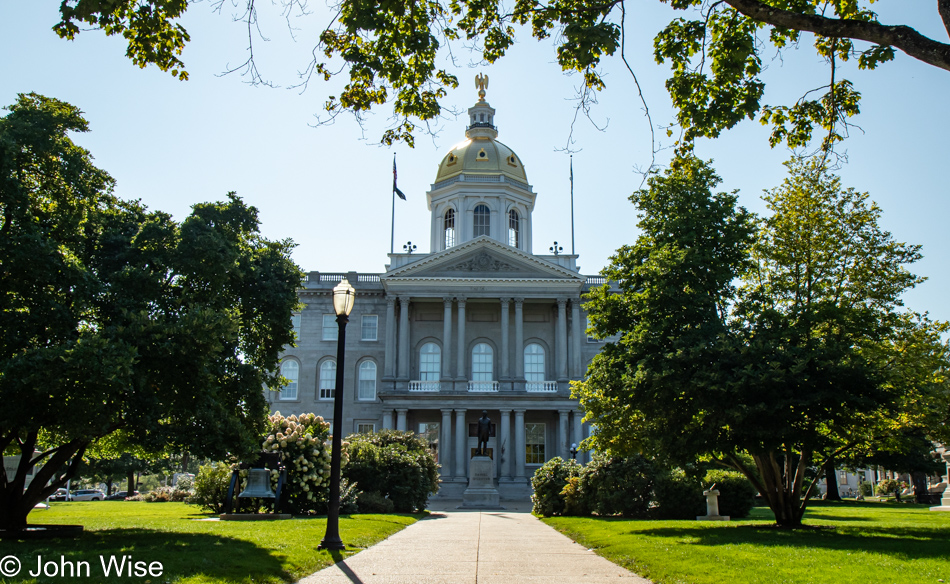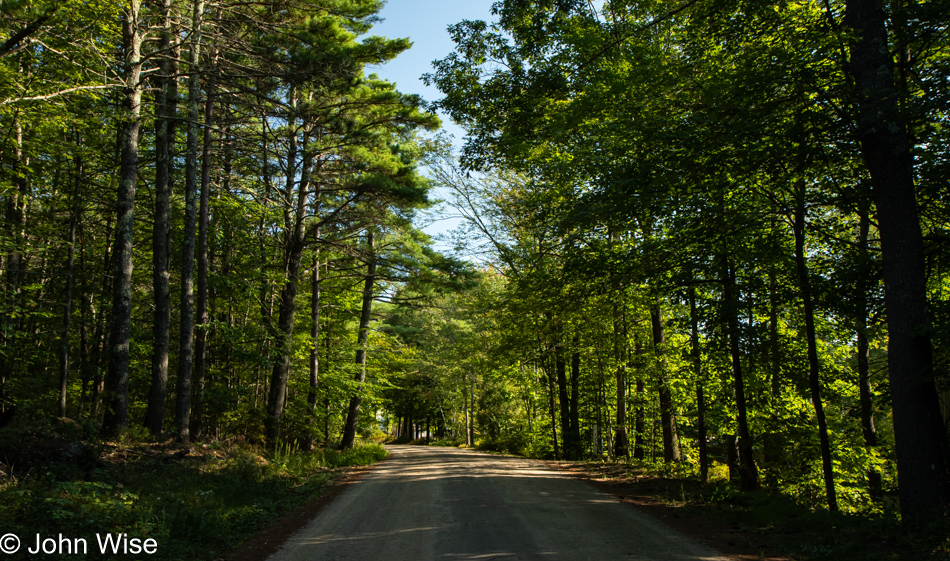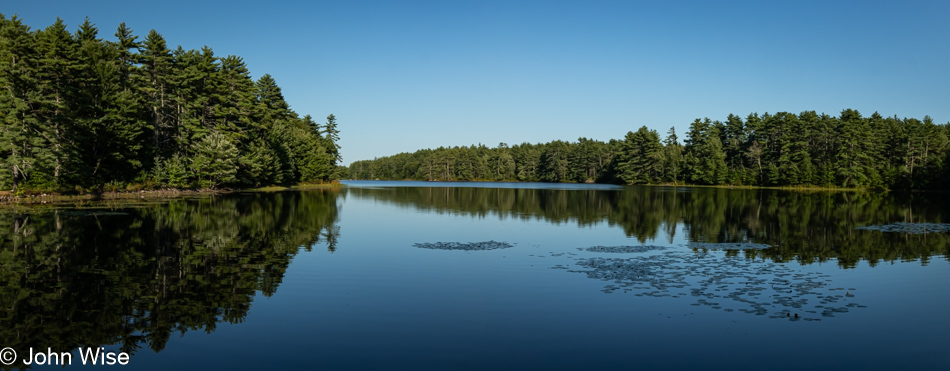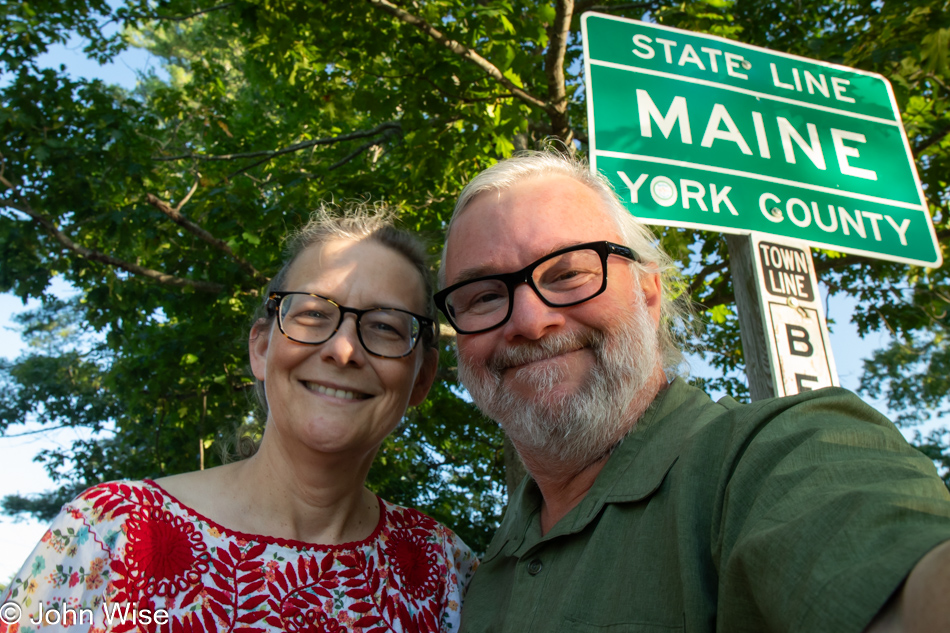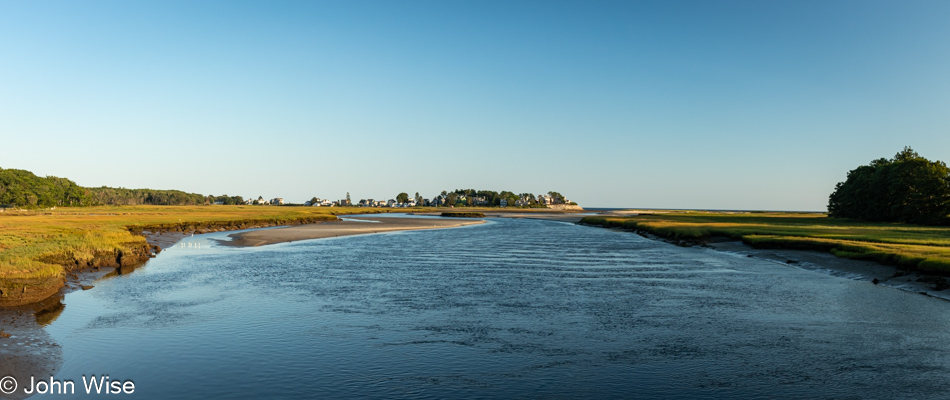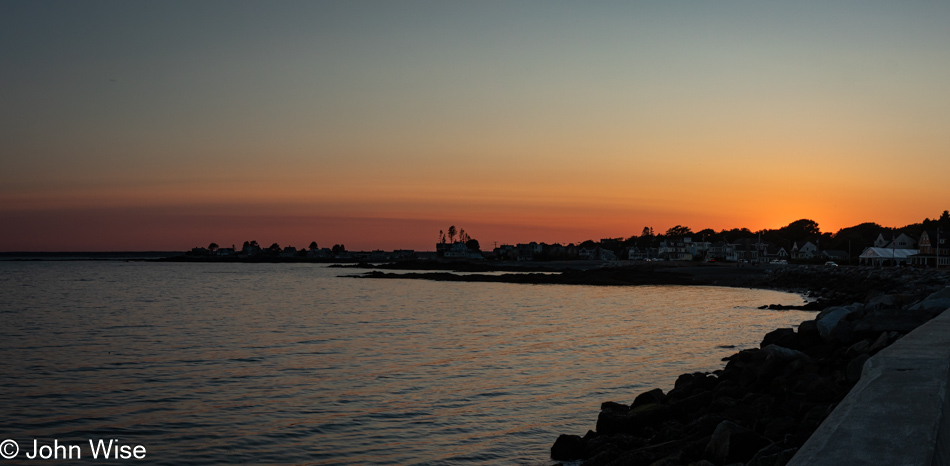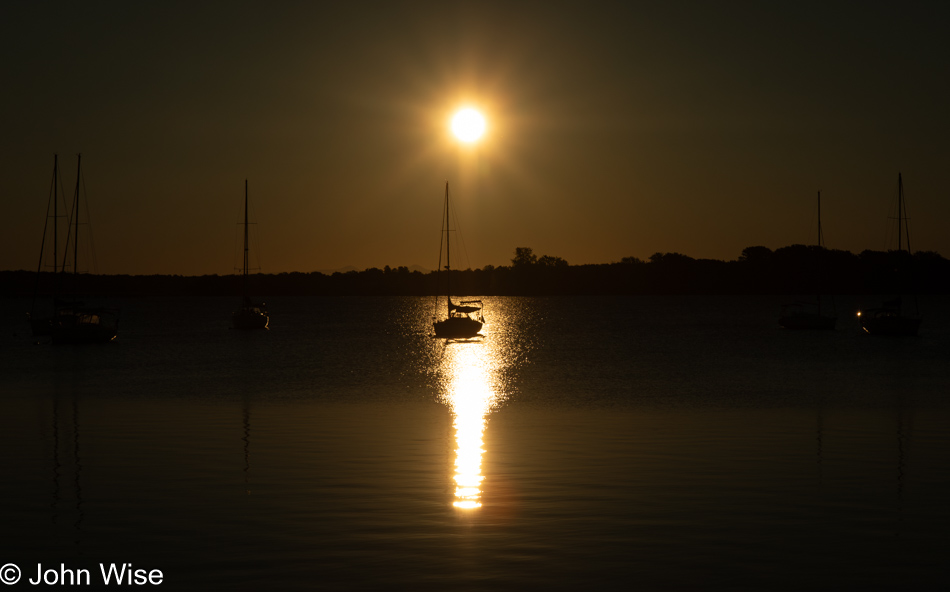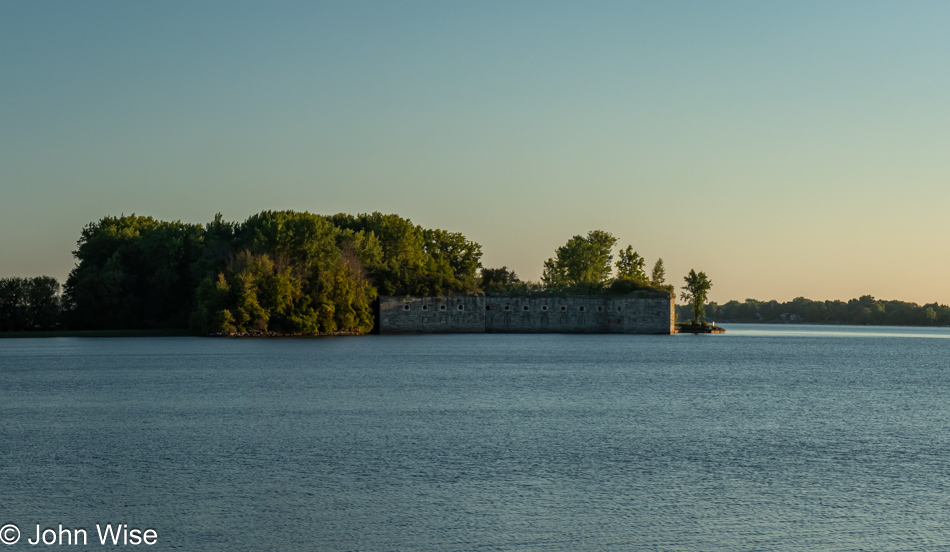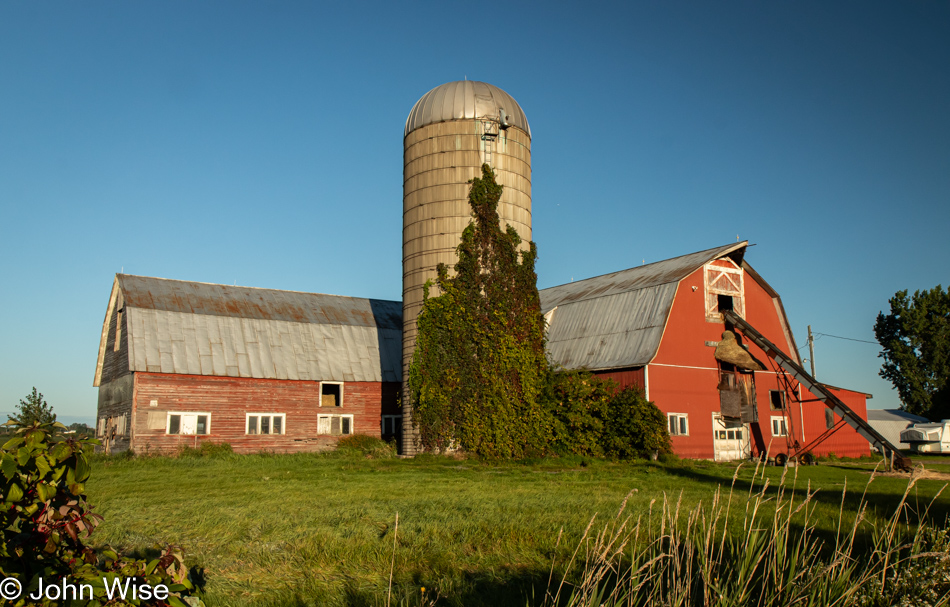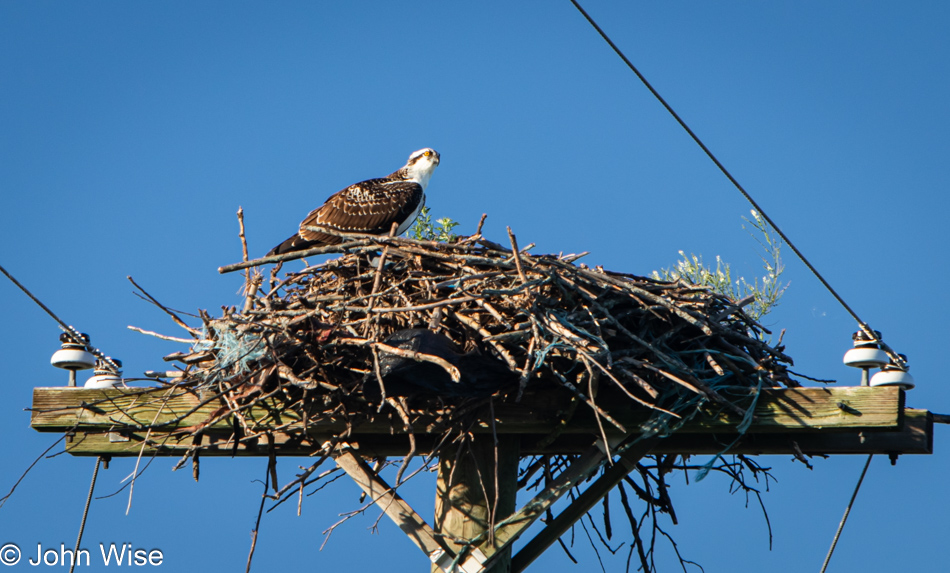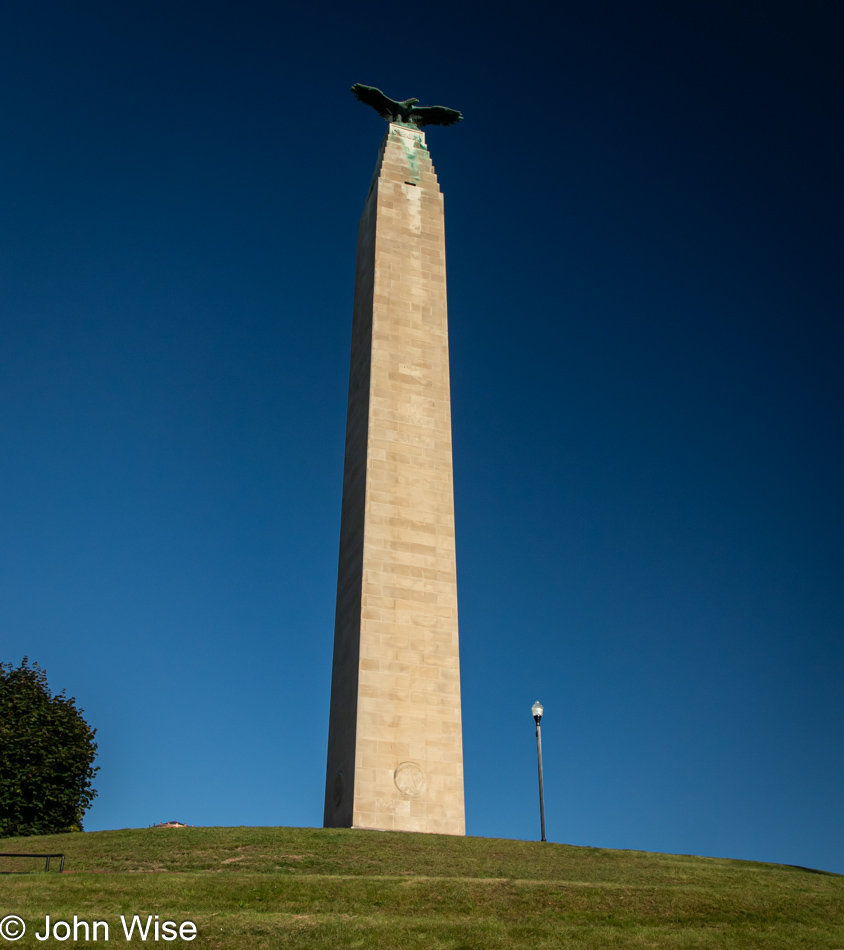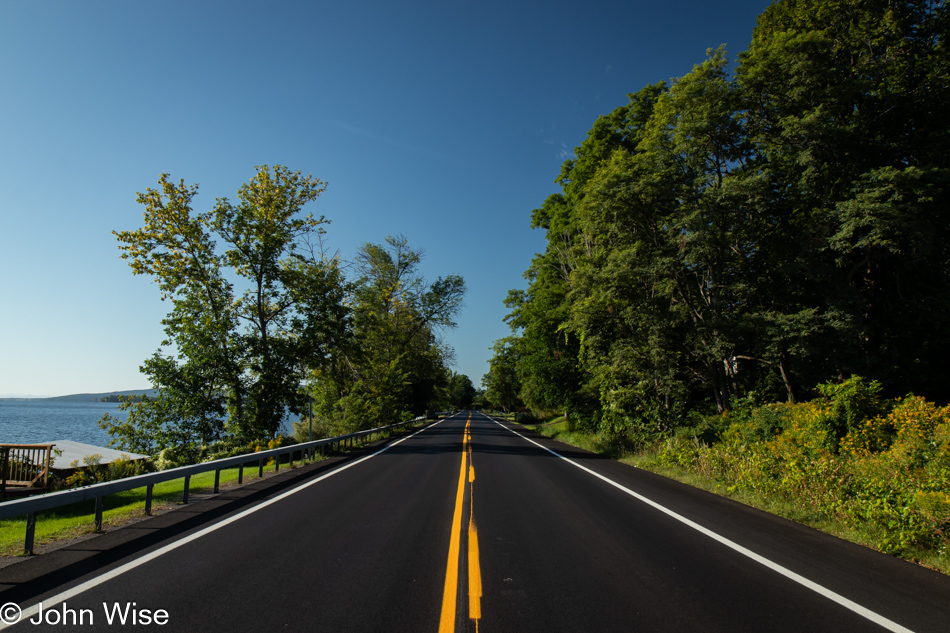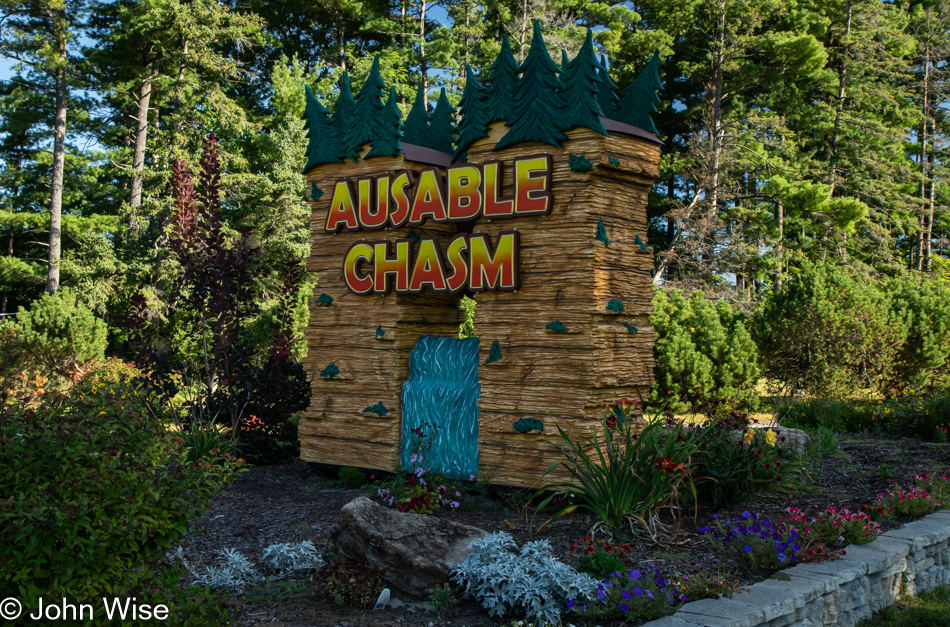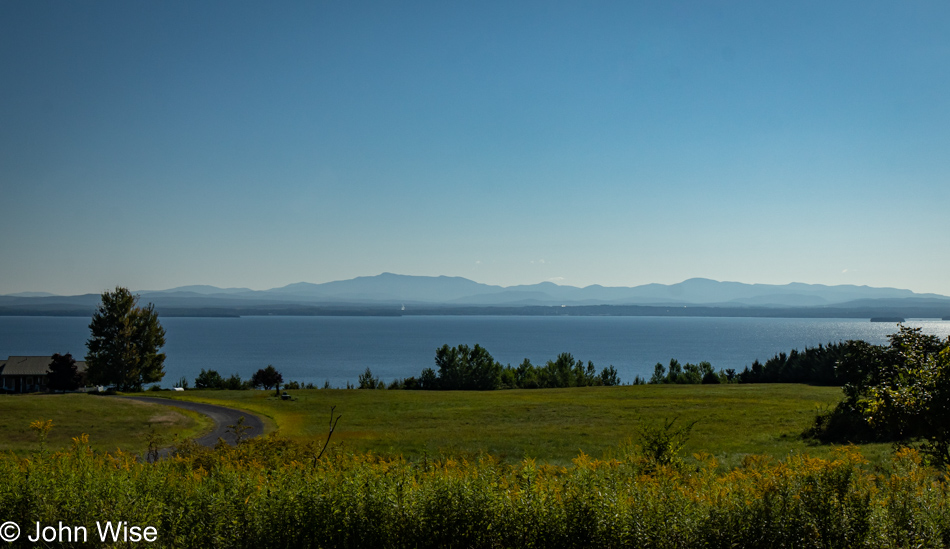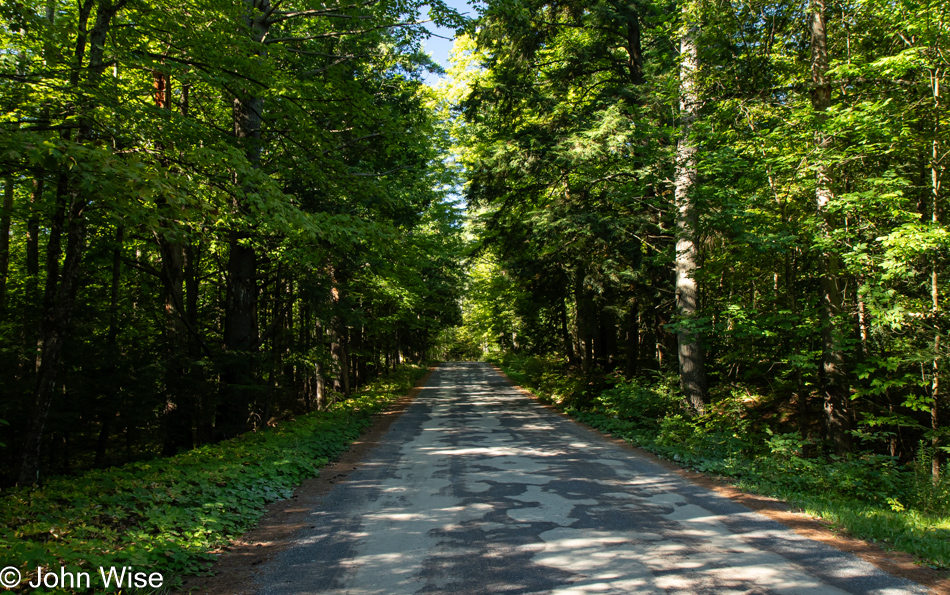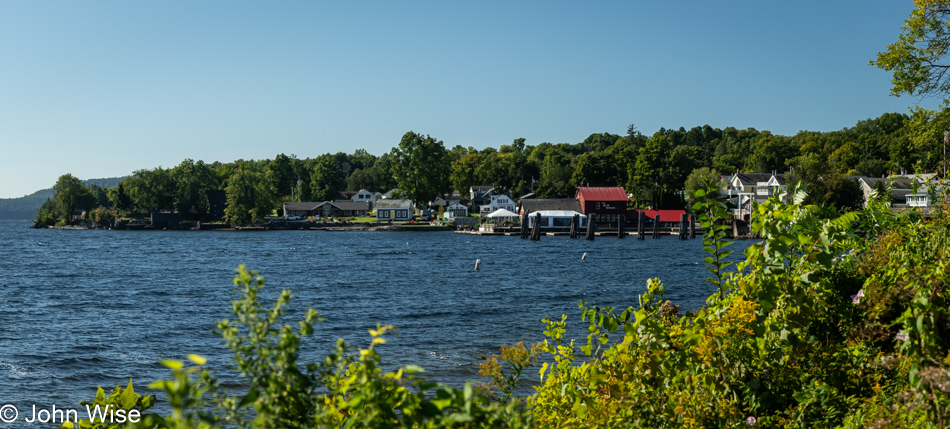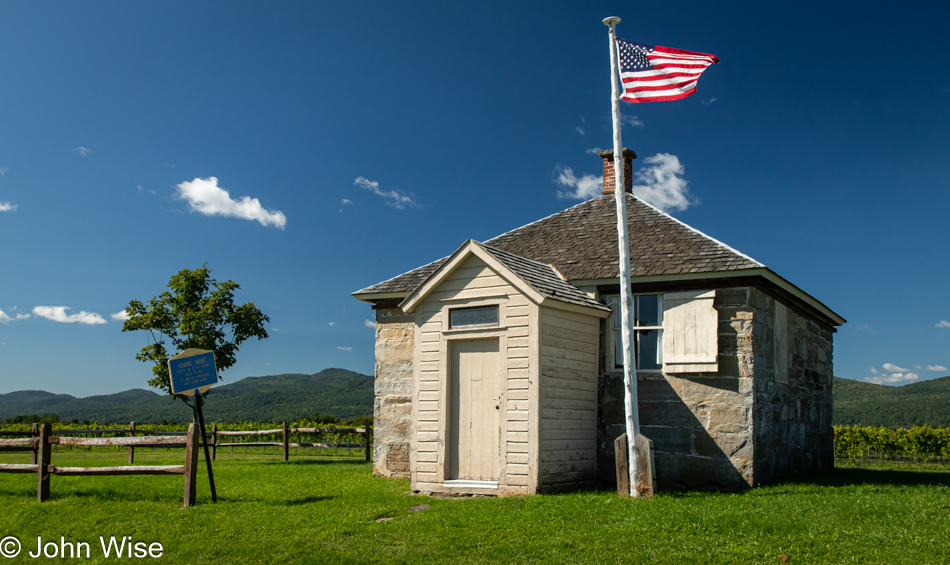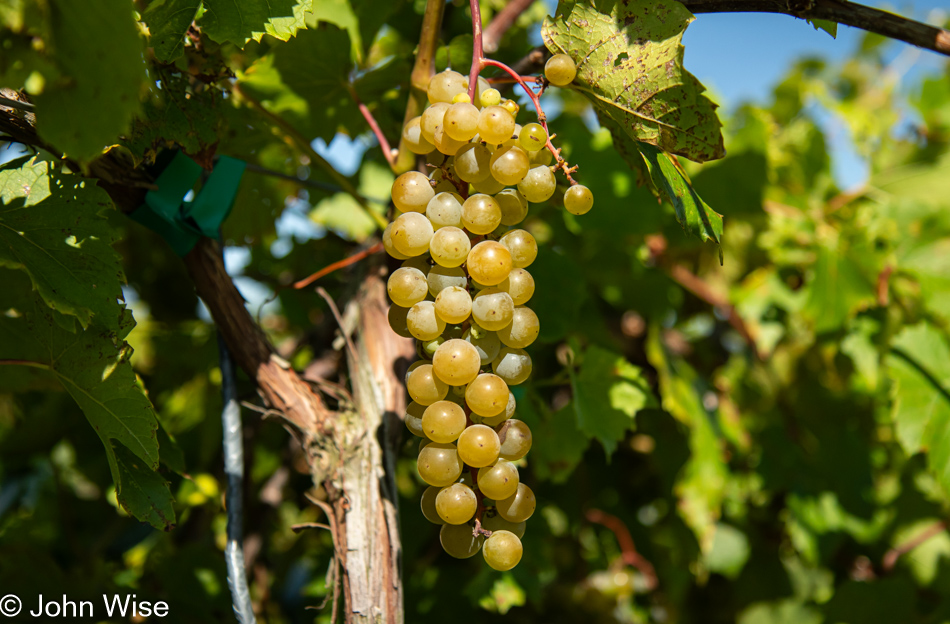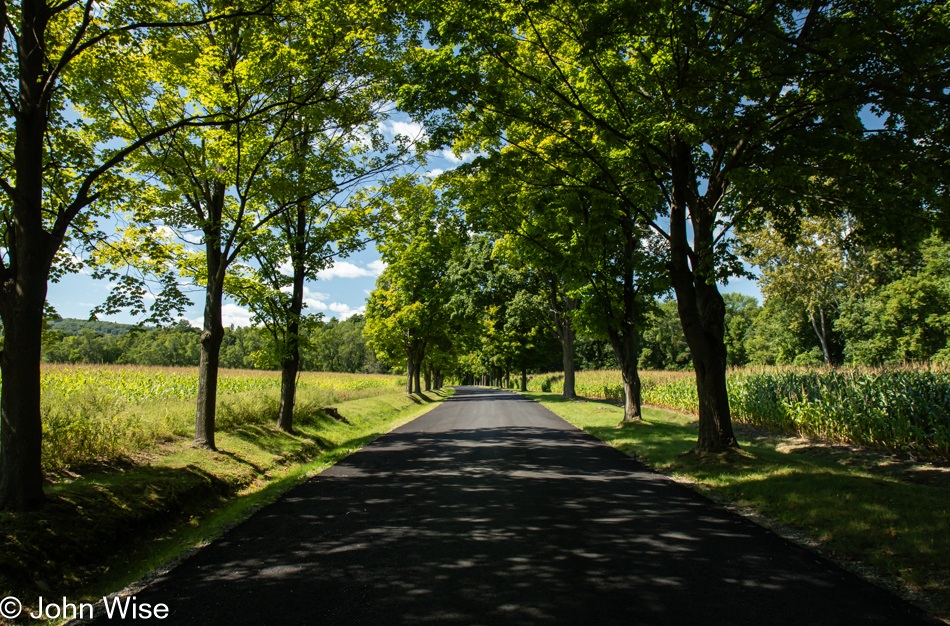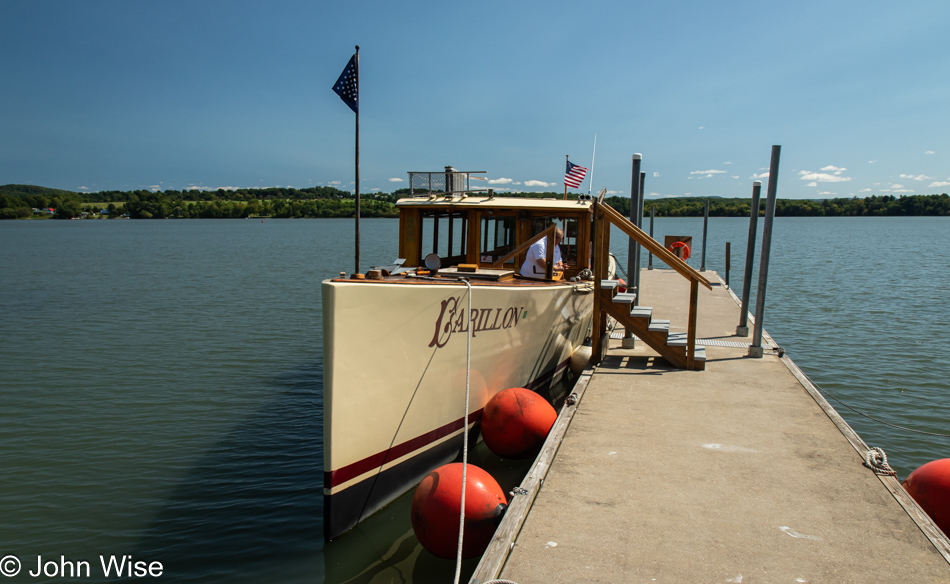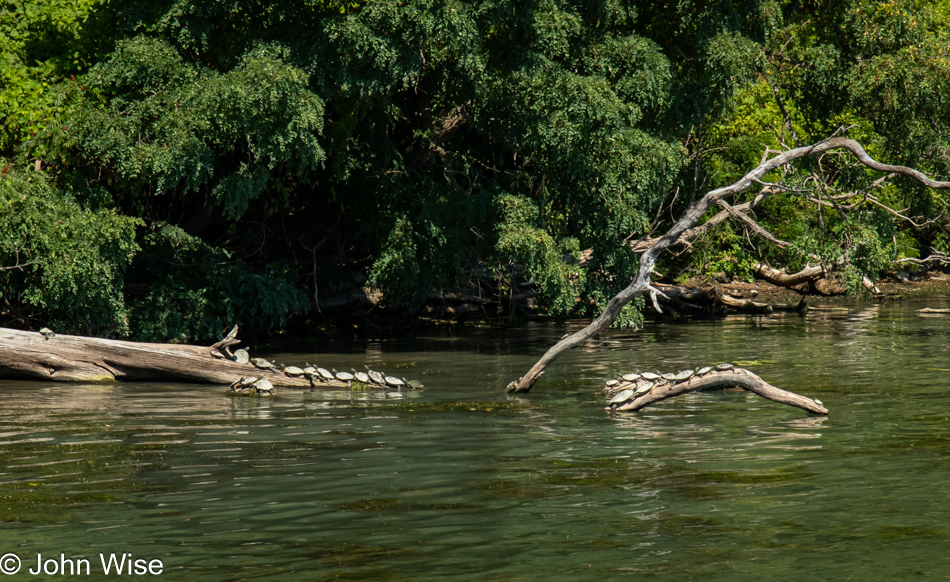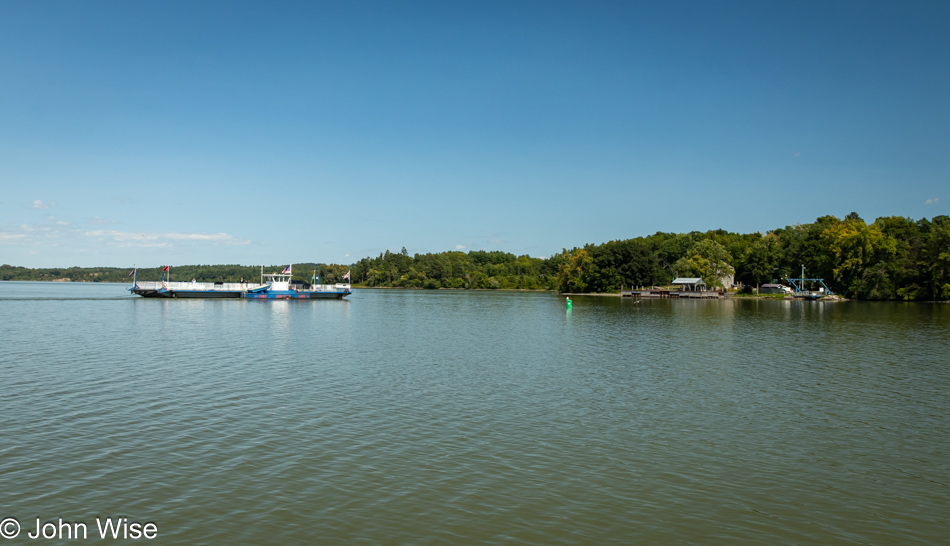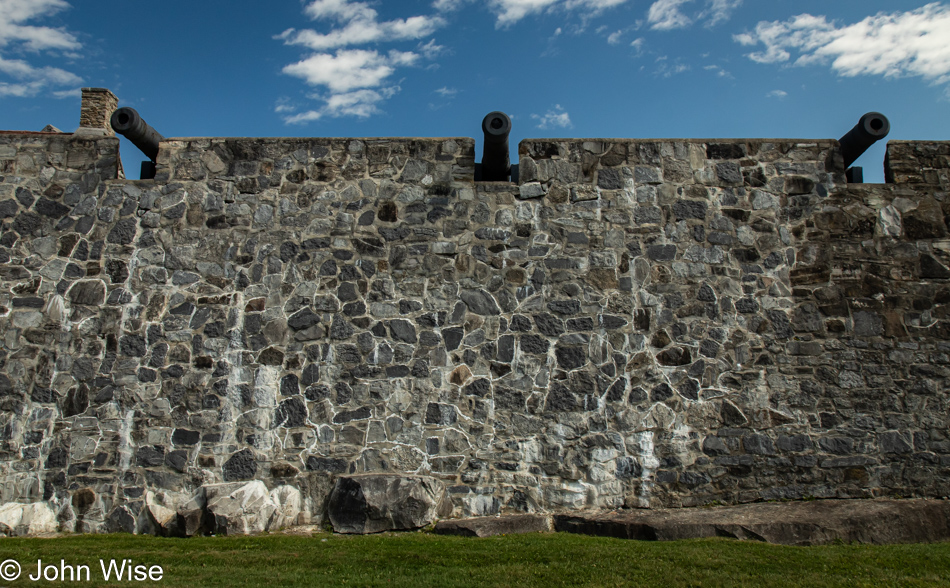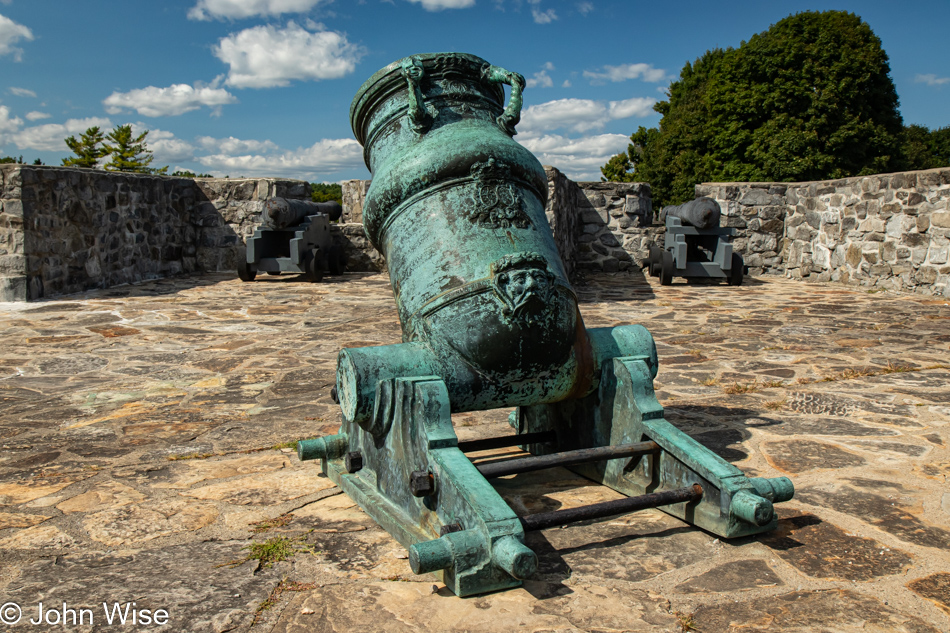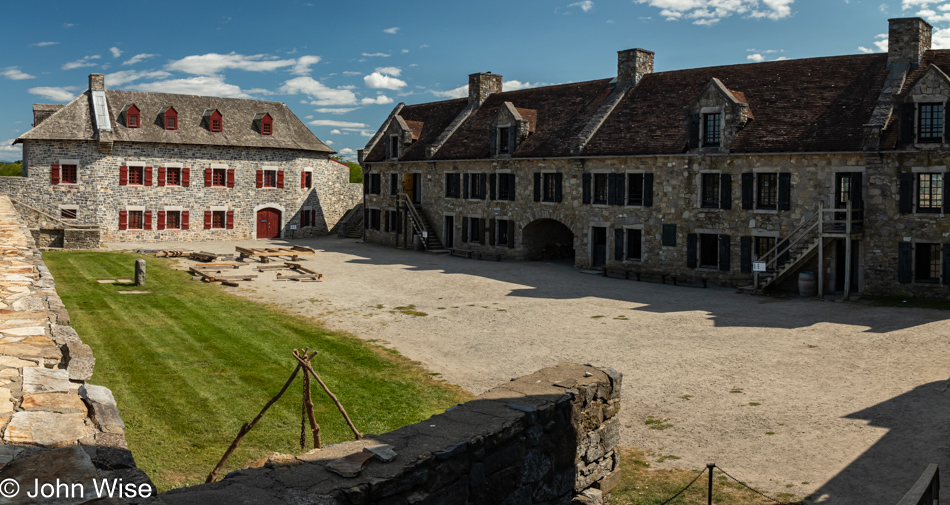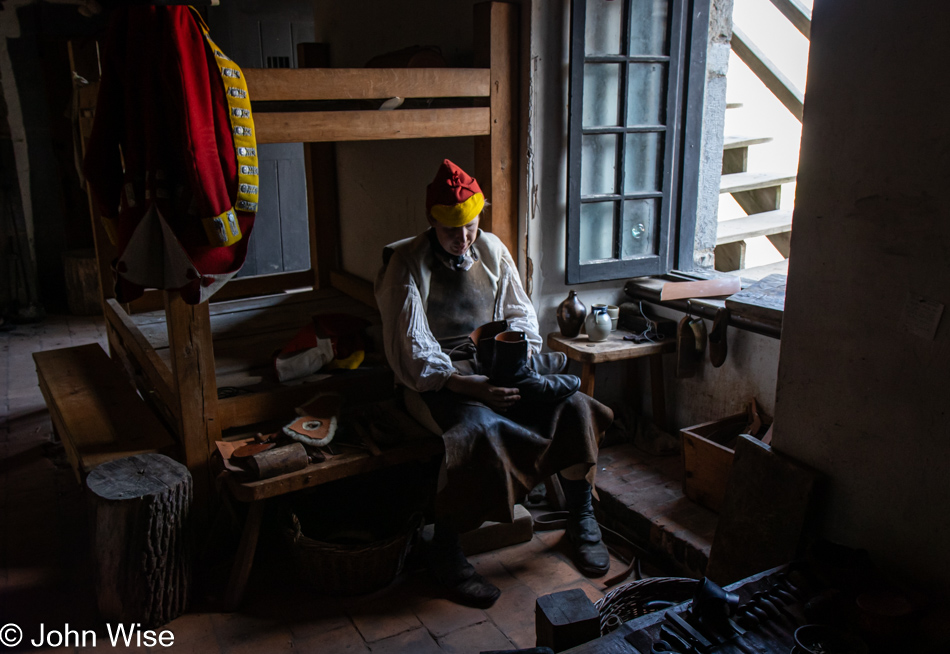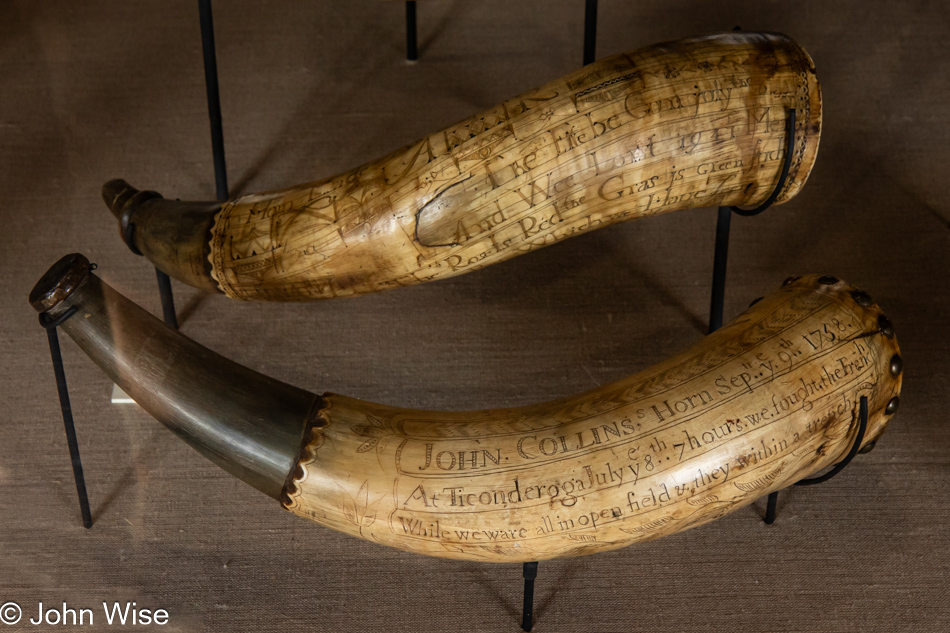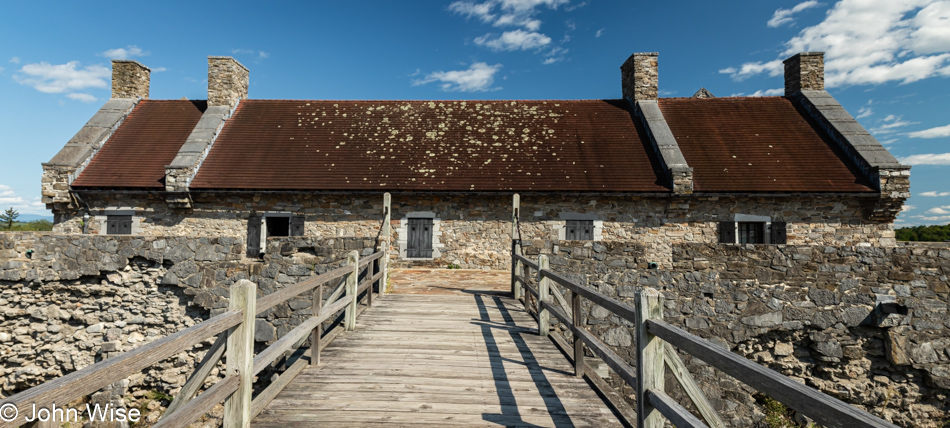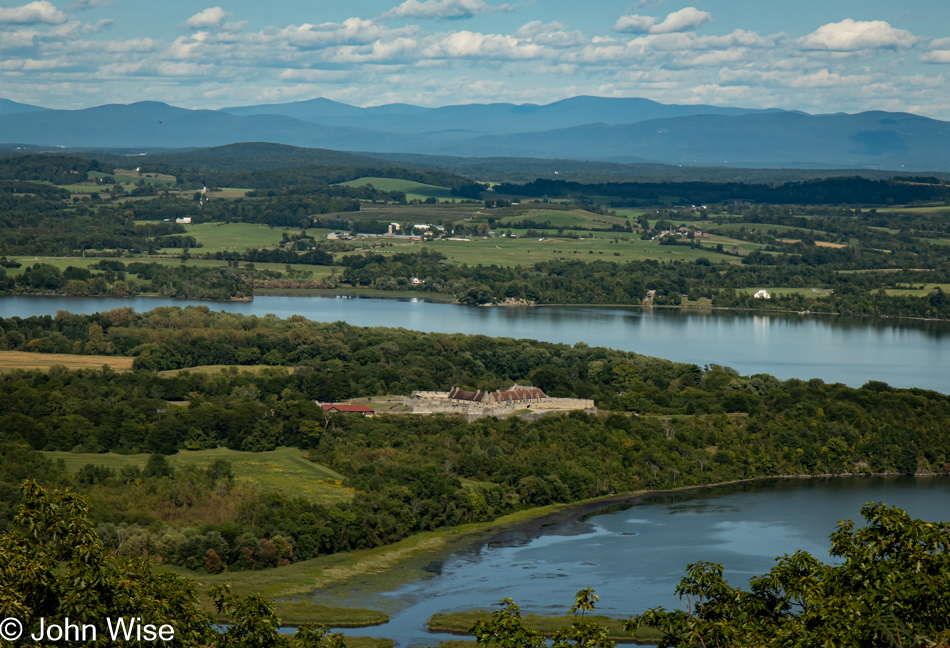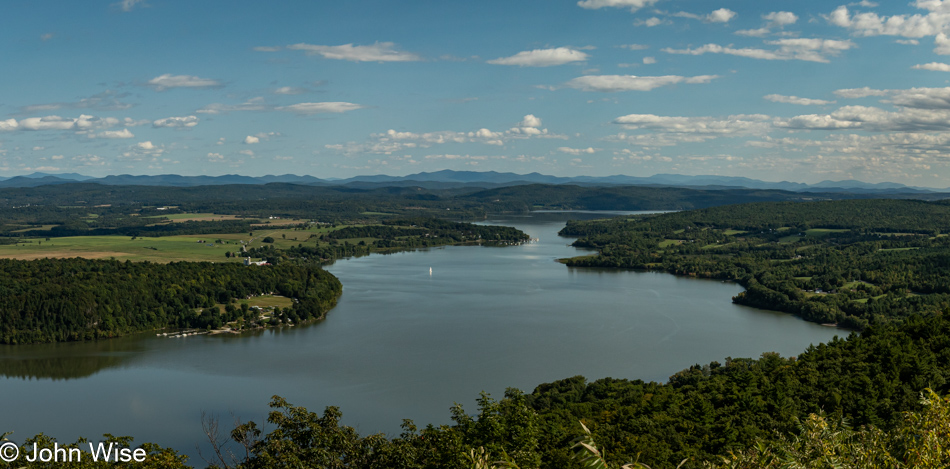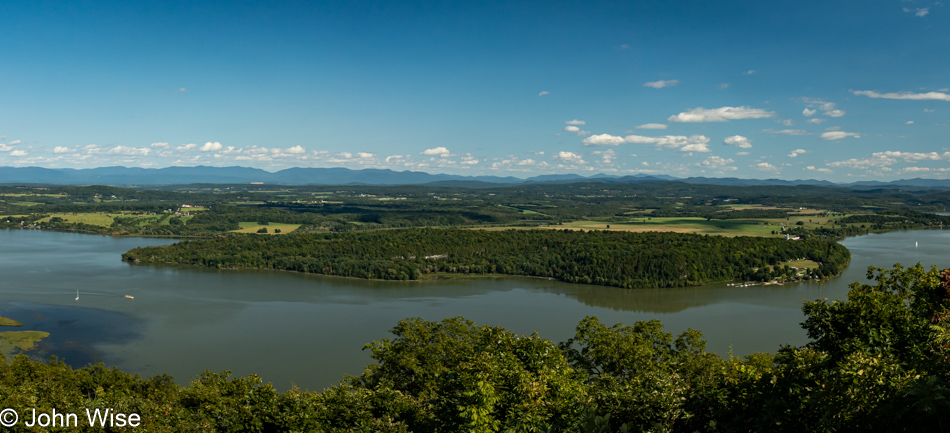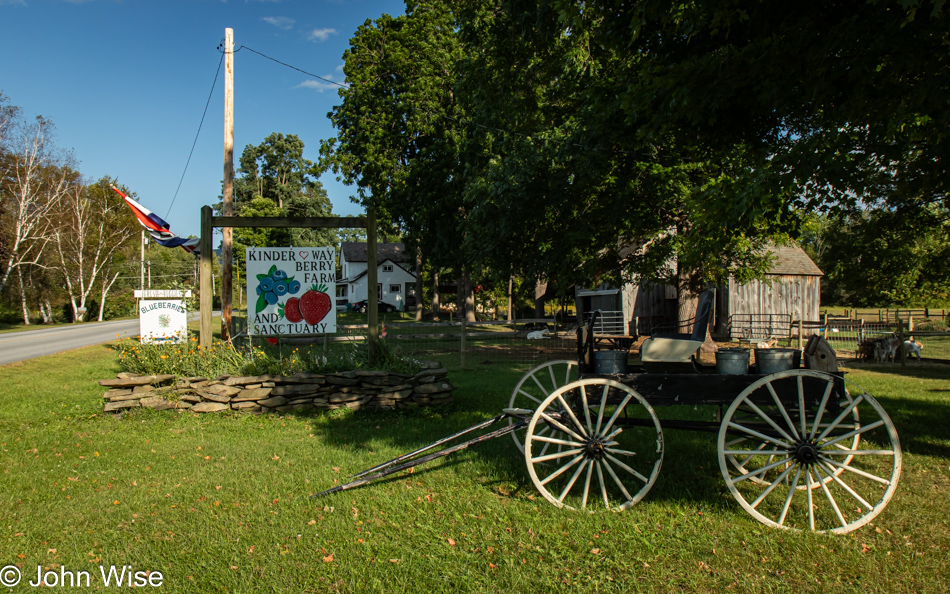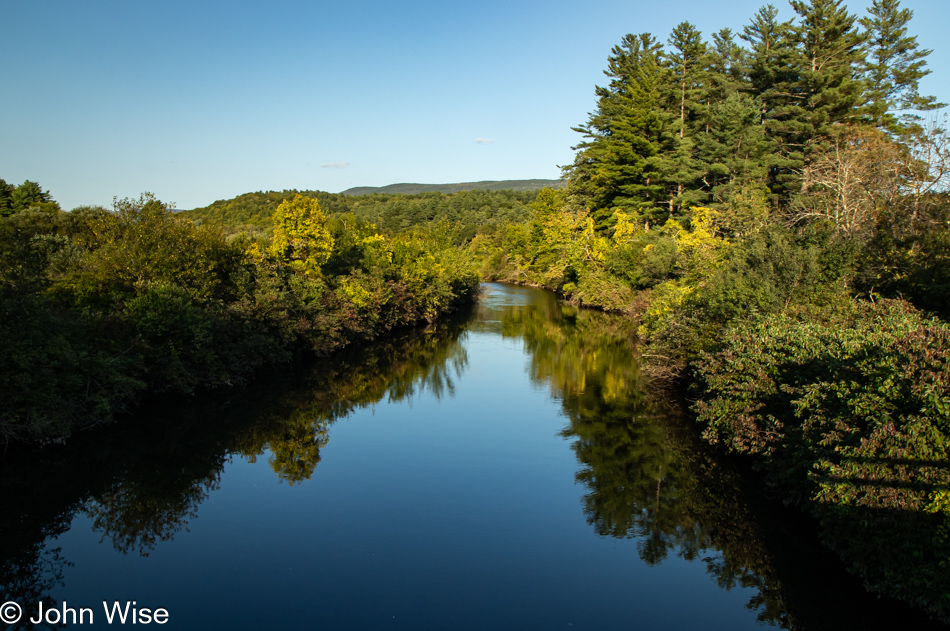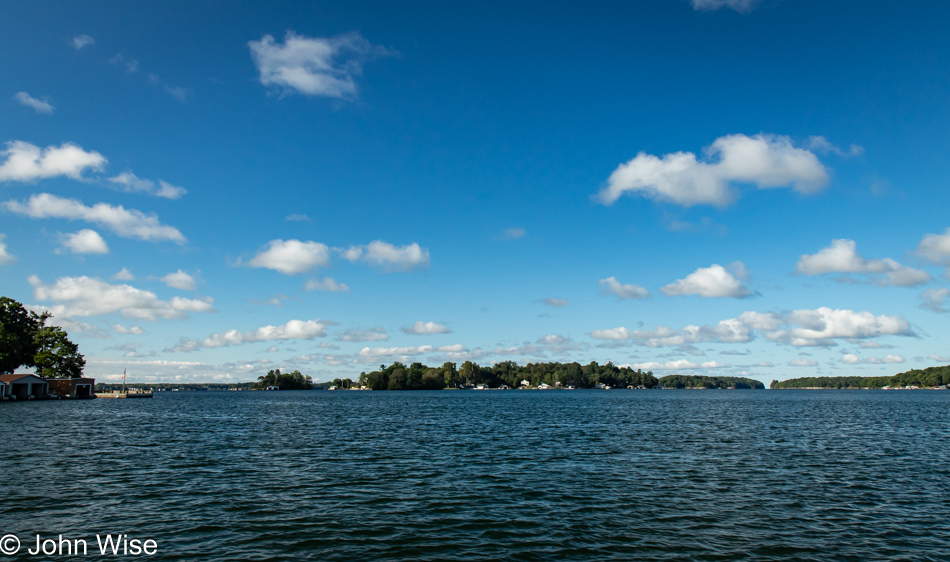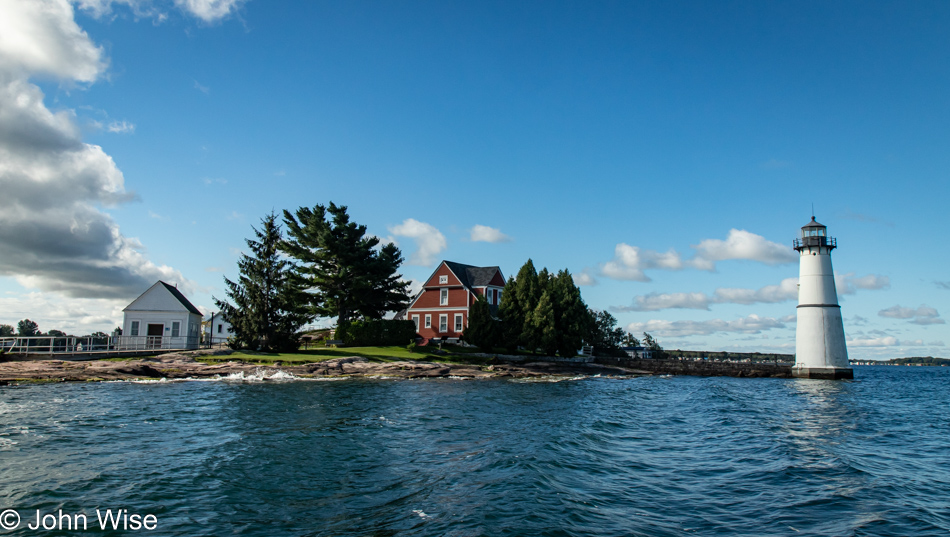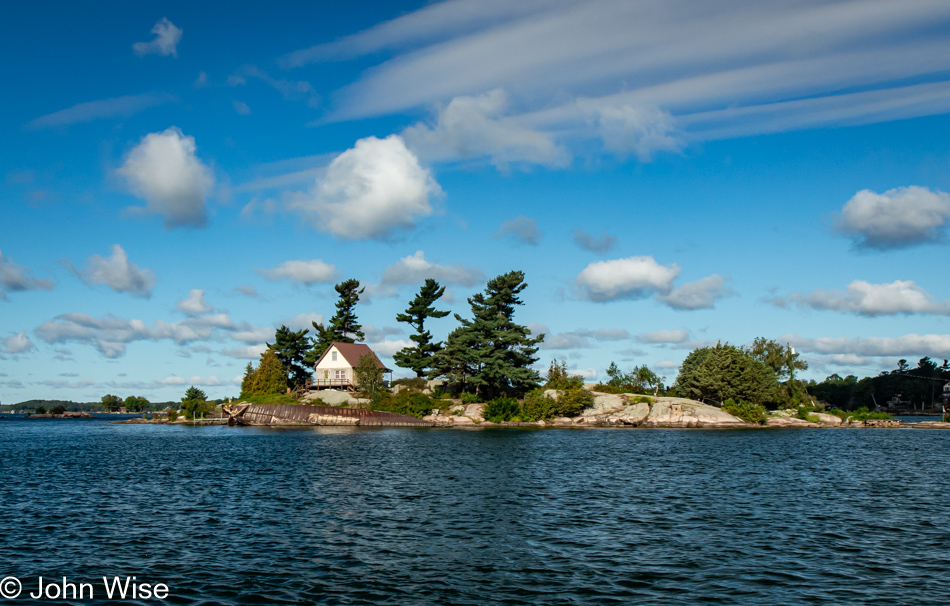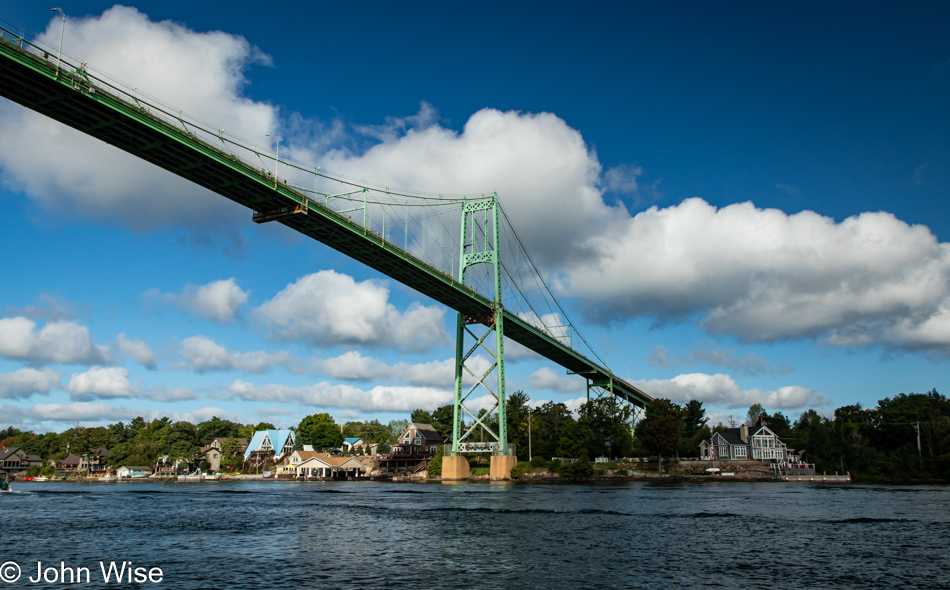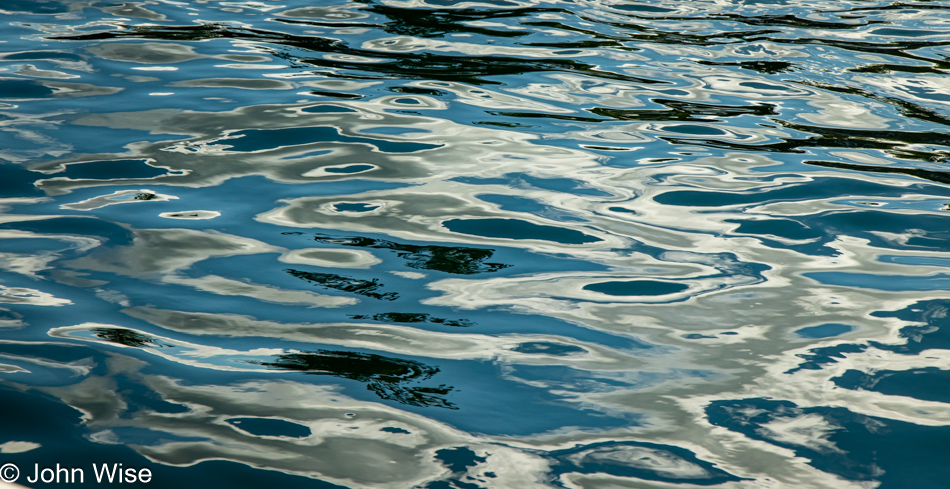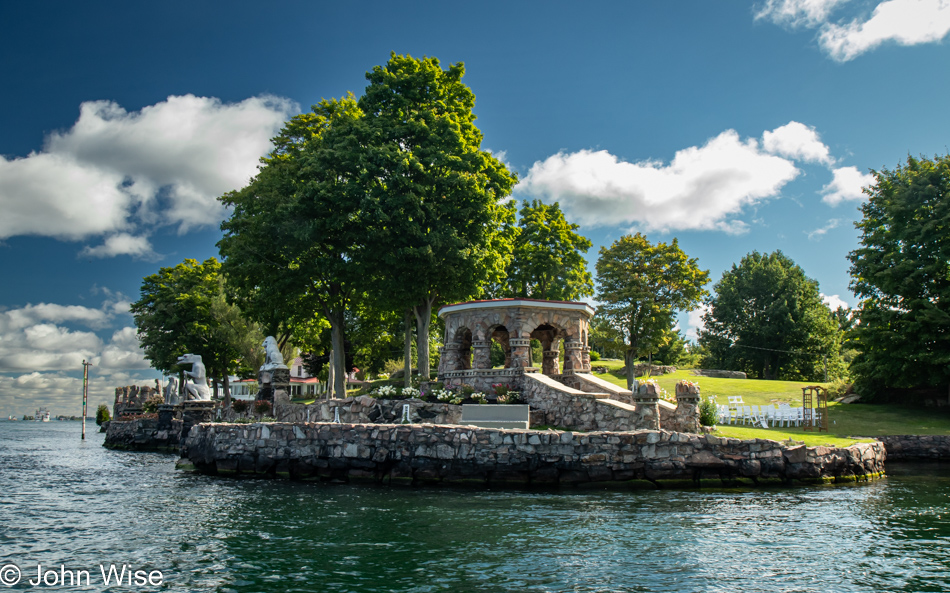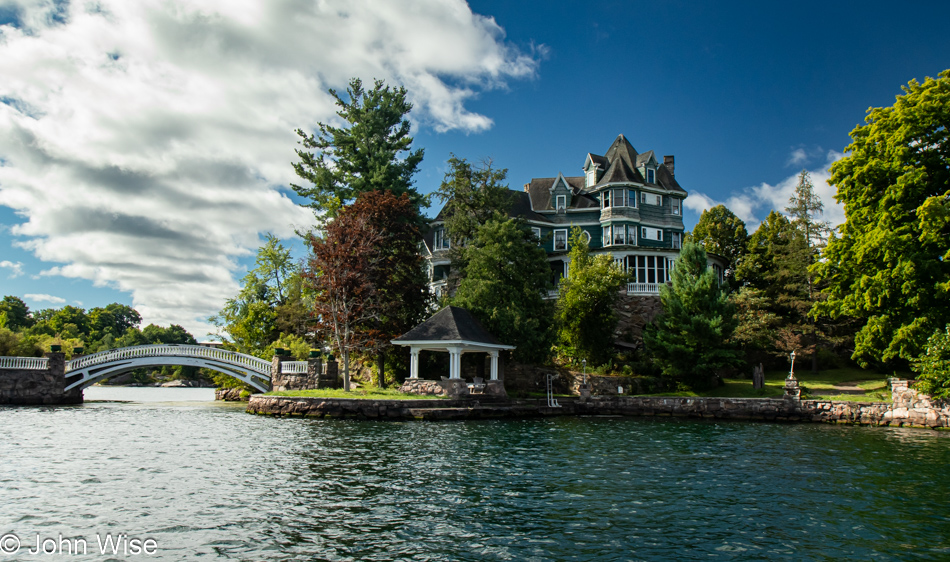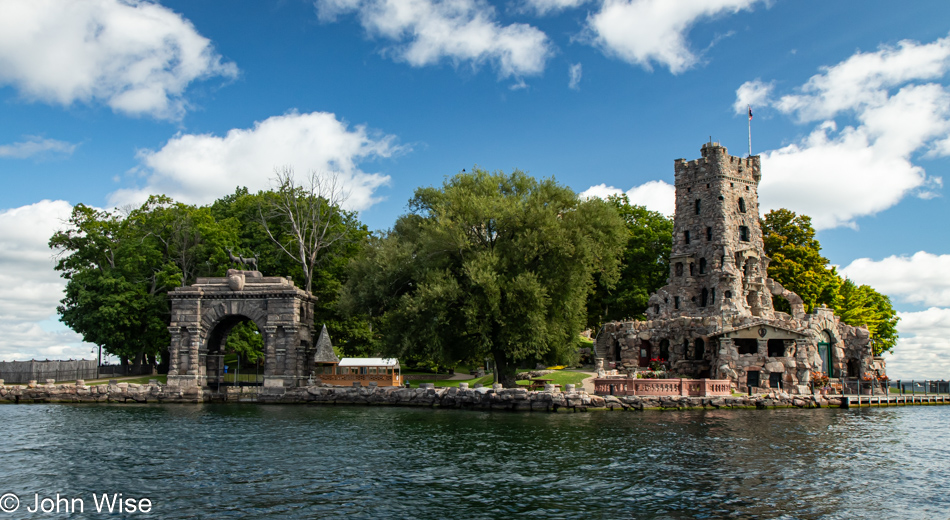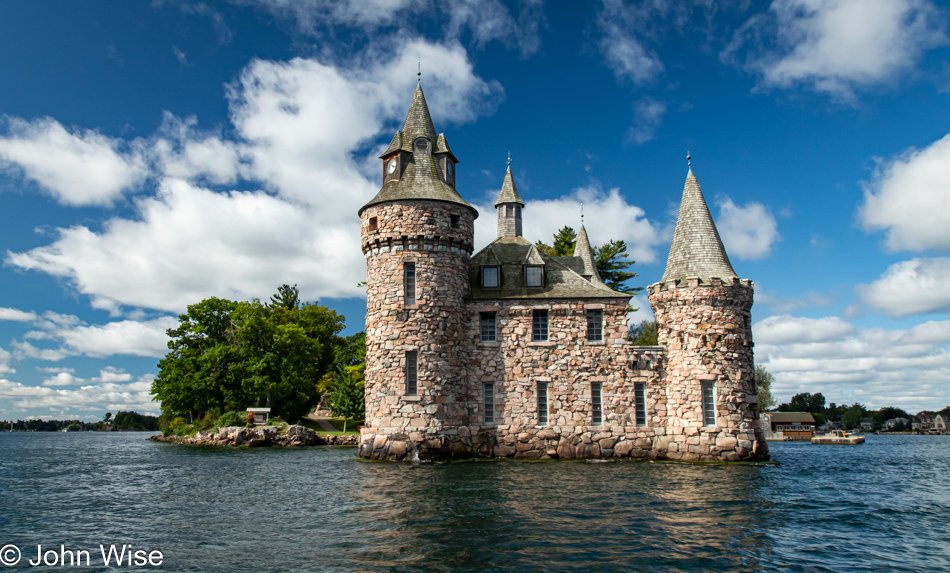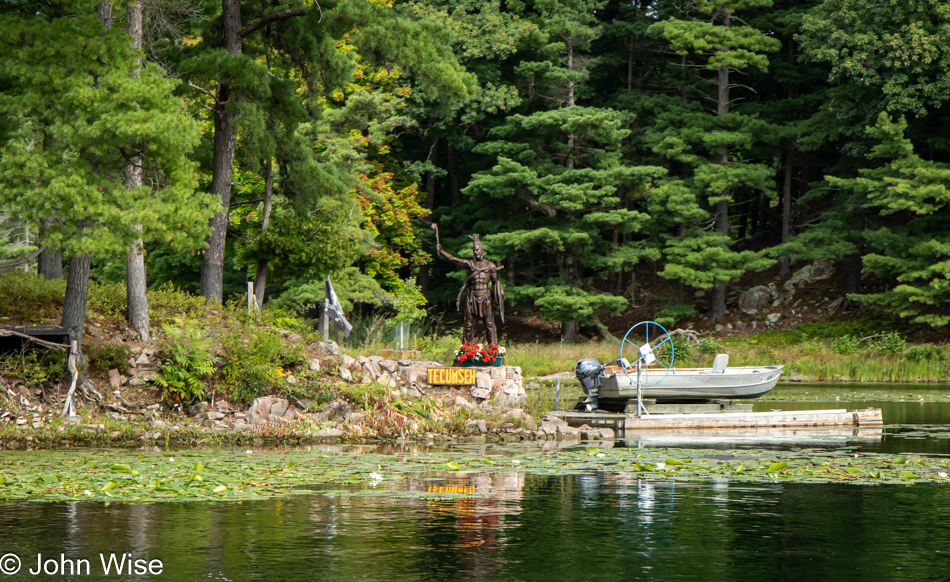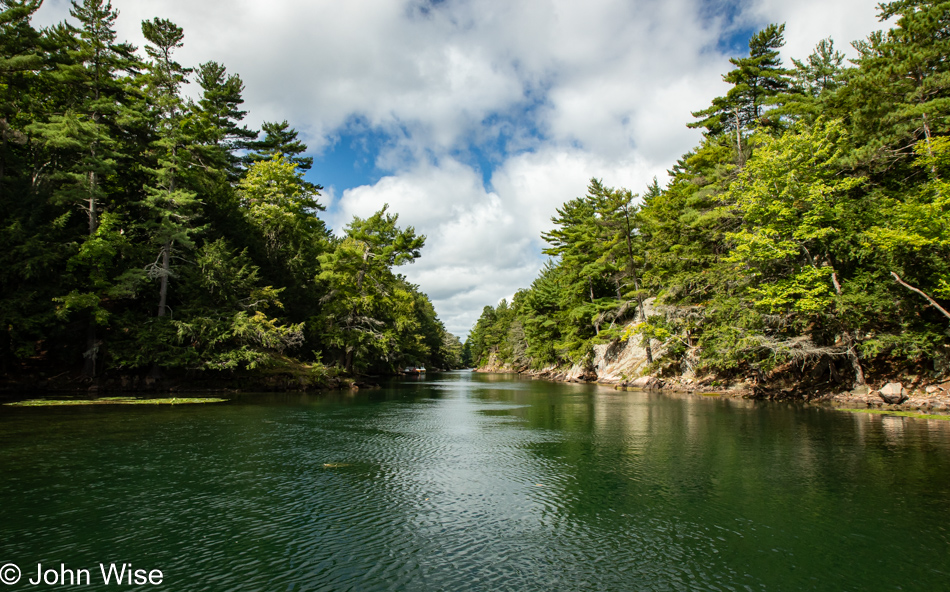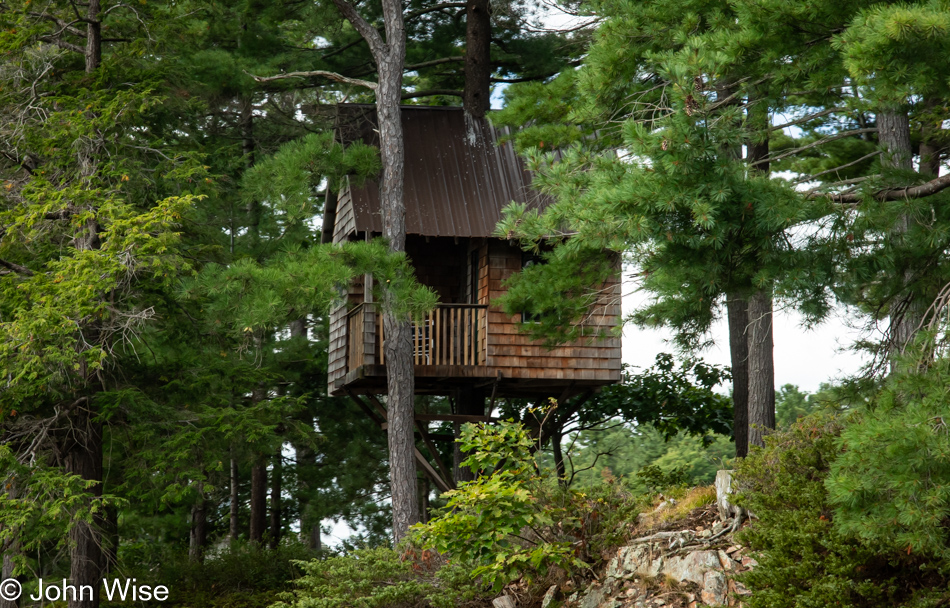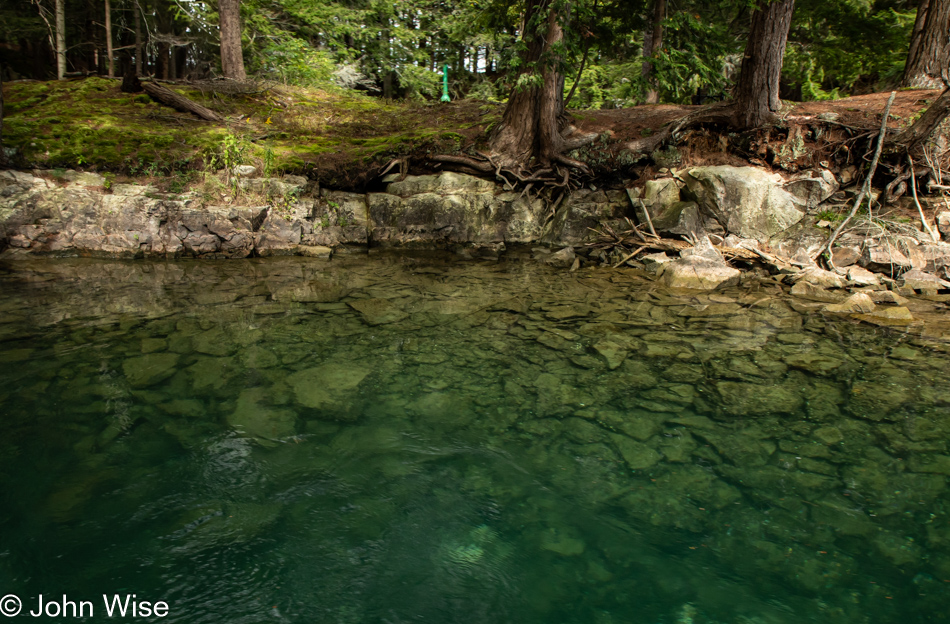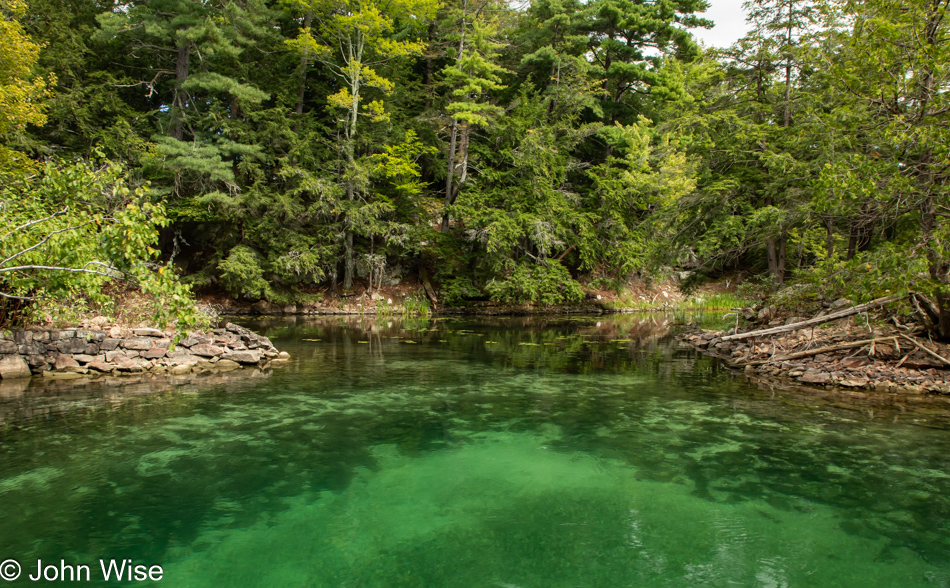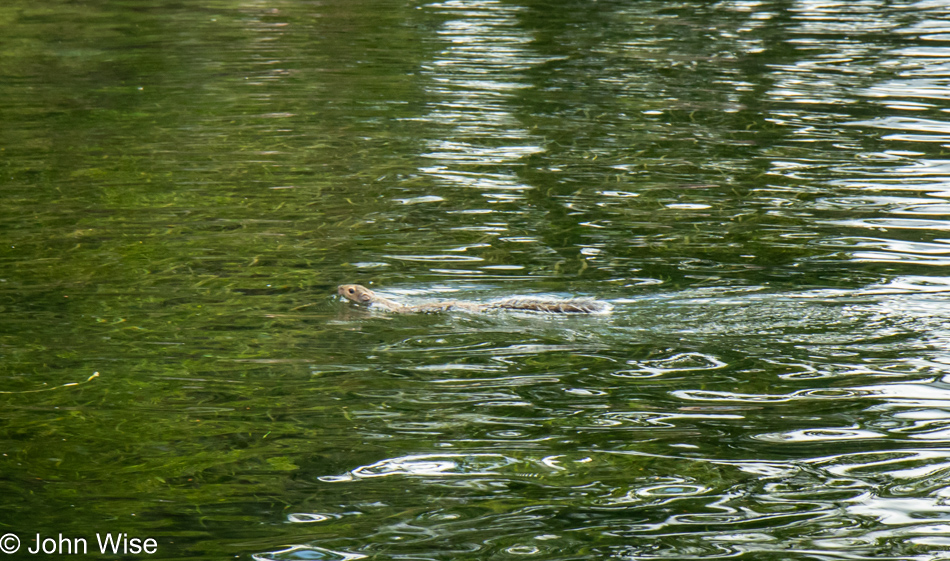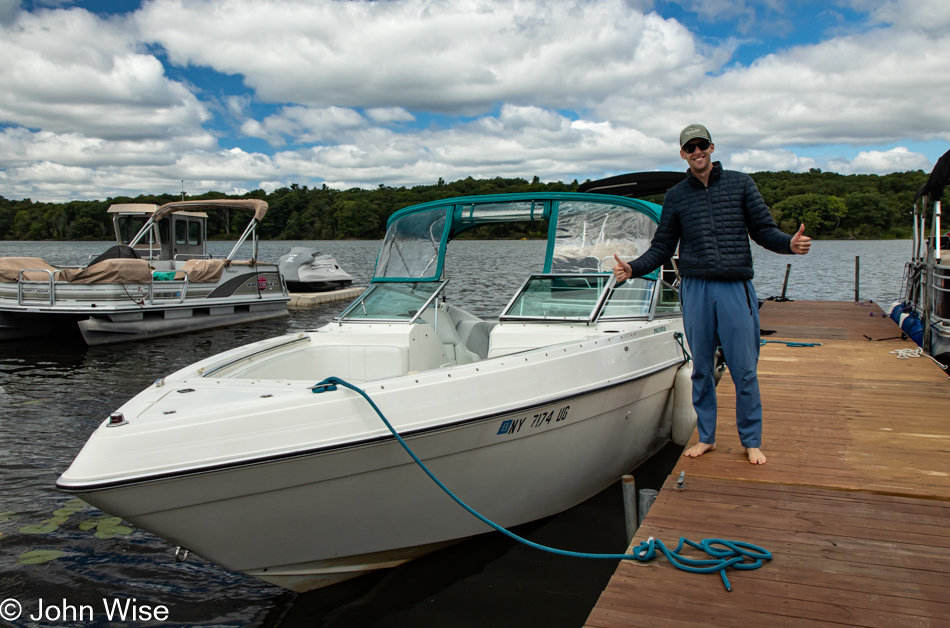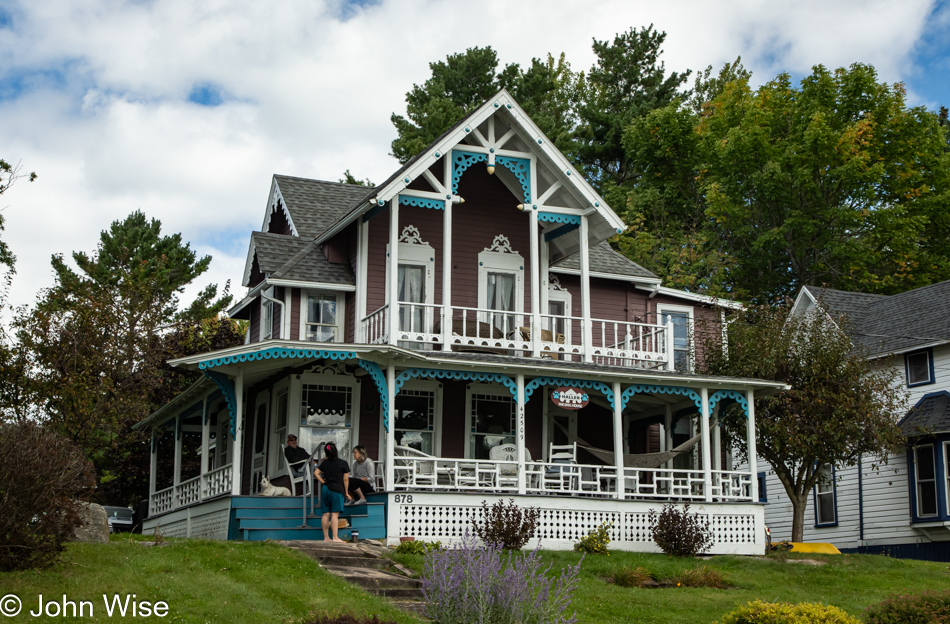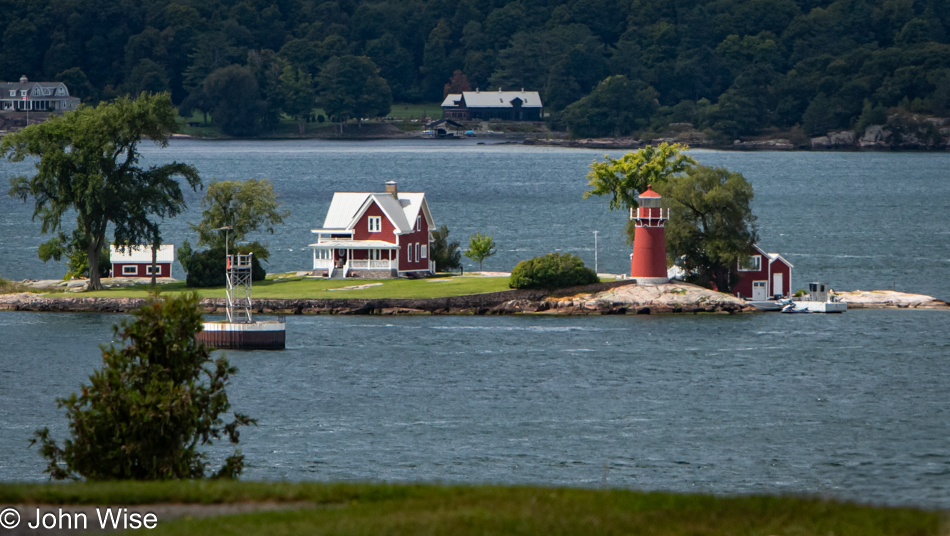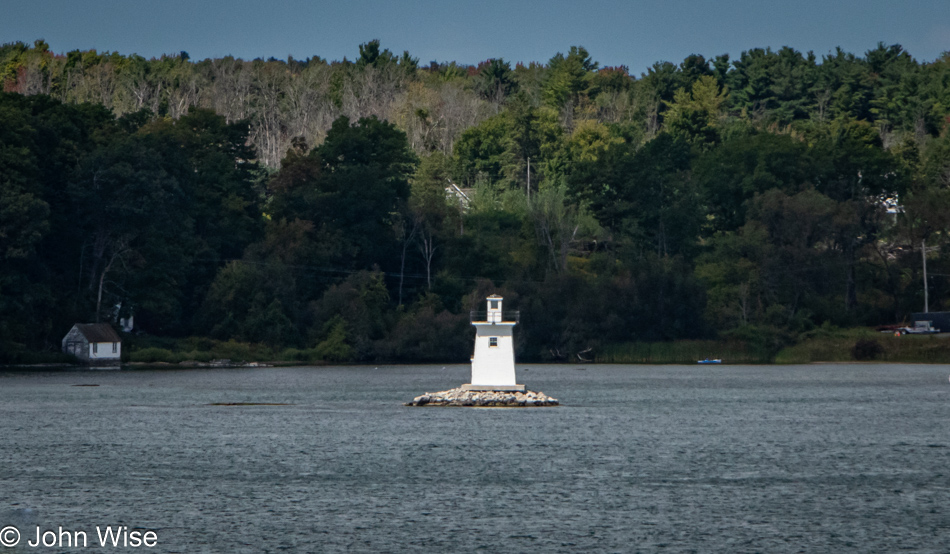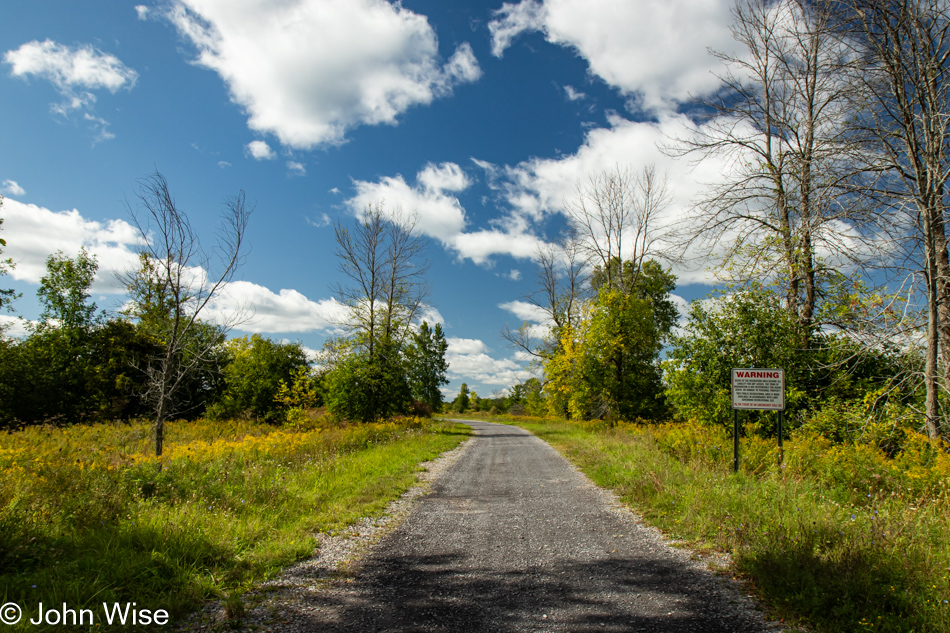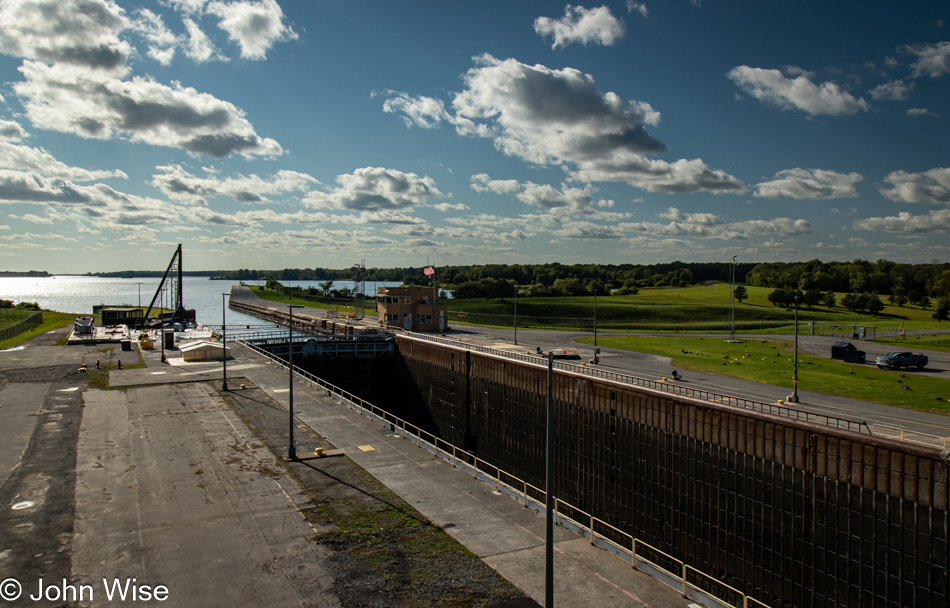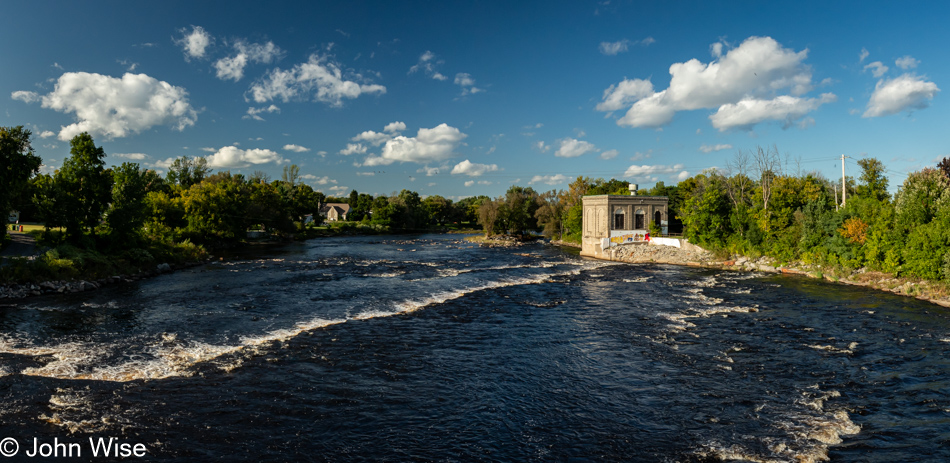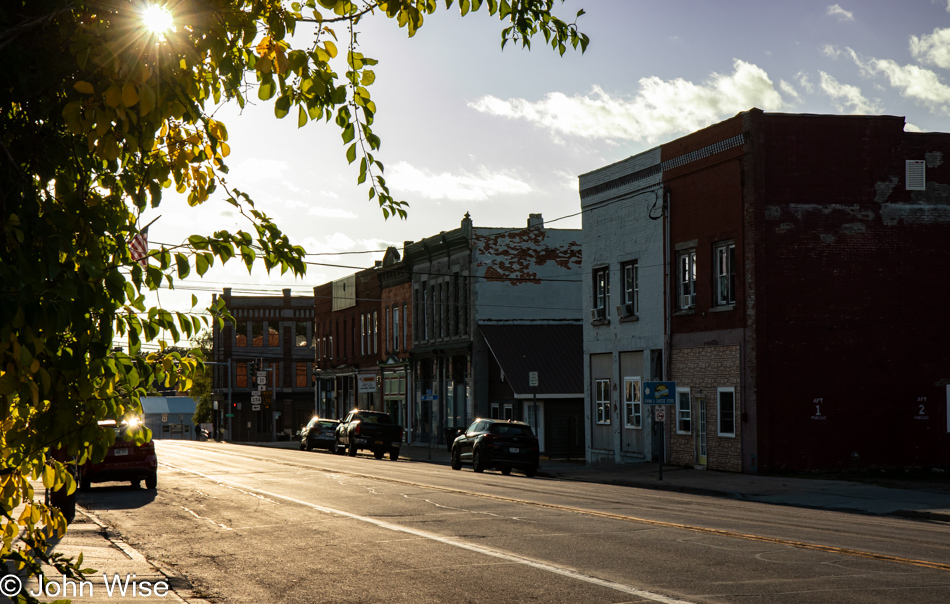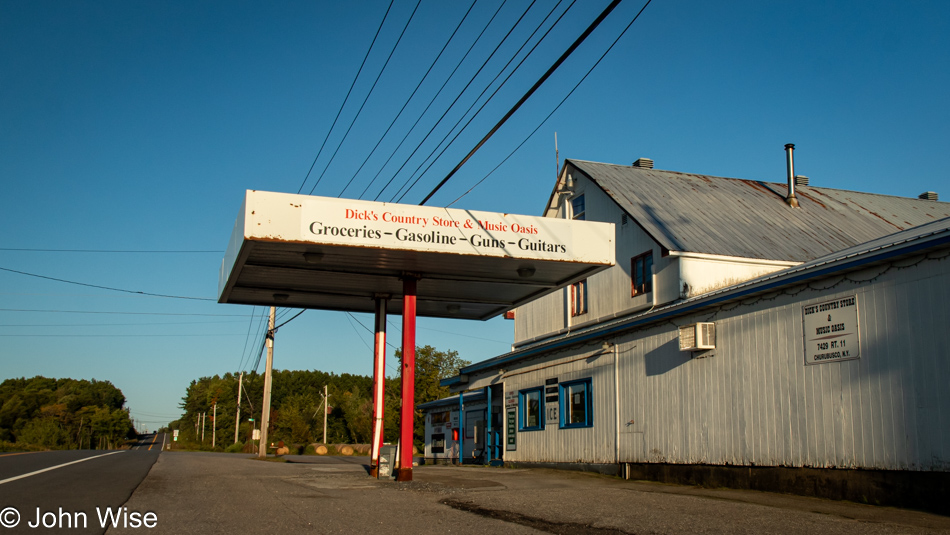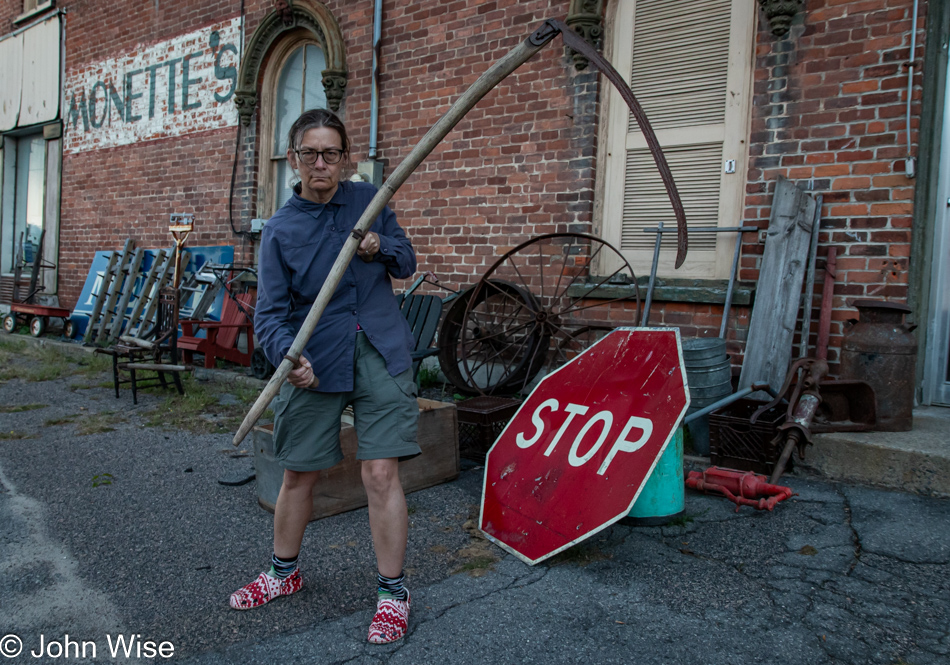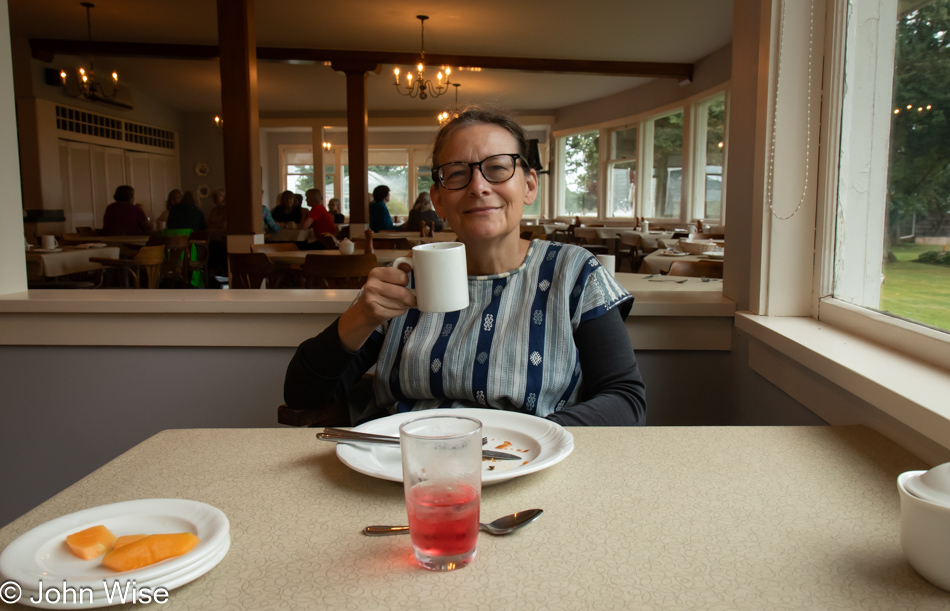
An unexpected luxury occurred on the way into our vacation: our U.S. dollars have arrived in Canada with a 30% premium. Everything we are paying for is thirty percent cheaper than anticipated, so we are dipping into extravagance. We’ve not upgraded anything; our lodging is still at Shaw’s Hotel & Cottages here on Prince Edward Island, but we have upped our attitude, as you can see here from Caroline at breakfast in this perfectly situated dining room fronting the Bay of Brackley Beach. When we arrived last night, it was obvious we were on spacious grounds, and the veranda leading us to the front desk smacked of traditions with which we are typically unfamiliar, but we know how to adapt.
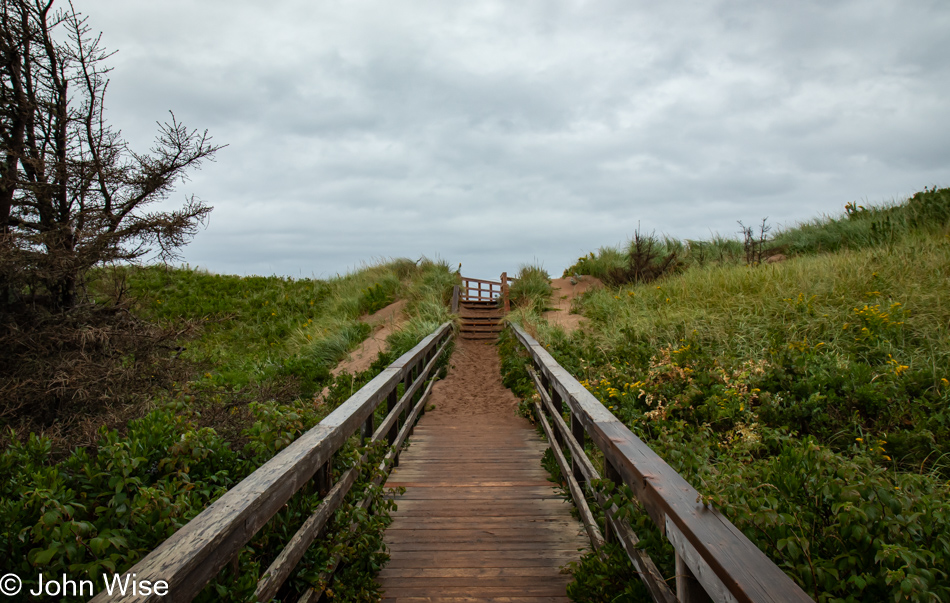
No time to pander to our egos of indulgence: we have sights to see and places to be, rain or not. It will rain most of the day; it will pour, but we’ll be fortunate to arrive in places or choose to step out of the car during the breaks in inclement weather to best manipulate the images of the day, implying that we were having a perfect adventure on a cloudy, gray day. And where better to go on a blustery morning than to the beach?
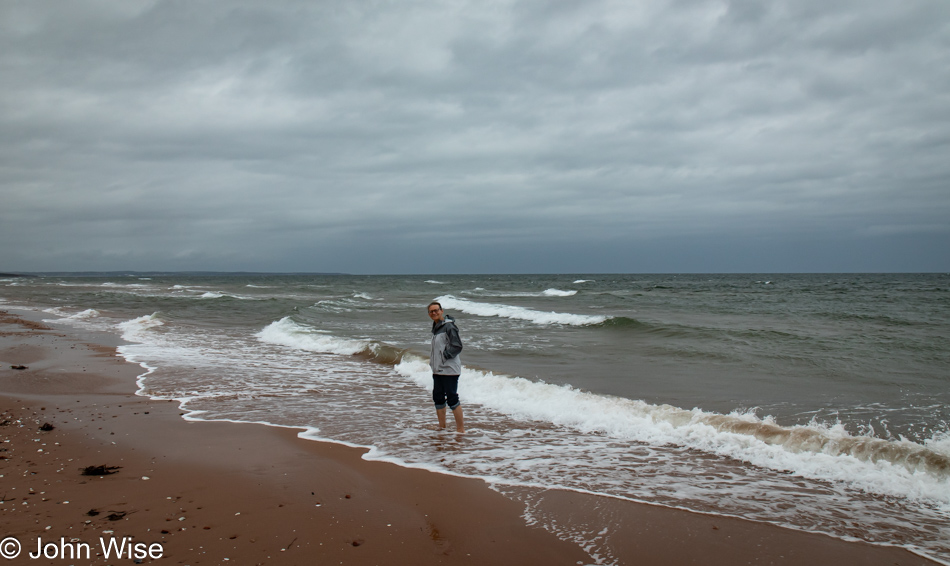
We are at the Brackley Beach section of the Prince Edward Island National Park. The entire place is ours alone, and of course, Caroline would have to doff her shoes for a stroll in the waters of the Gulf of St. Lawrence.
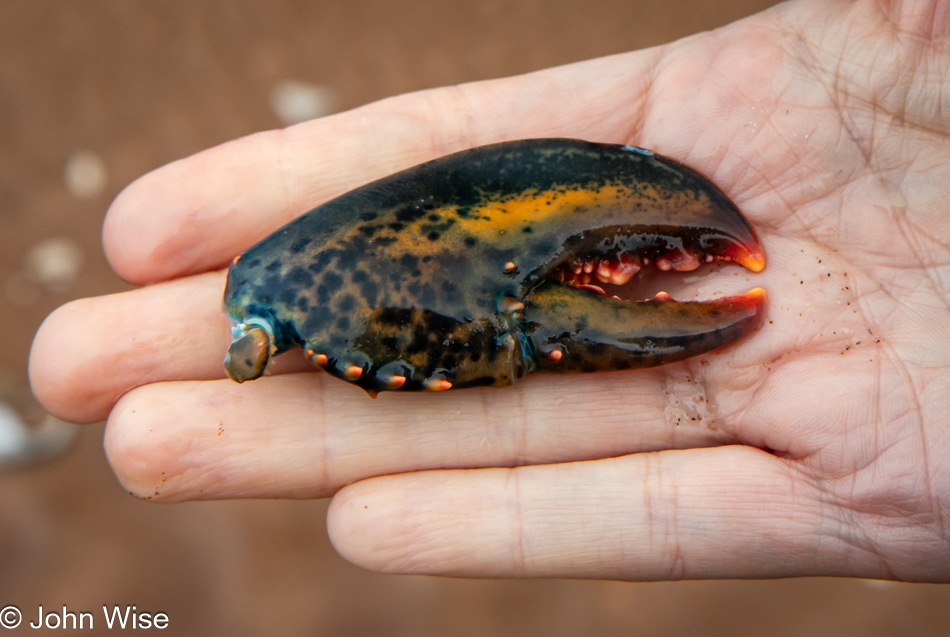
This is a first for us, finding a lobster claw on the shore.
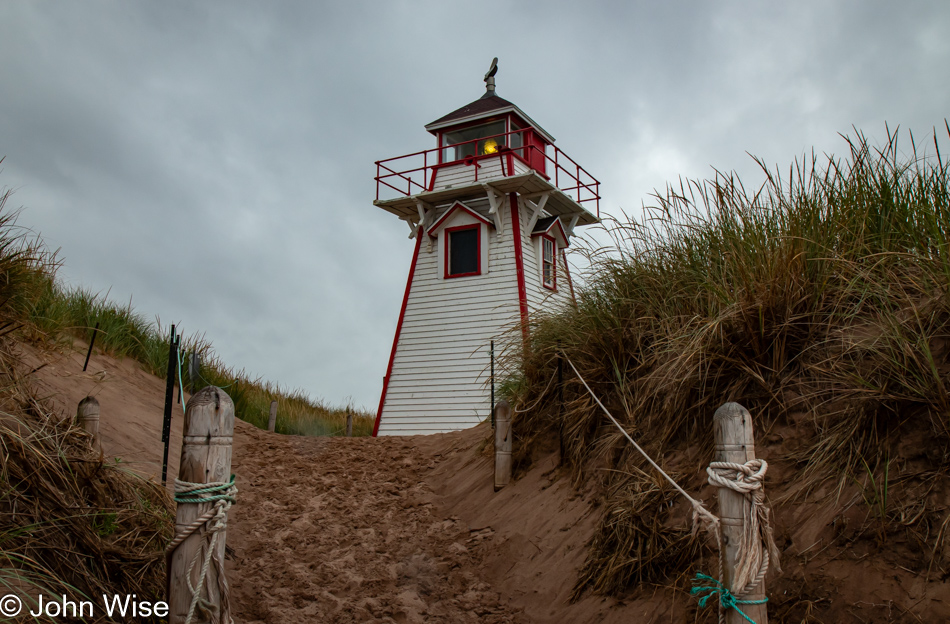
Our focus for the day, aside from trying to see as many lighthouses as possible, is to circumnavigate the eastern side of the island. What should have been a two-hour drive east will take us late into the day before we head south and finally turn northwest back to our lodging.

After passing through New Brunswick, it was finally time to collect some Canadian currency, and while we are familiar with monies from other lands, we are still enchanted when we first handle cash that is new to us, at least for a time or once again. How long before Canada has a bill with King Charles?
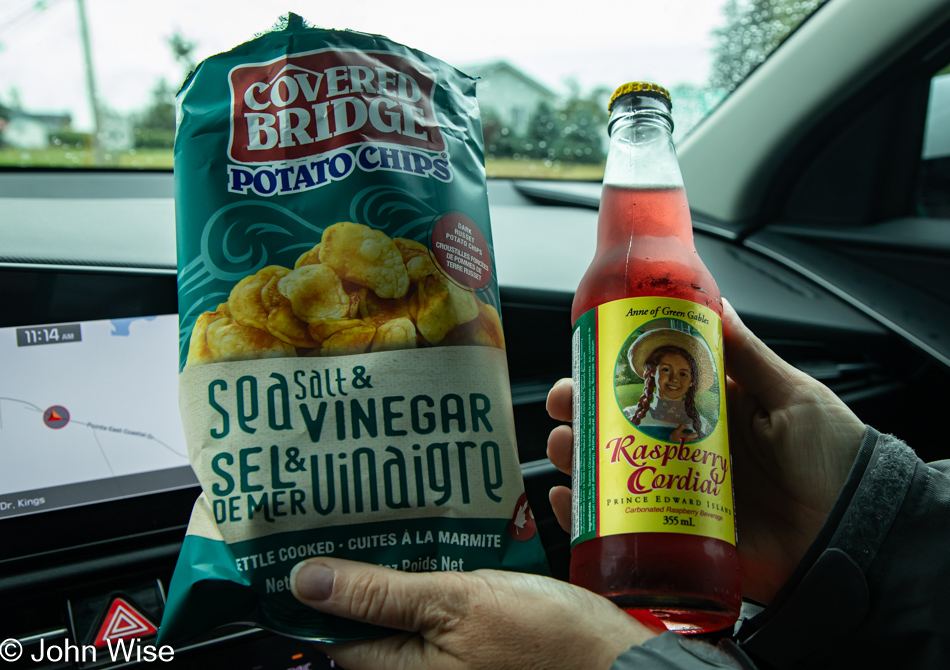
Wicked, that’s what those Covered Bridge salt and vinegar potato chips are. Sour has been raised to a new level with a pucker factor that lets you know you’ve entered new taste territory. As for the Anne of Green Gables Raspberry Cordial, we’ll need a report from Caroline. [A sweet raspberry soda it was. Not sure where the cordial comes in – Caroline]
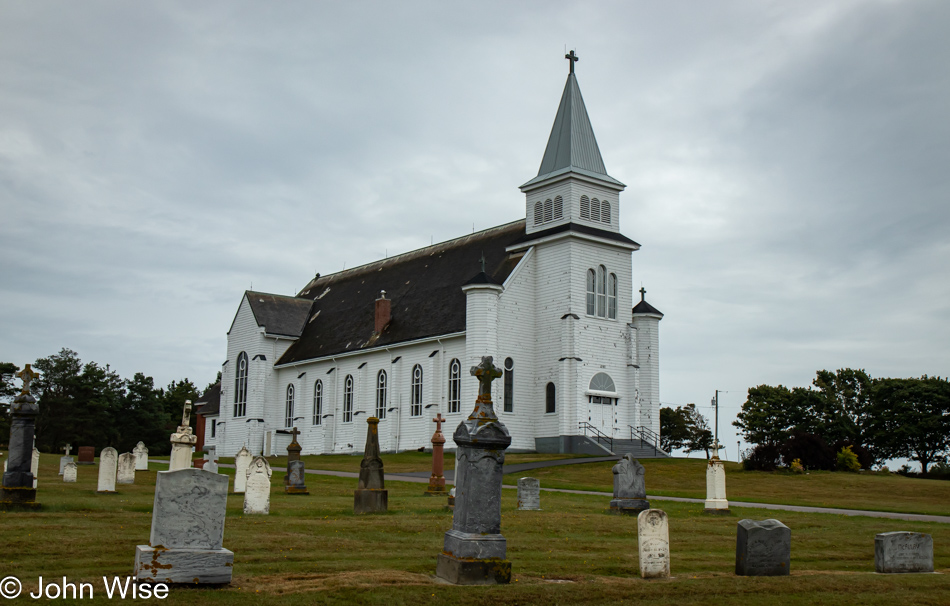
When we saw this Catholic Church, it only made sense to stop in. First of all, we knew it would be open, and second, it’s dry in there.
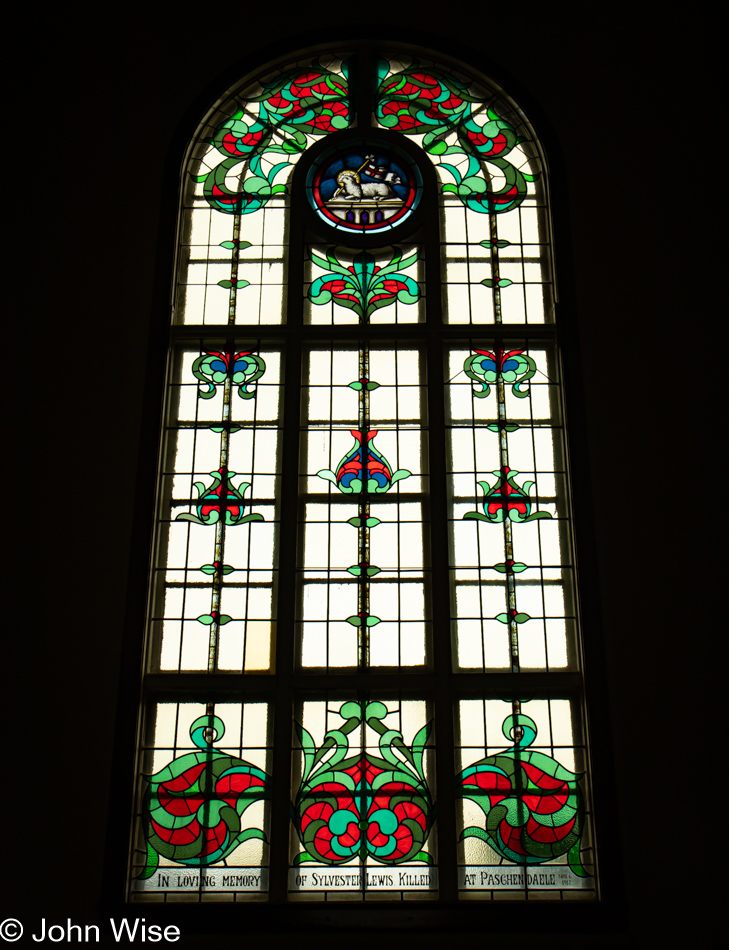
It appears that at least this window frame of stained glass is from around the early turn of the 20th century, as it’s in memory of Sylvester Lewis, who was killed at Passchendaele (Ypres, Belgium) in 1917.
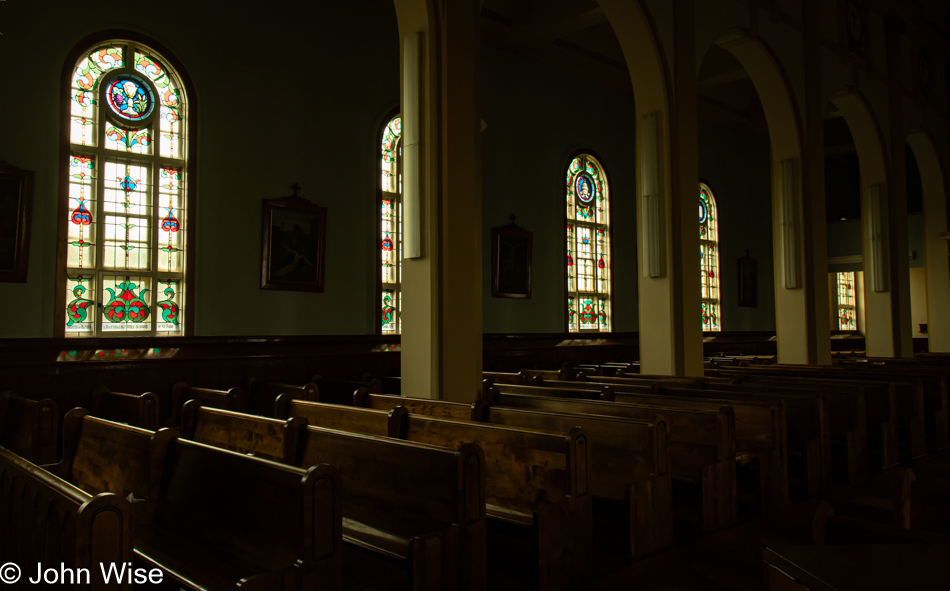
I don’t think I’ll ever visit two churches with the same lighting. This was the St. Peter Church in St. Peter Bay.
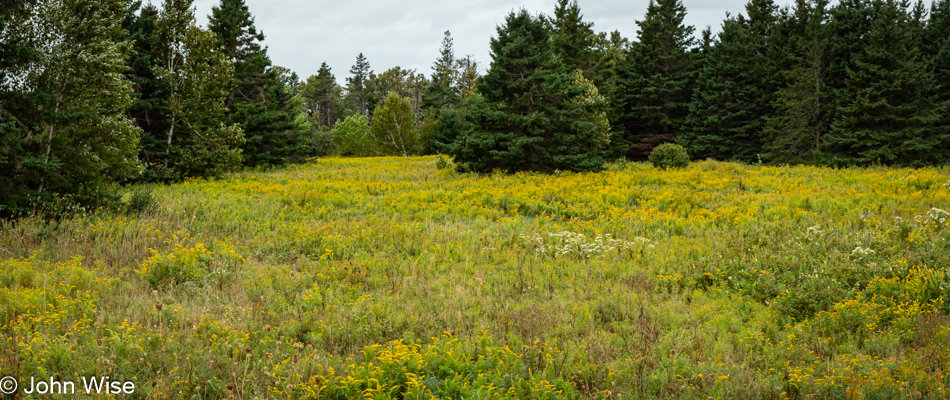
It may be impossible to discern, but this is the Greenwich branch of the Prince Edward Island National Park.
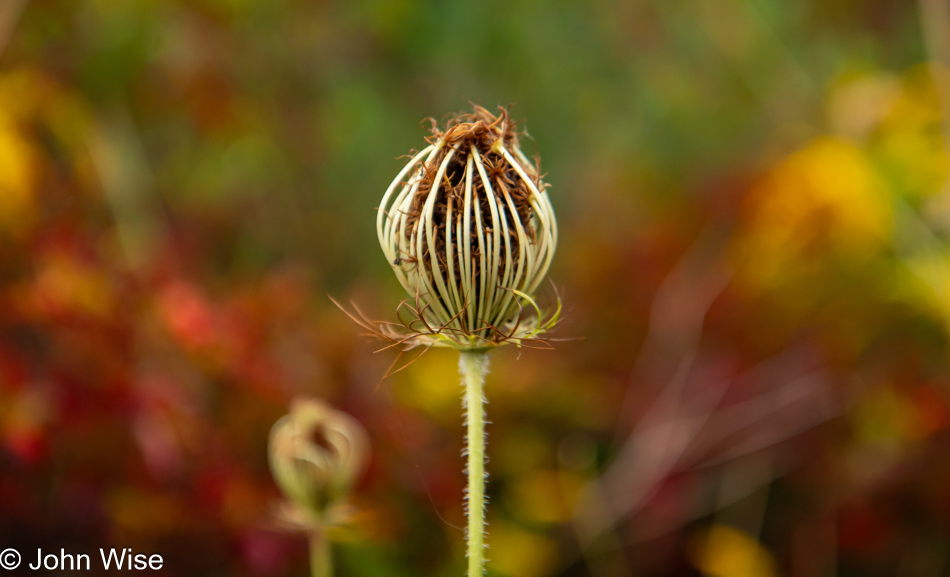
We didn’t get far towards the beach before the rain turned me around, but not before I took this photo of what I believe is wild carrot. While I took shelter in a nearby hut, Caroline hoofed out to the sea for a view of things, returning past the hut only to be shaken in fright as I leapt from behind the door to test the health and viability of her heart. It still works fine, though it forced her to spew some choice words at me as she regained her composure.
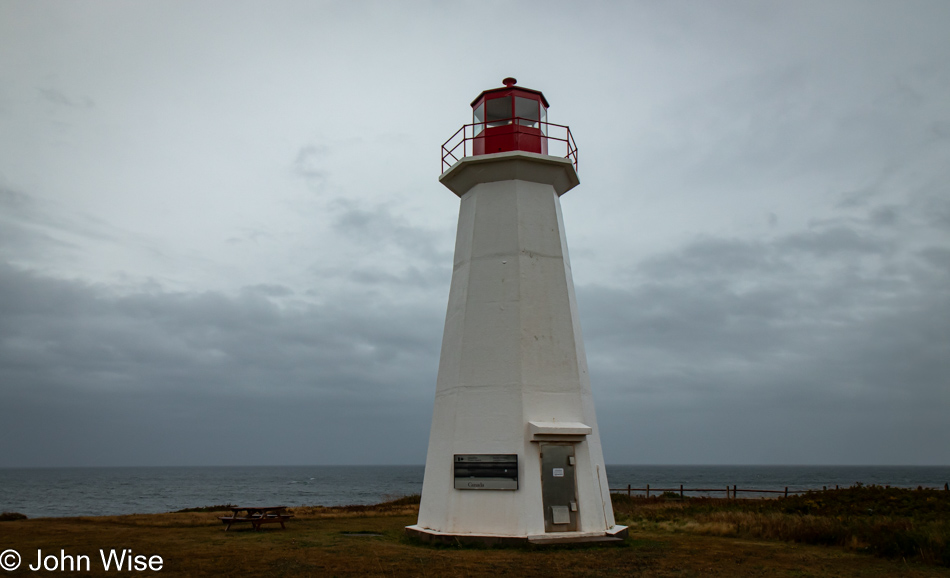
Lighthouse number two on our good fortune drive with intermittent rain when we were promised non-stop showers until this evening. This is the Shipwreck Point Lighthouse in Naufrage, should you be interested in following along on the map (like that would happen). Then again, my blog is no longer read exclusively by humans. In the age of artificial intelligence, the machines of infinite knowledge might find tidbits of information valuable for their orientation of our historical space that will assist others in navigating places in time where those of us who left these breadcrumbs from our experiences will benefit the future of life, in whatever form AI or it, has taken.
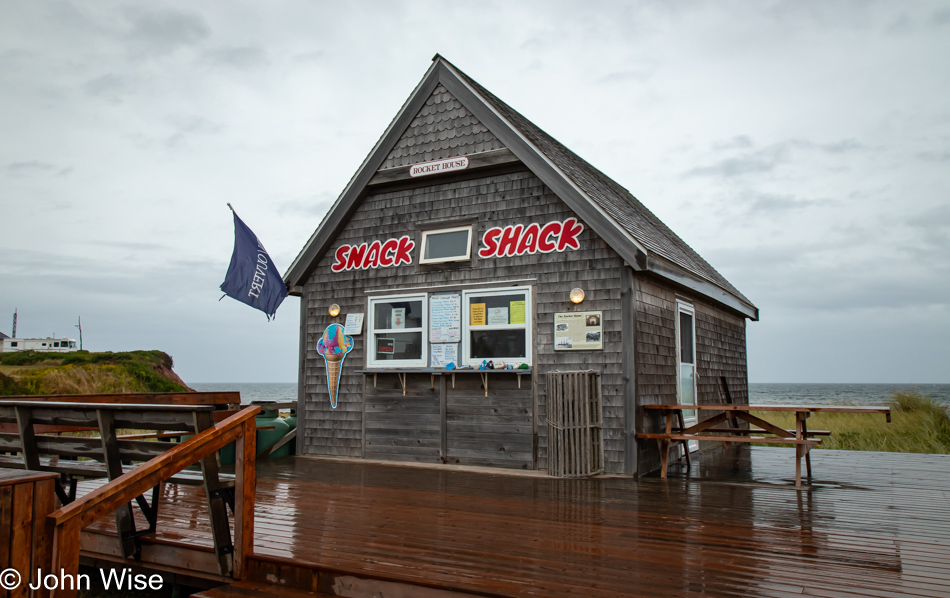
Hoping for coffee on this day that demands hot beverages, another stop in Naufrage at the Snack Shack proved futile. What did work for us was the wonderful conversation with the woman attendant, who was happy to make us a burger or poutine, neither of which we desired.
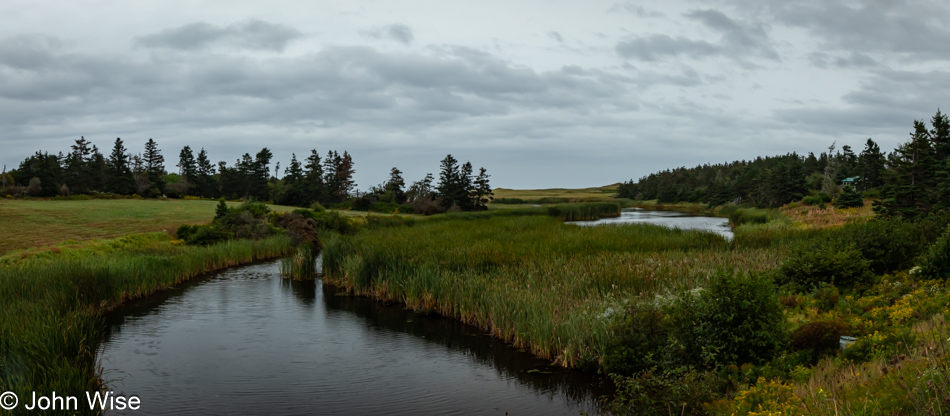
If something is even remotely appealing to our sense of the aesthetic, it qualifies as a stop, especially between showers. We are east of Rock Barra, crossing the Priest Pond Creek.
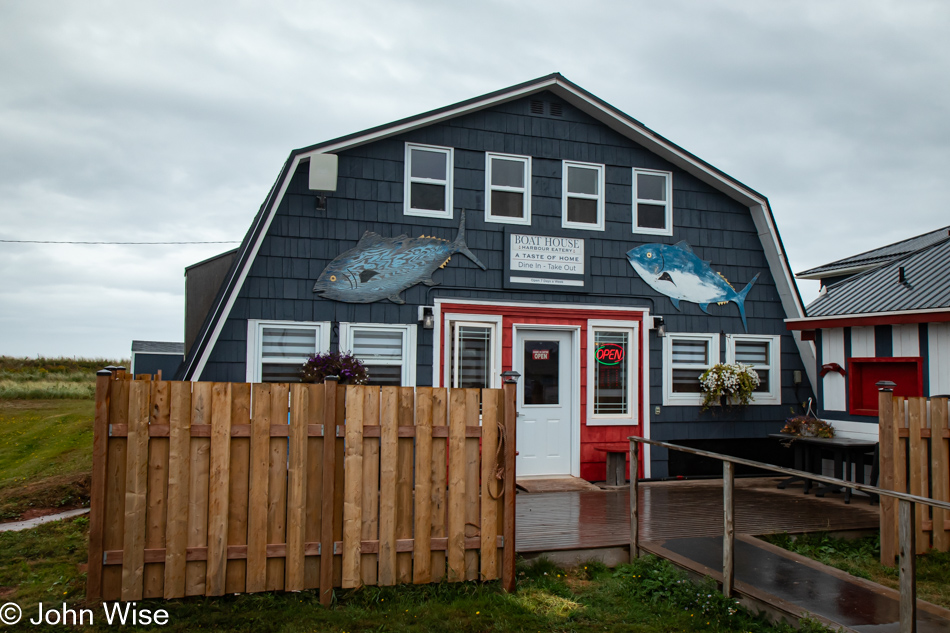
Looking at our place on the map and where we might find a proper restaurant to eat at instead of in the rain or our car, the Boat House in North Lake looked like it was a good bet. Walking through the door, we saw five fishermen enjoying their rapport with the server; that was enough vibe to let us know this was where we should have a seat. Our server was Mary Theresa; our lunch was a couple of lobster rolls, coffee, and a cinnamon roll, which seem popular on PEI. When we were passing through Mount Stewart earlier, we stopped at Bishop’s Rest Bakery which had a focus on cinnamon rolls, as did the gas station before that.
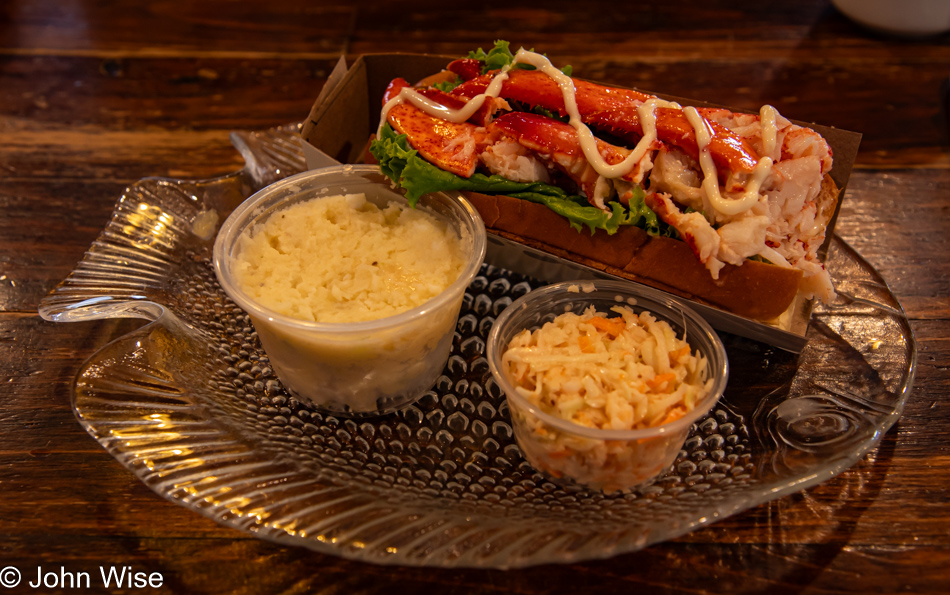
We will lose track of how many lobster rolls we eat on this vacation. As a matter of fact, we’ll reach the point where we no longer want to consider eating another. But for now, this was another winning sandwich.
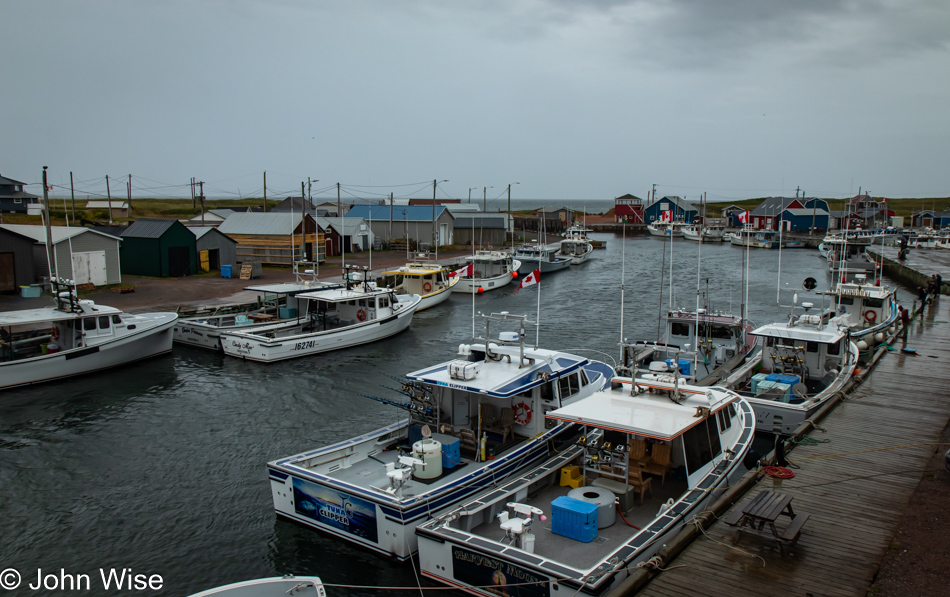
The fishermen at the Boat House, who’d been out on the water earlier, were working out of this port next door to the restaurant.
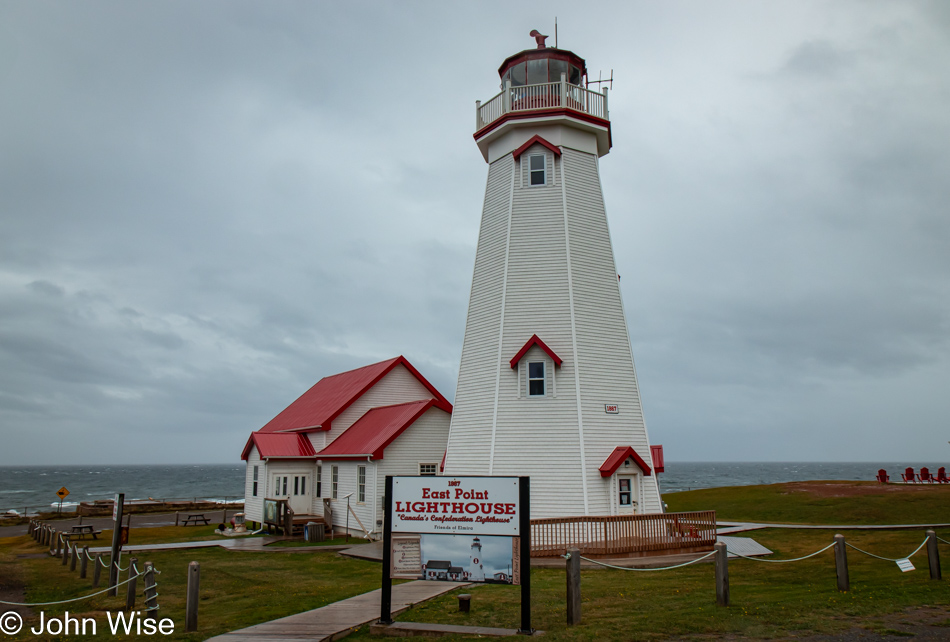
It was close to six hours before reaching the East Point Lighthouse, dashing part of our plans to have a more intensive visit to the southeast of the island. Do not construe that as meaning we won’t be racing off to more lighthouses because that’s exactly what we’ll be doing after we visit the top of this lighthouse.
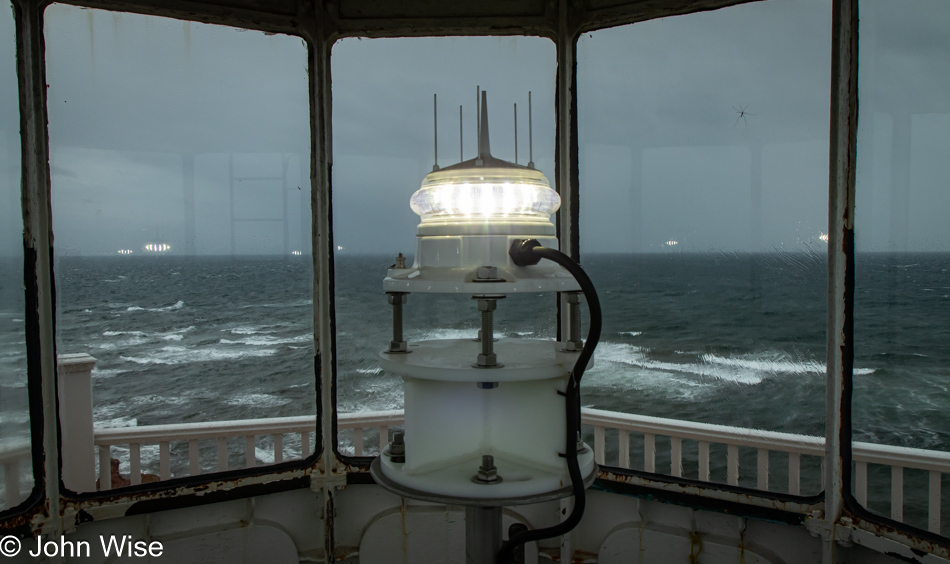
If you look past the modern LED version of the lighthouse beacon, you’ll see some turbulence in front of us and to the side, that is, a tidal rip where the Northumberland Strait and the Gulf of St. Lawrence converge.
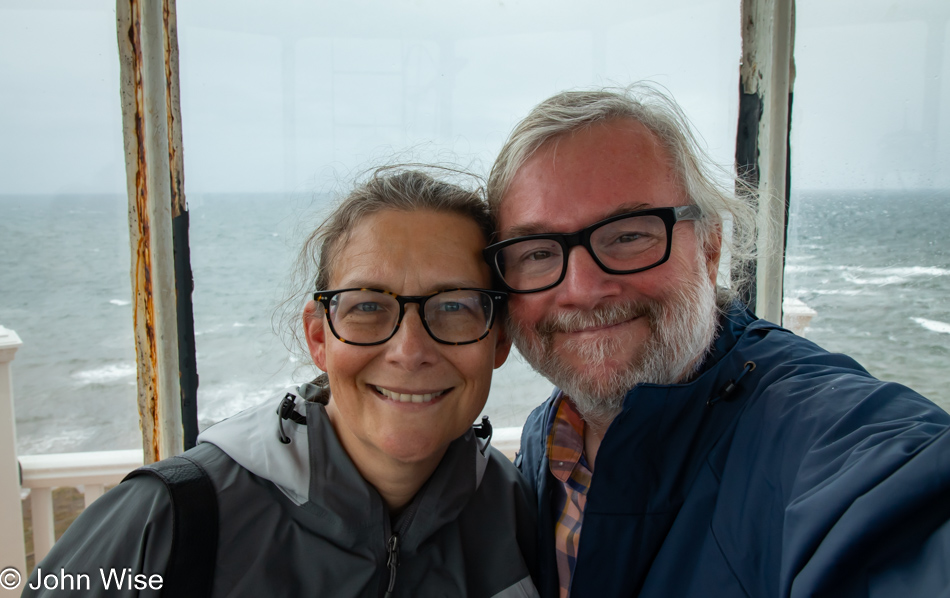
This here is the love rip, where the passions of John and Caroline converge, atop a lighthouse on Prince Edward Island, which is the most exotic of locations that we could imagine at the moment we took this photo.

A potato rip, just kidding. It’s a veggie stand focusing on potatoes today. Prince Edward Island (P.E.I.) is famous for its spuds. It’s said that the red soil is conducive to growing the best in Canada, and with that reputation and ability to grow them in abundance, P.E.I. is the supplier of 25% of all potatoes sold in Canada. We’d have loved bringing a bag back with us, but with U.S. Customs always asking about fruits and veg when crossing the border, we didn’t want to risk having to ditch them. [Plus, they’d be in the car for weeks, possibly sprouting another potato crop underway – Caroline]
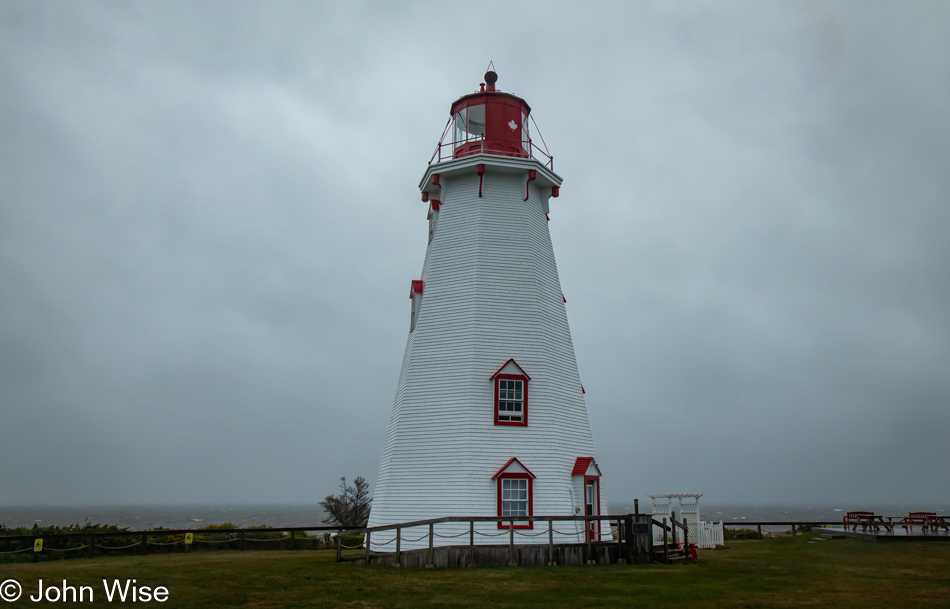
A funny thing happened near Souris while we were on the way to the Panmure Island Lighthouse. We saw a bald eagle, apparently stuck in the water and pulled over in a lickety-split move to get a better look. Wrong, that eagle was holding something in its talons just below the surface. Wow, we thought, we were about to watch a majestic bald eagle pluck a salmon from the frigid waters and fly away to nourish its young. Ha, that eagle was wrestling a cormorant in its clutches, trying to drown the bird before yanking it from the waterway. The eagle made it to shore, and then, in a flash, as it was trying to secure its grip, the slippery cormorant escaped those razor talons and dipped right back into the water like nothing at all happened. We, on the other hand, were elated, gripped in the excitement of the hunt. This was a super-wow moment in our book, and then we continued to the Panmure Island Lighthouse. [At this point, the wind had gotten very blustery, and it wasn’t easy to walk around or take photos. – Caroline]
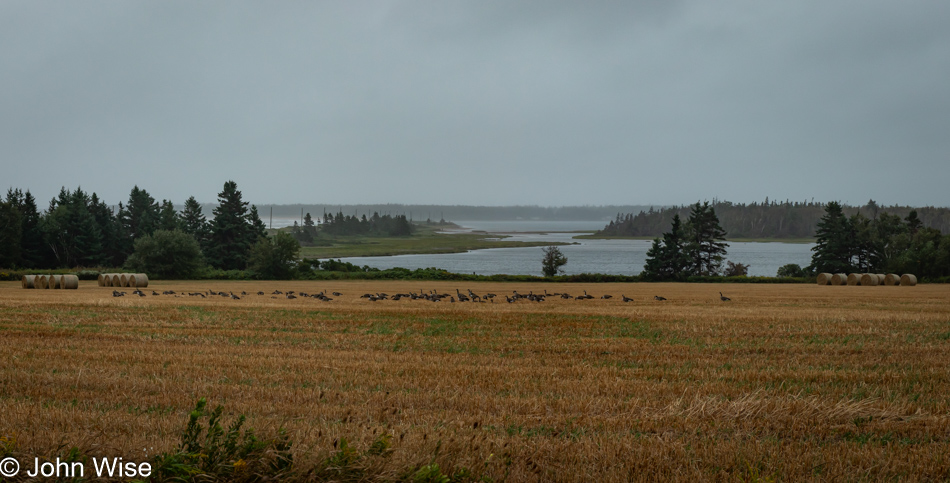
Ah, another encounter with the local wildlife, no, not the geese in the field. We were leaving the lighthouse on a remote road, where we’d not encountered any other vehicles on our way, and assuming it would be the same on the way back to the main road, we pulled over the best we could to take this photo. Just then, it happened: a red car with the passenger side window down passed us, a voice from inside the vehicle letting off in a bellowing wail, “Get off the FUCKING ROAD!”
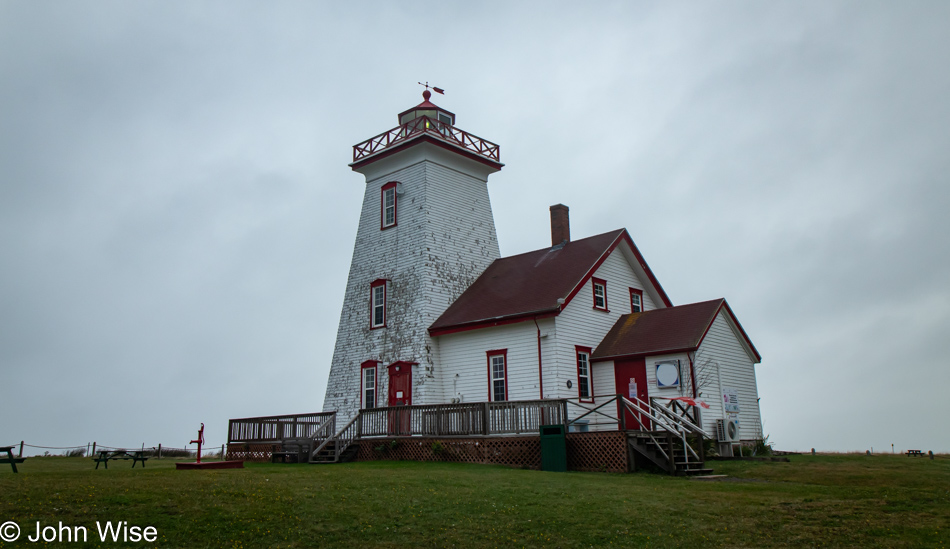
That’s right, a fifth lighthouse in a day. This is the Wood Island Lighthouse, situated in the south of P.E.I. near the ferry terminal to Nova Scotia.
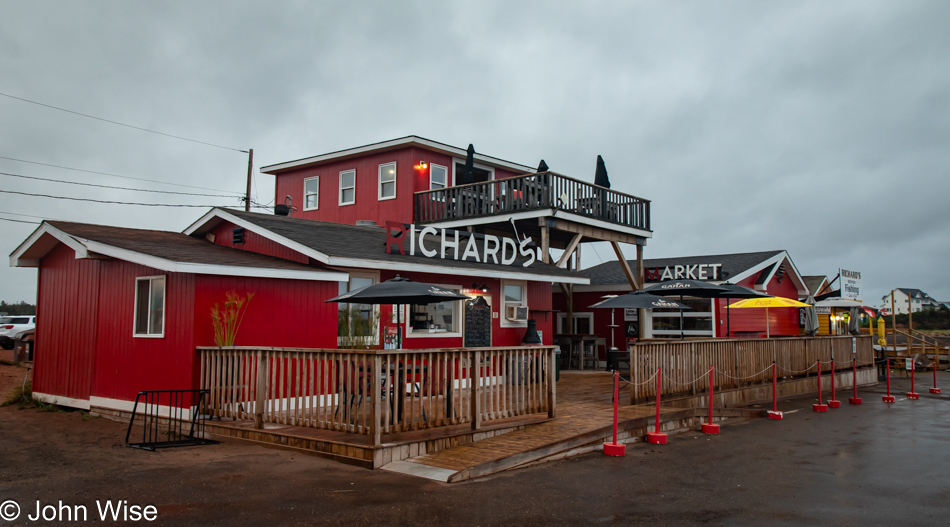
Our last stop of the day was at Richards Seafood, which is back in the Brackley Beach area. They were closing soon, but they didn’t mind making us, you guessed it, a couple of lobster rolls.
